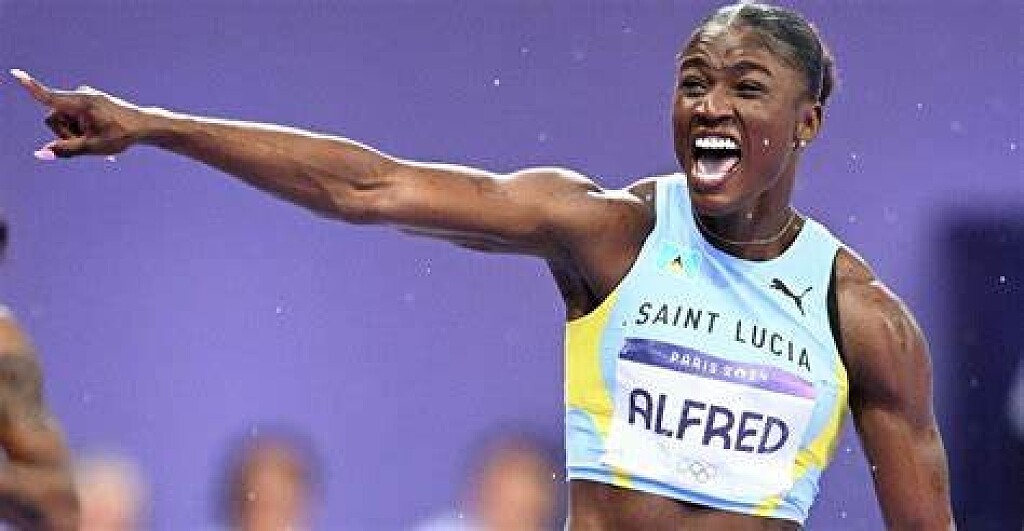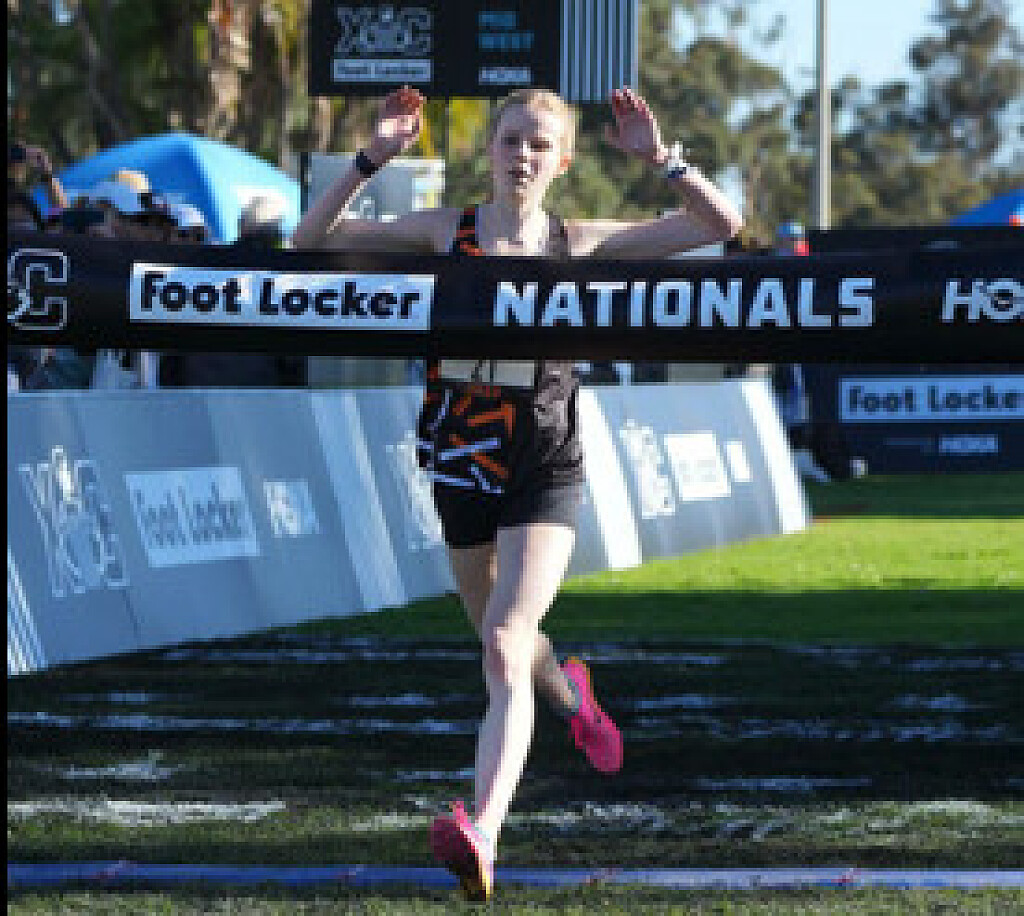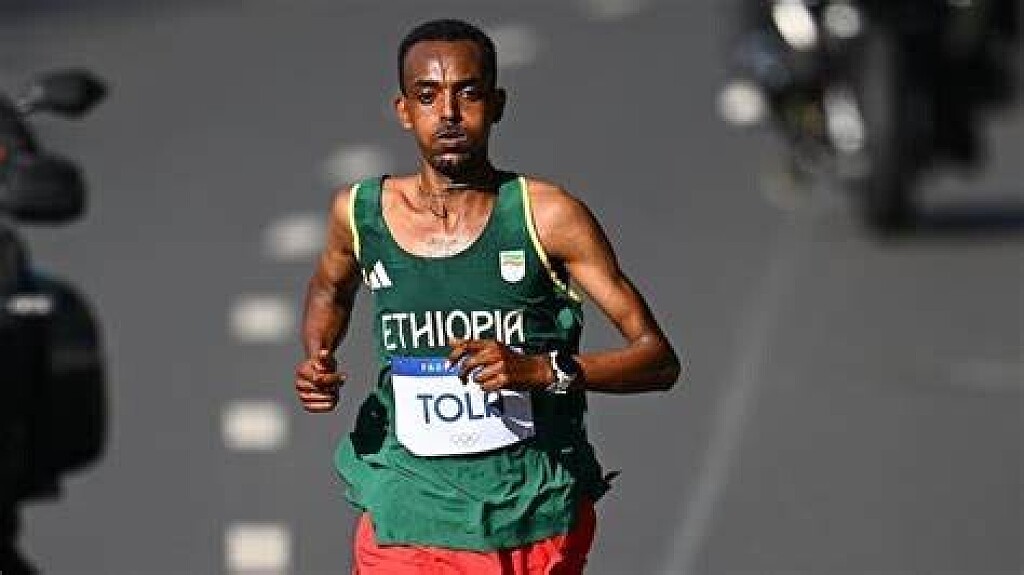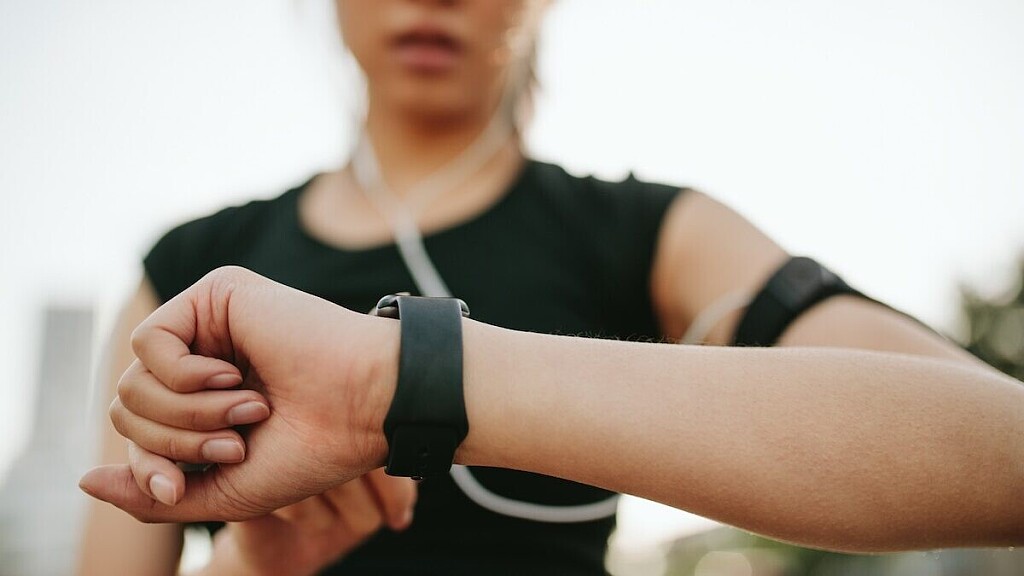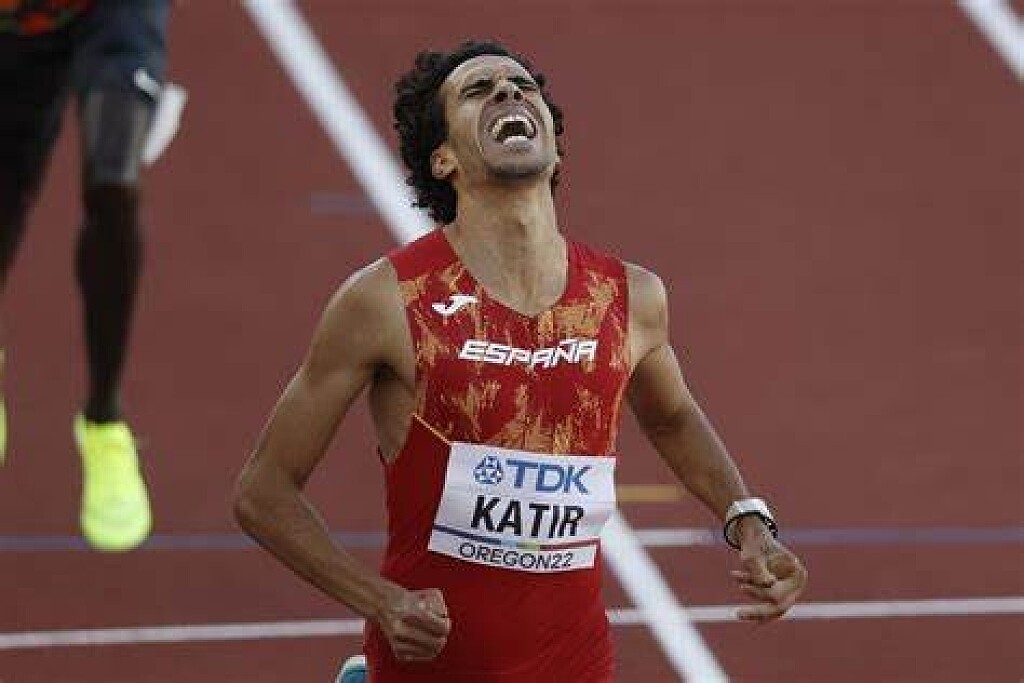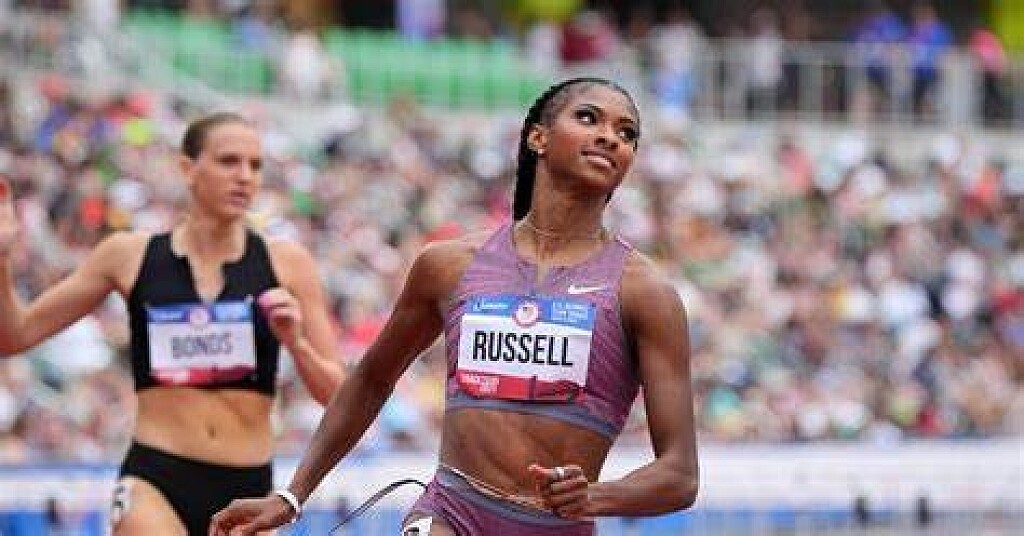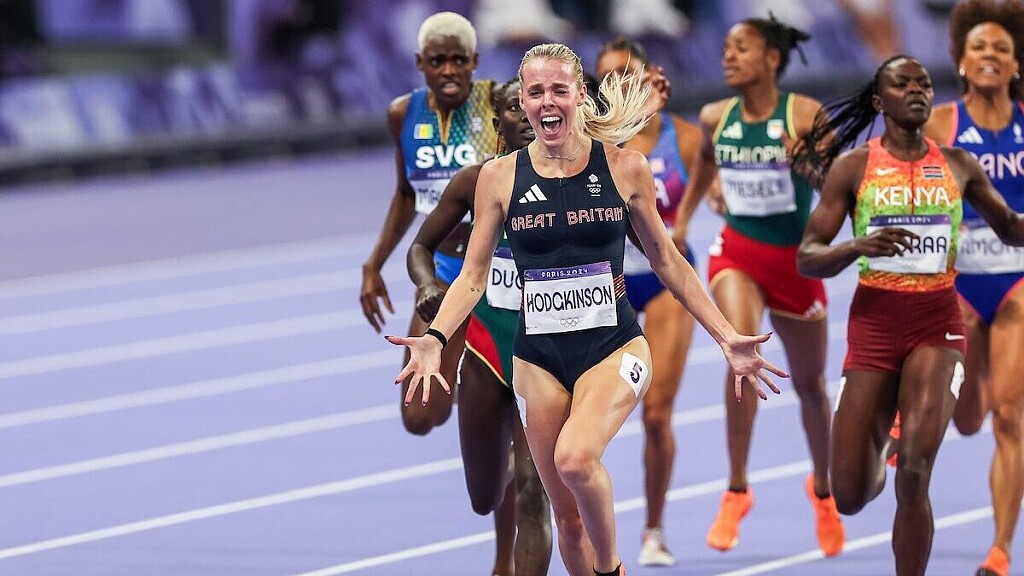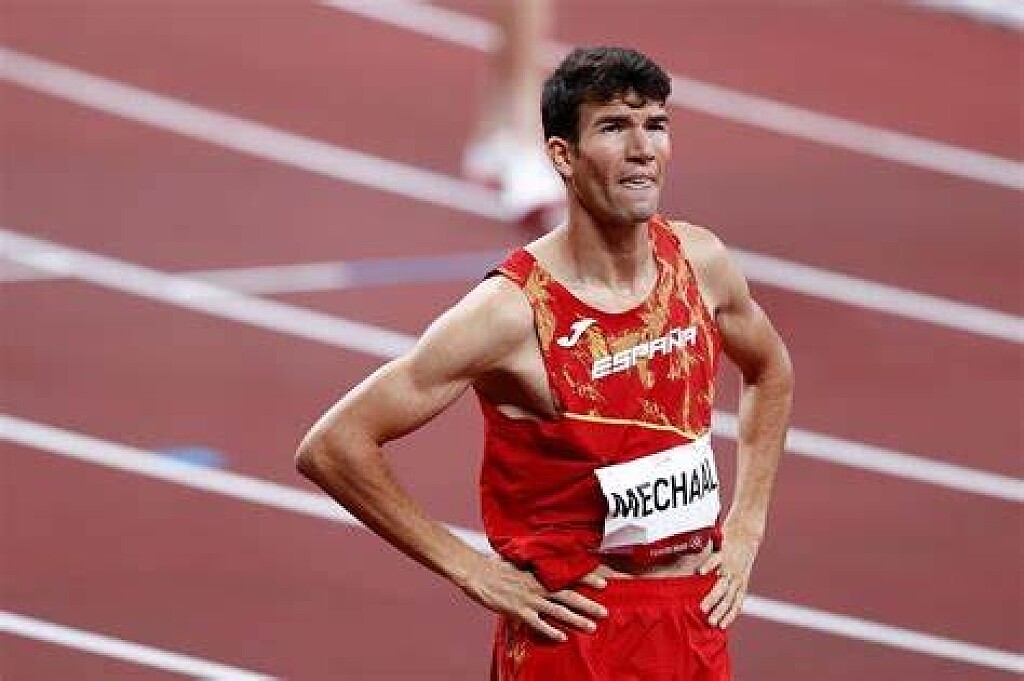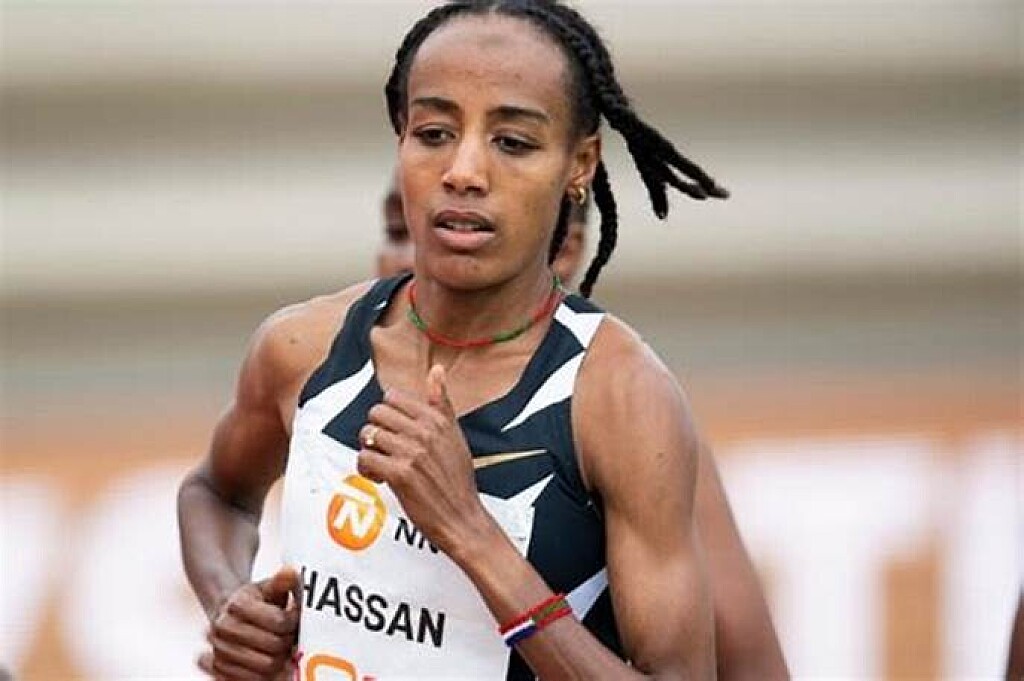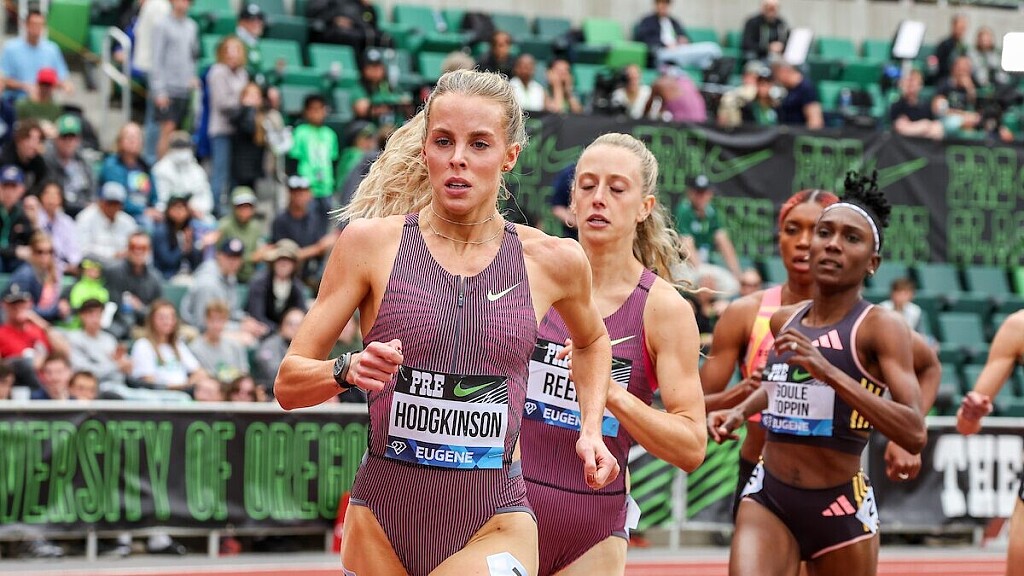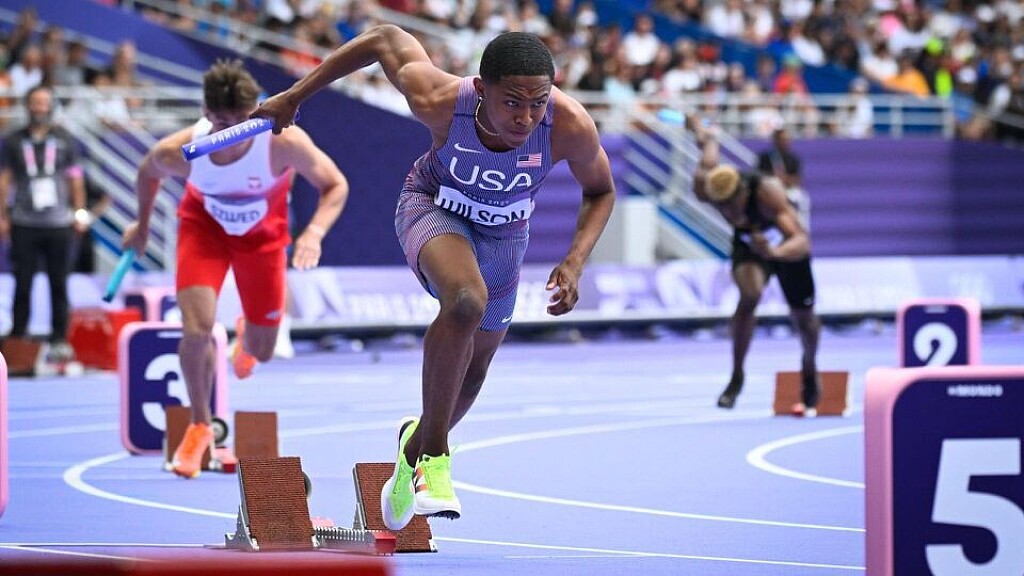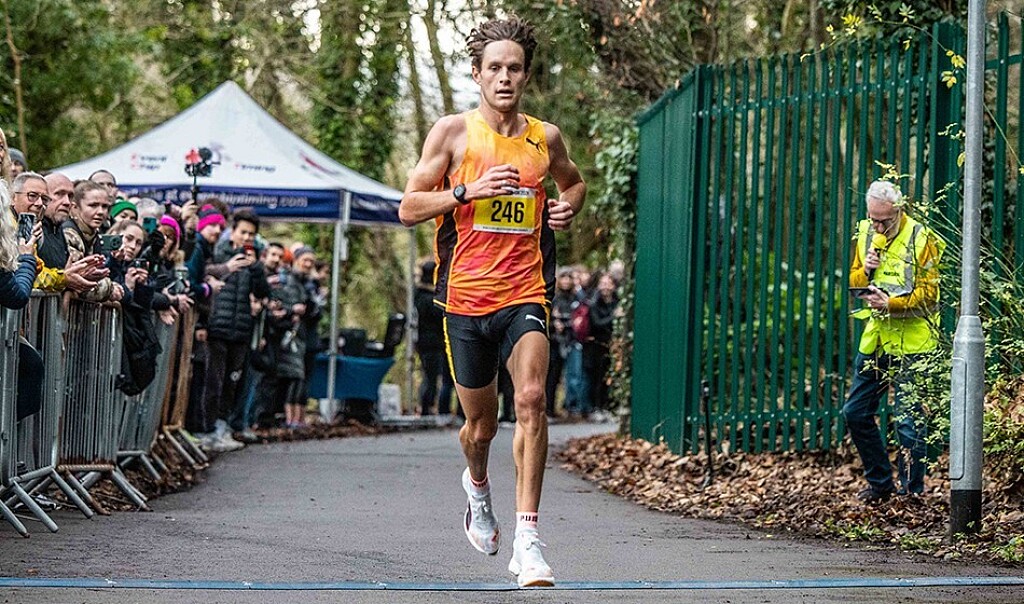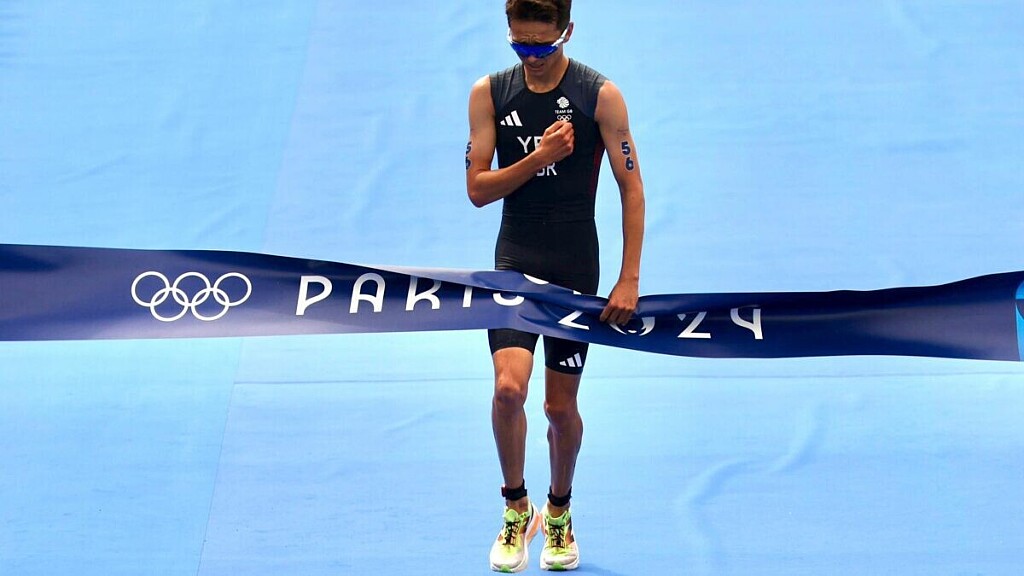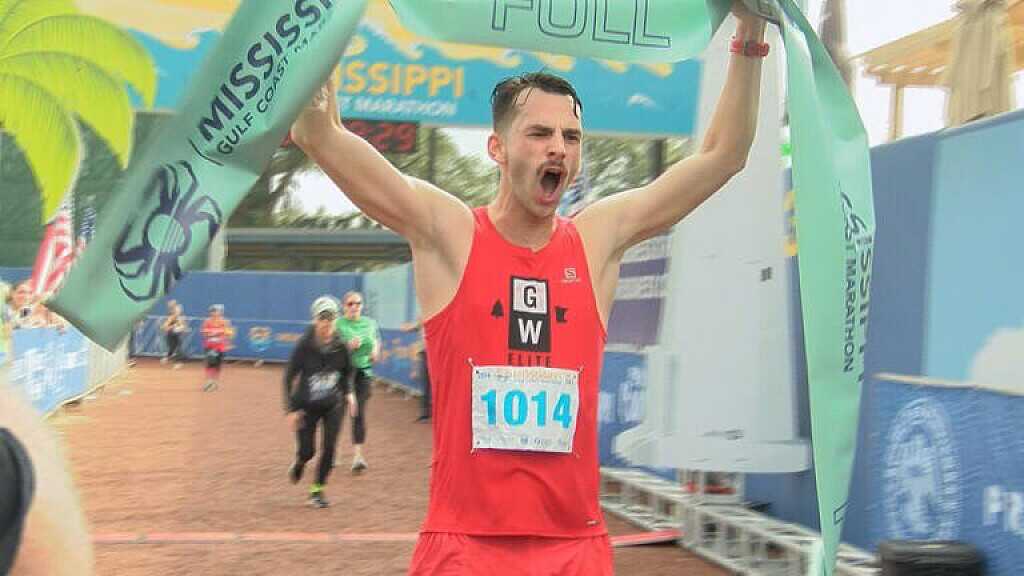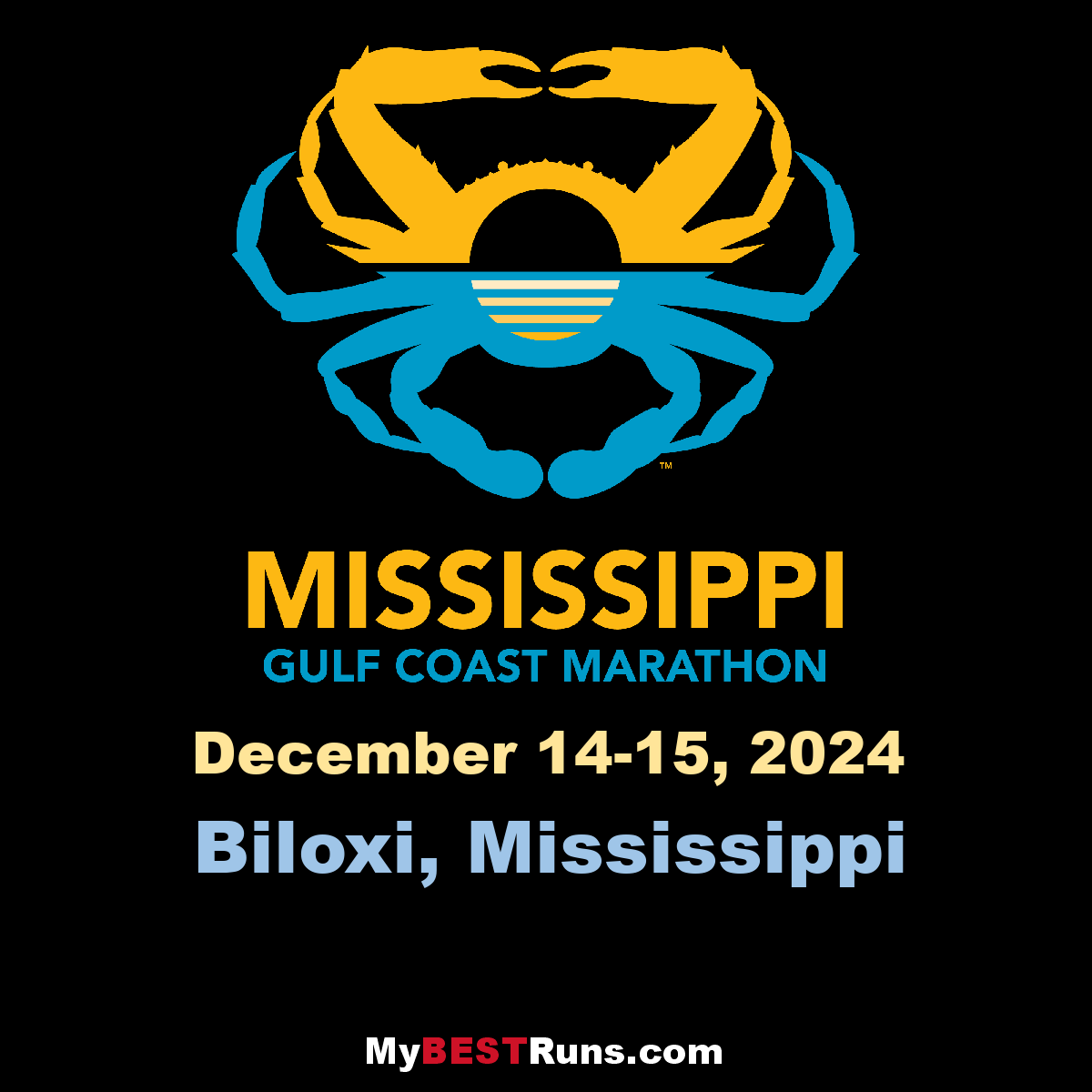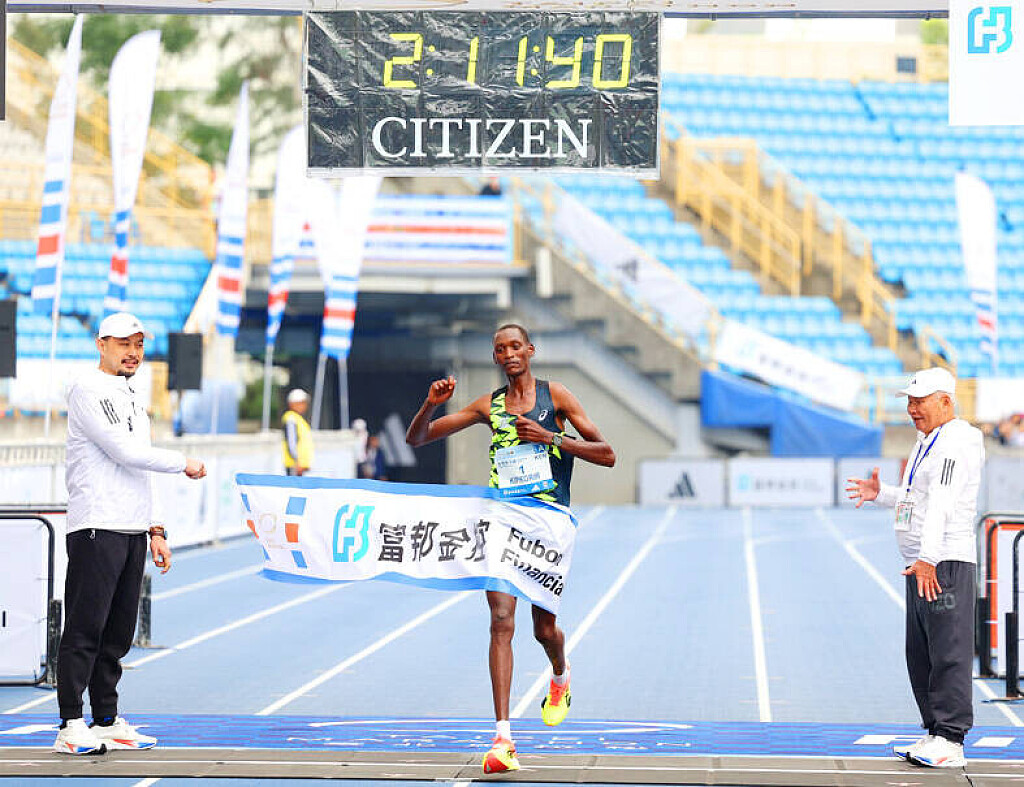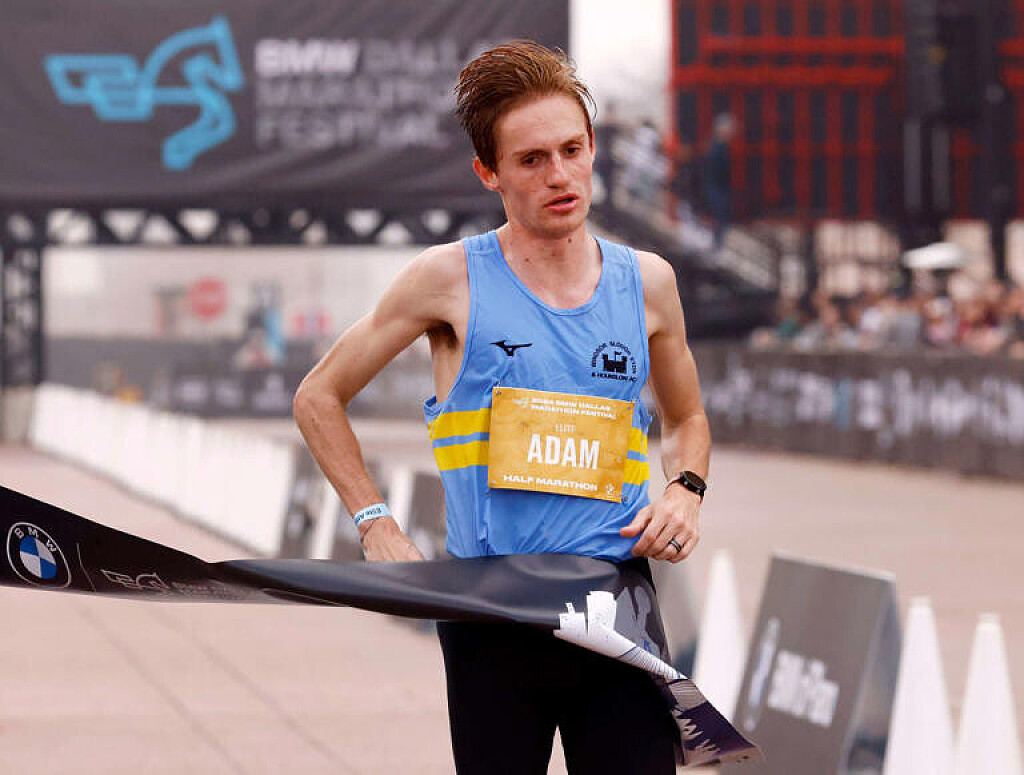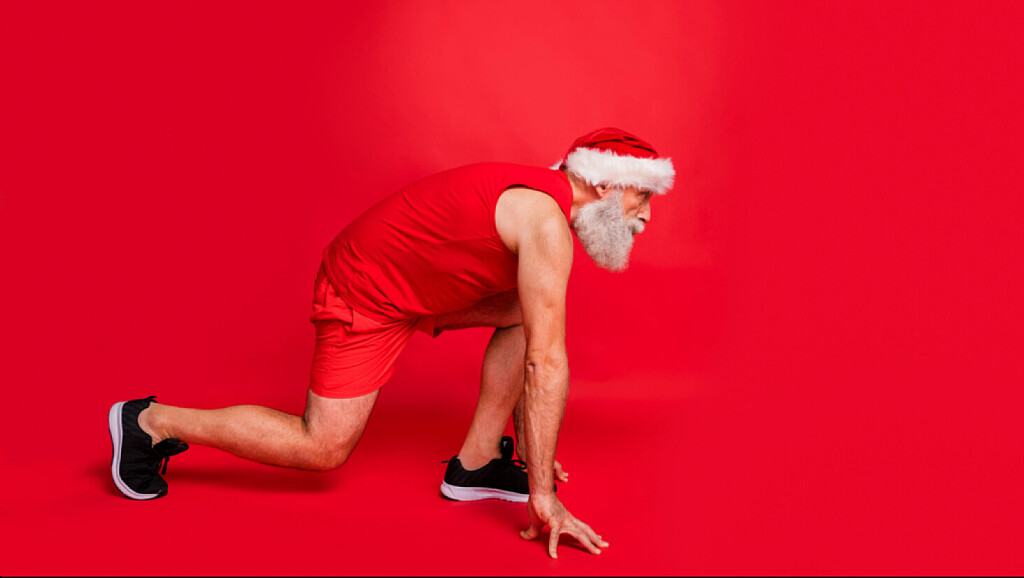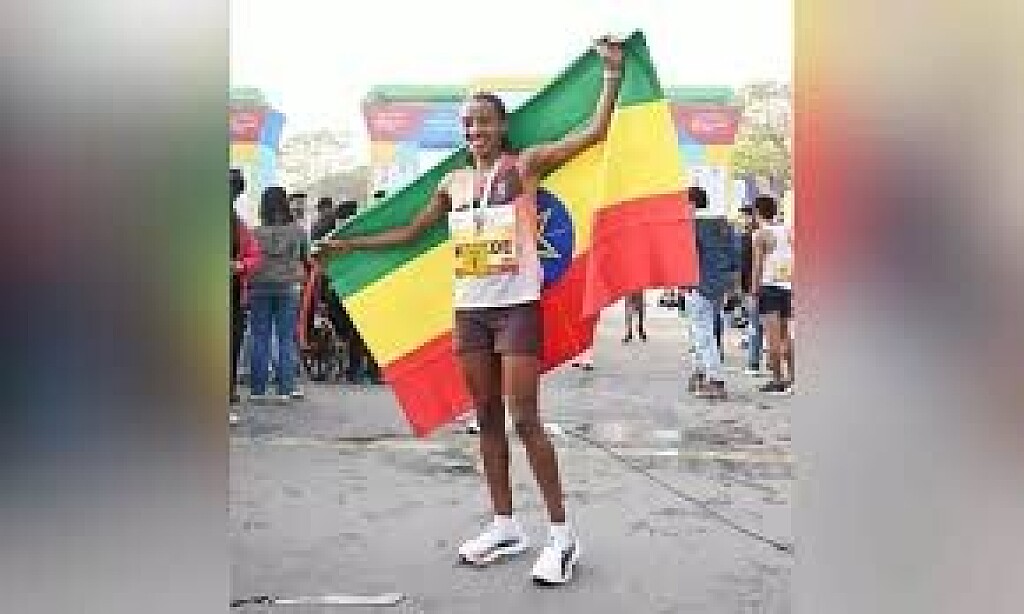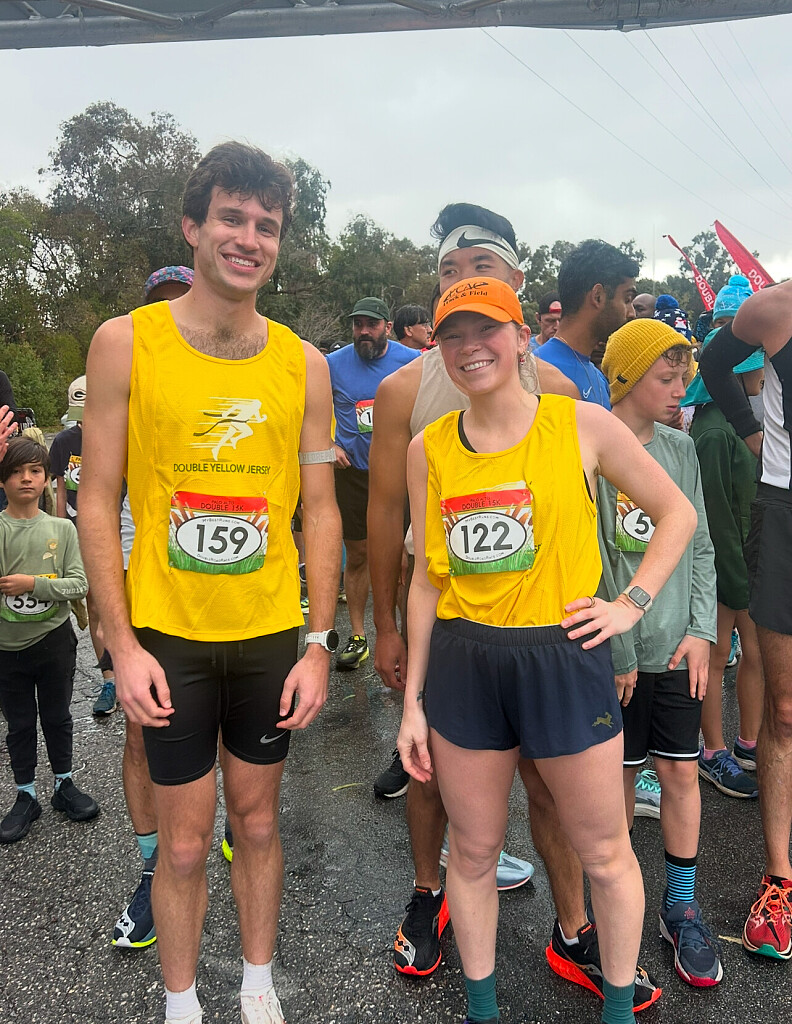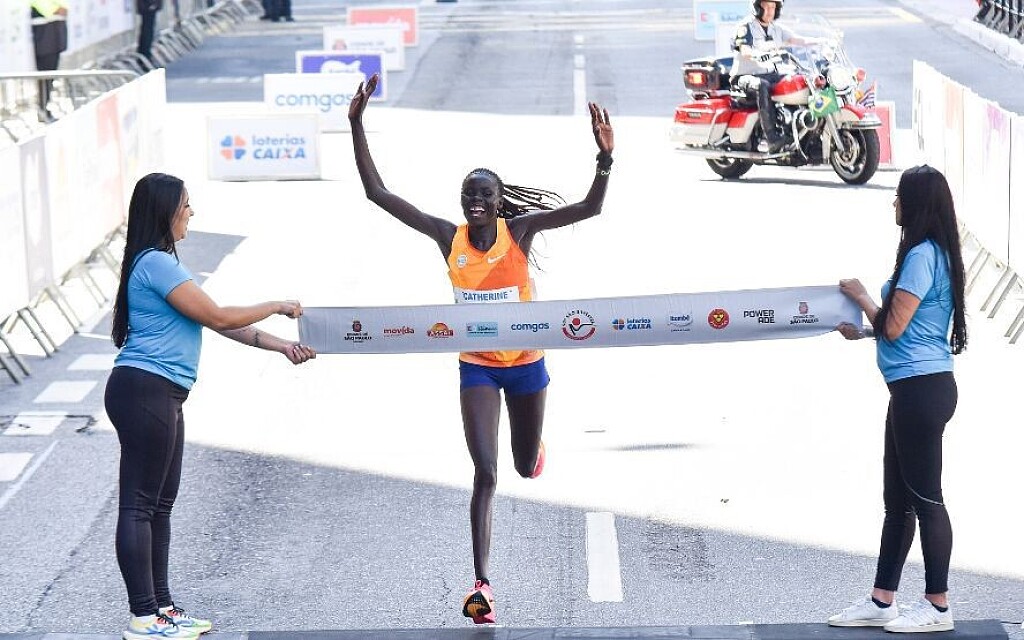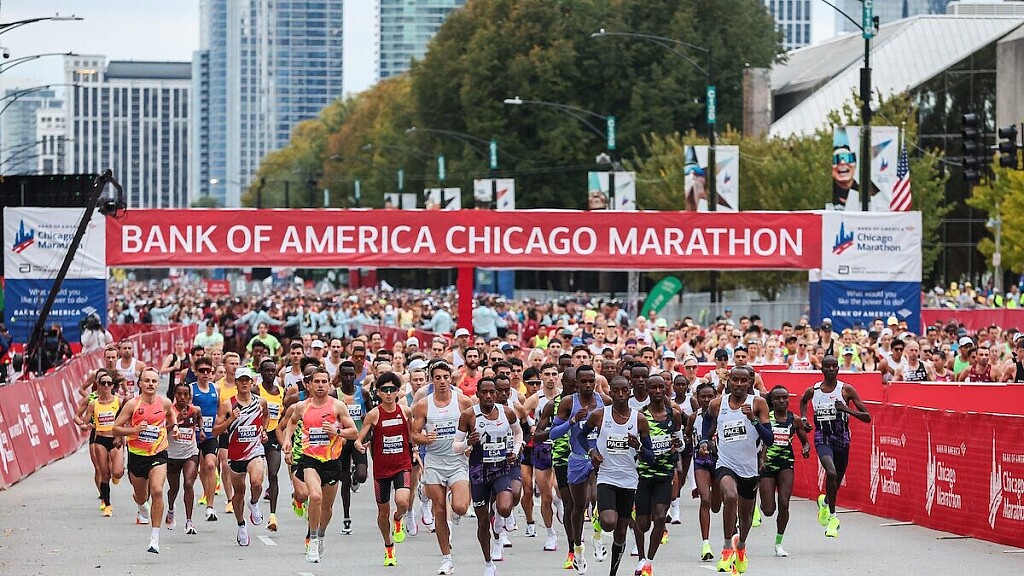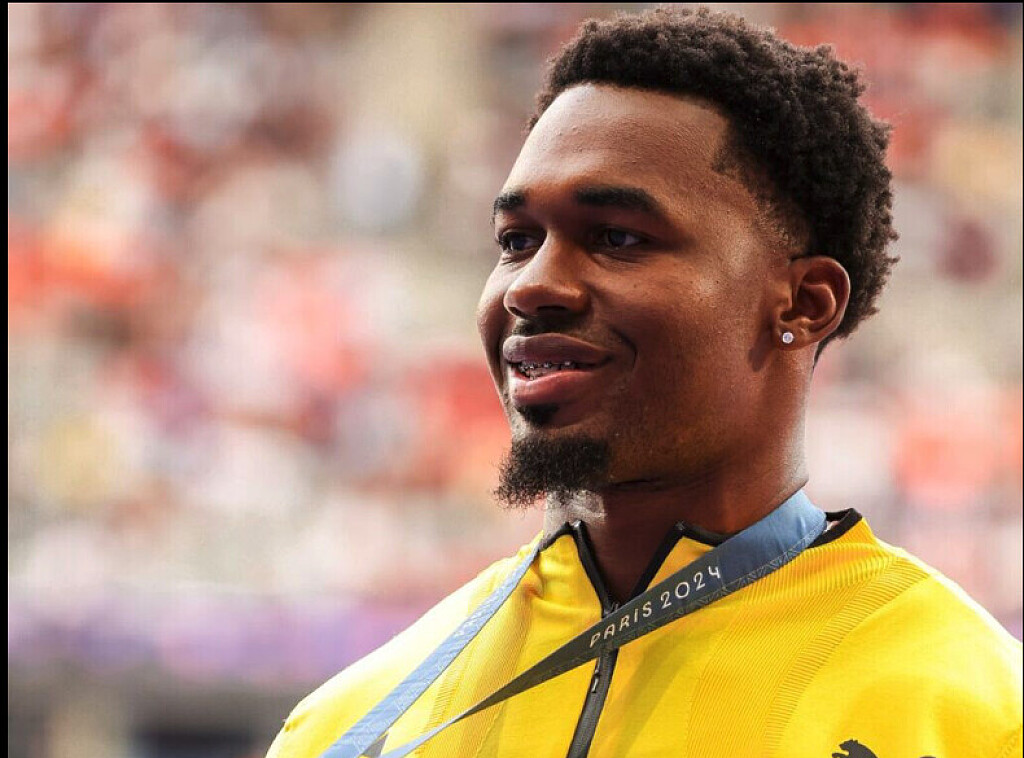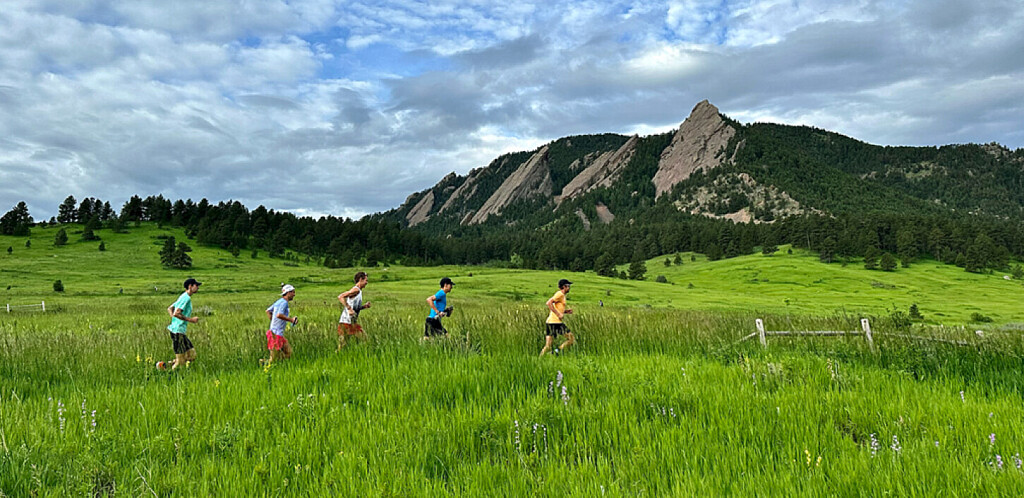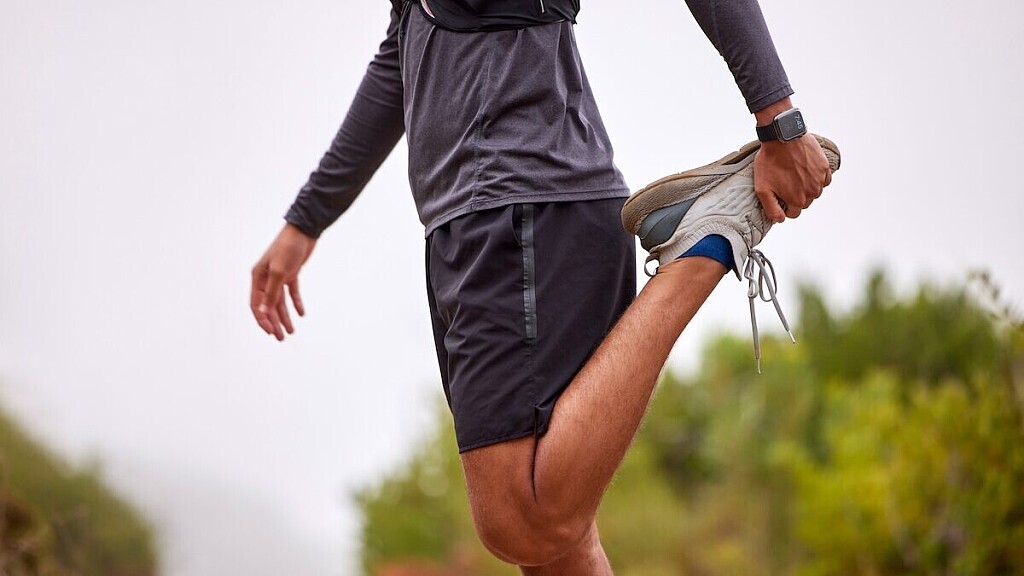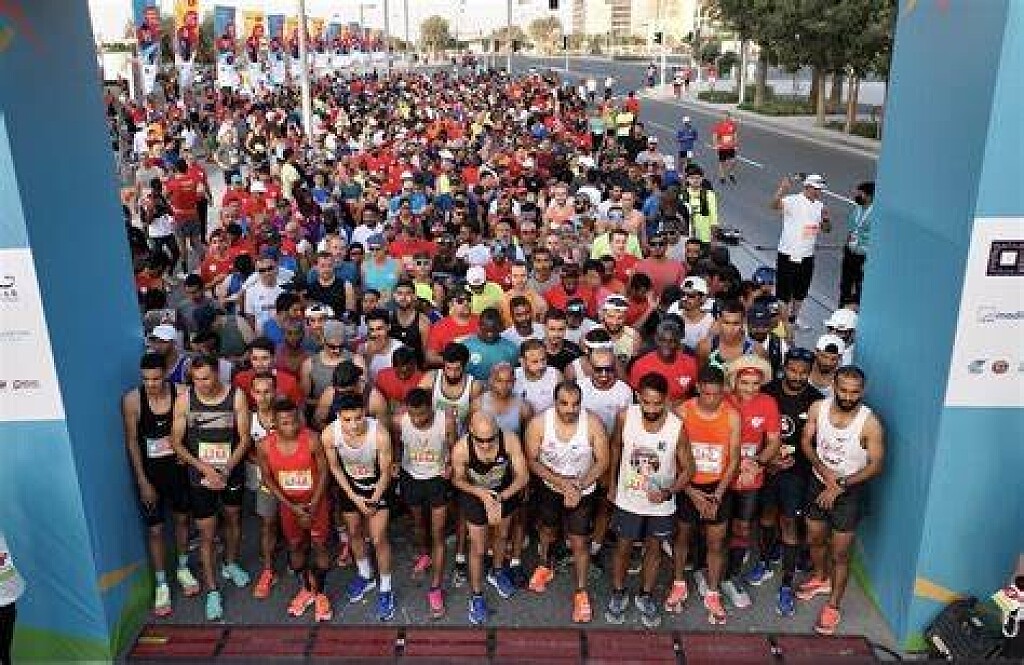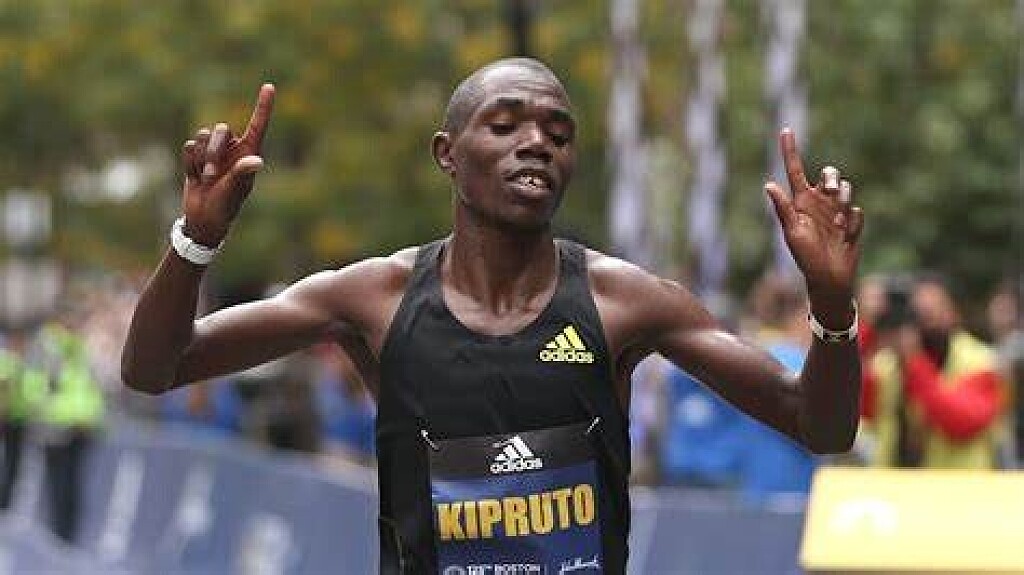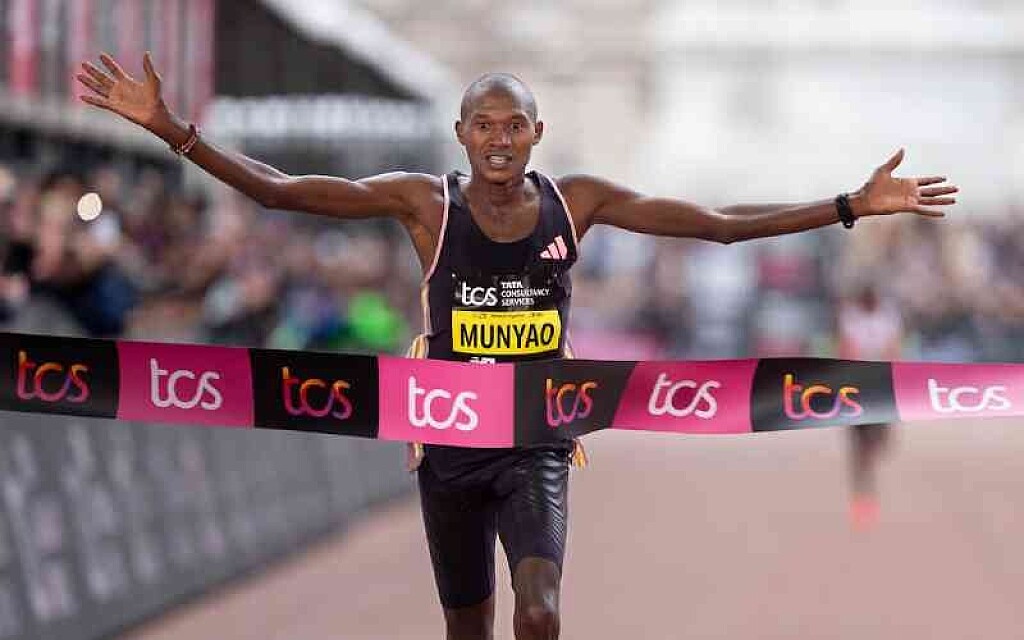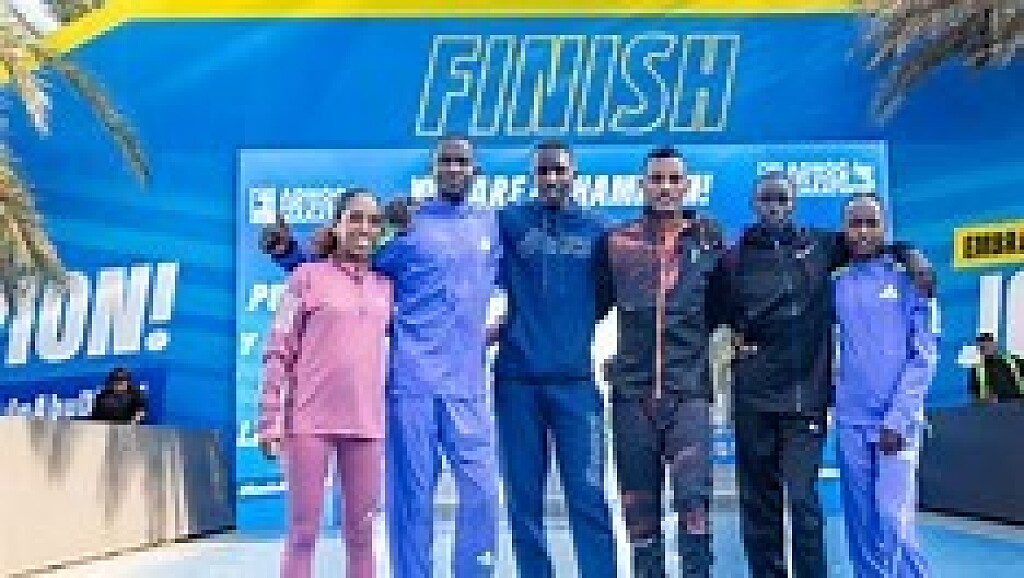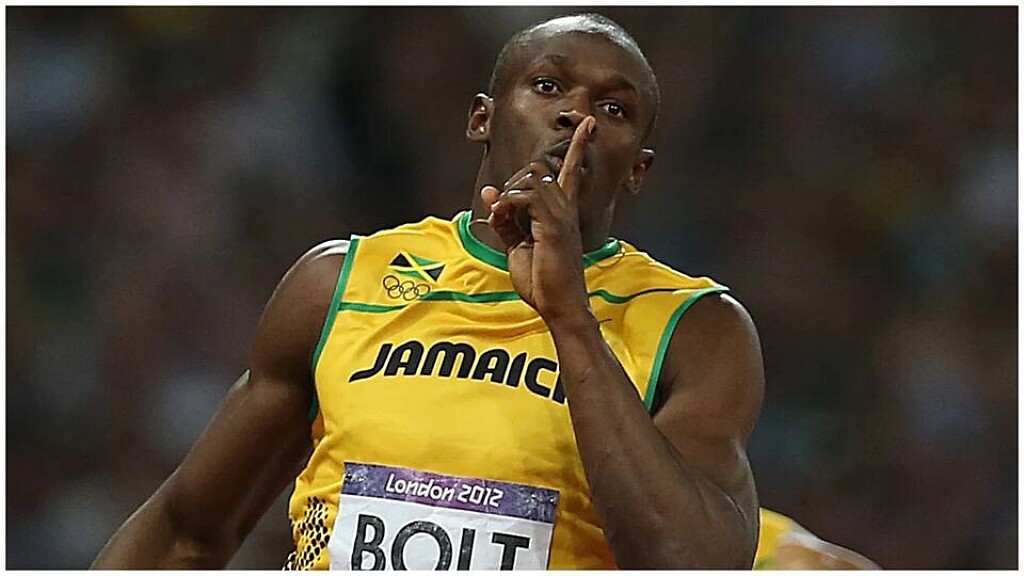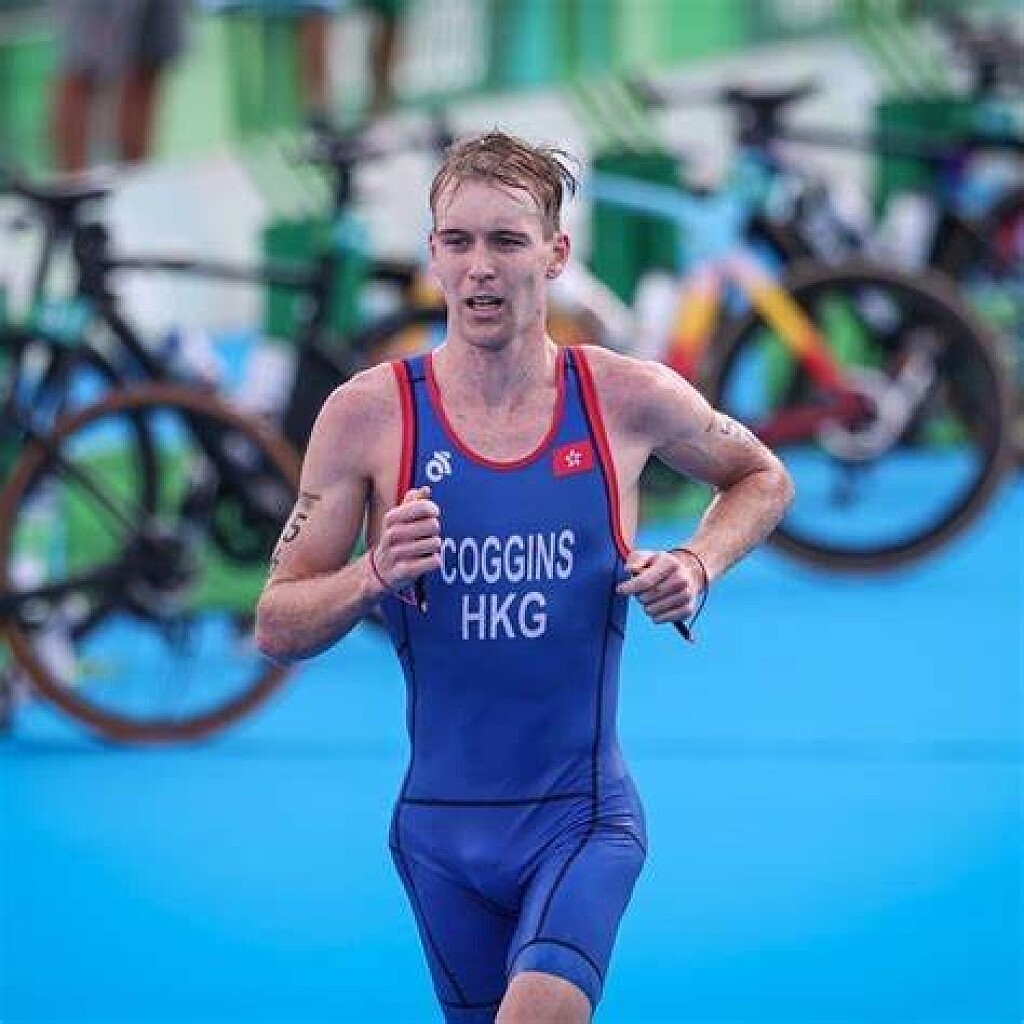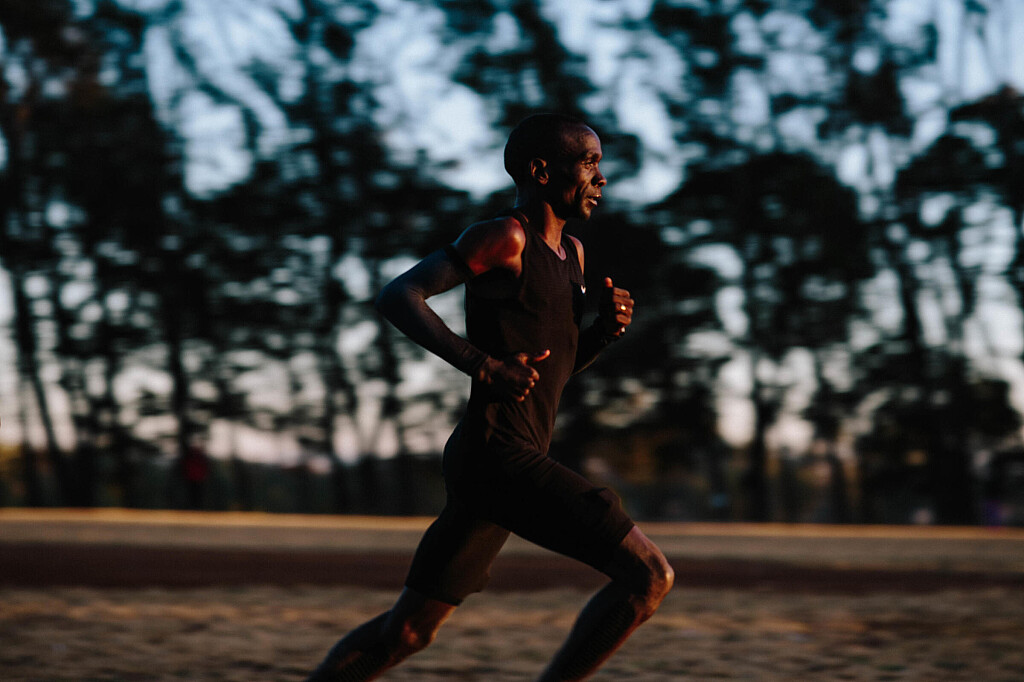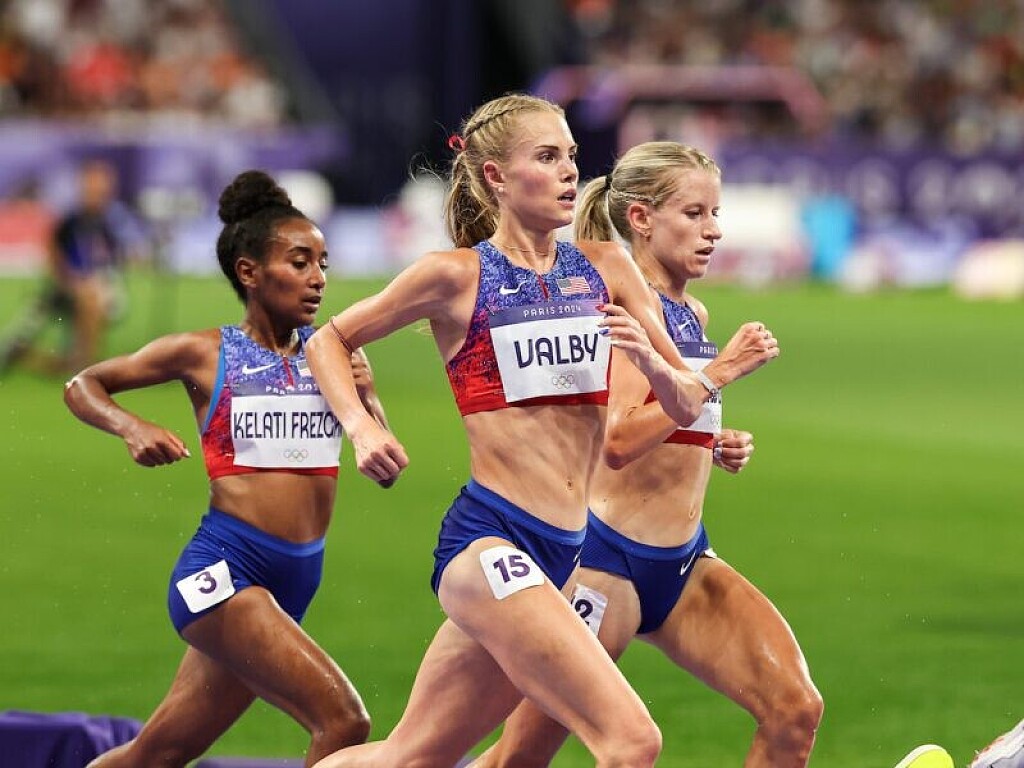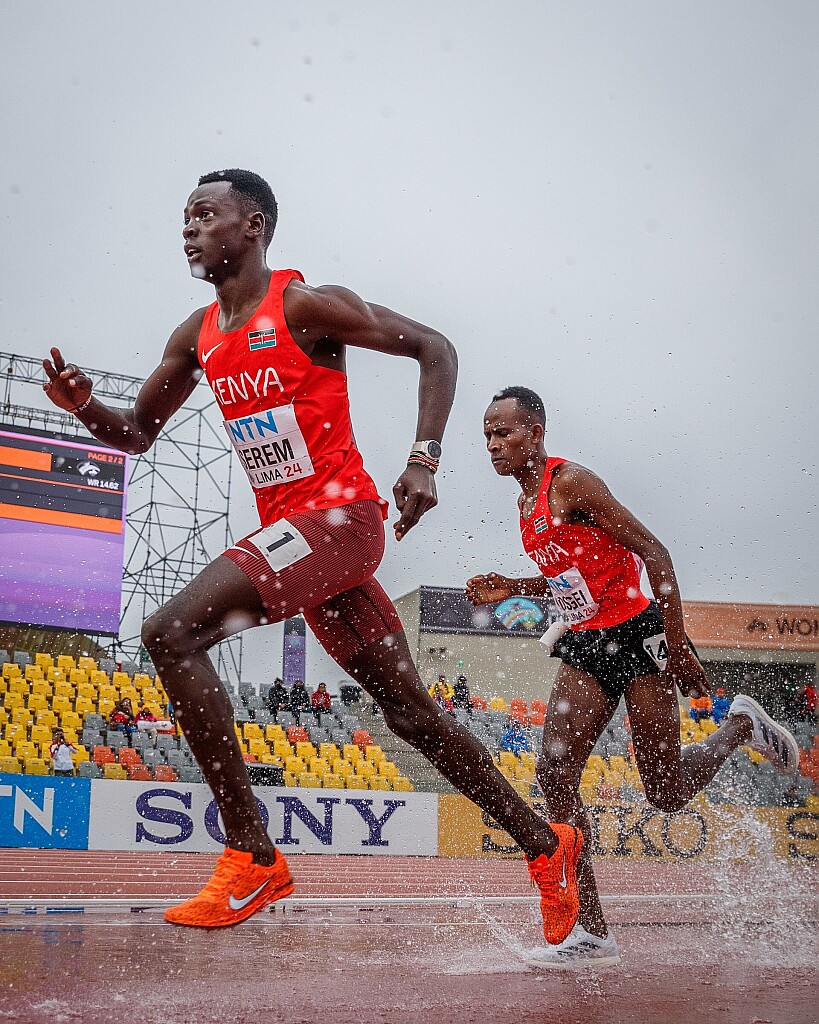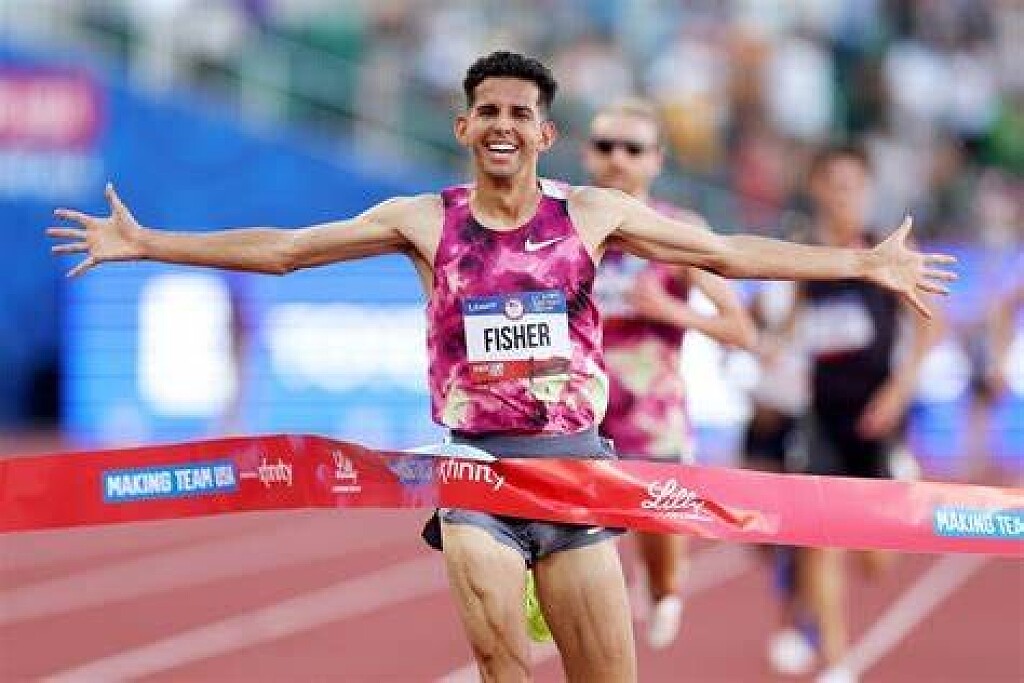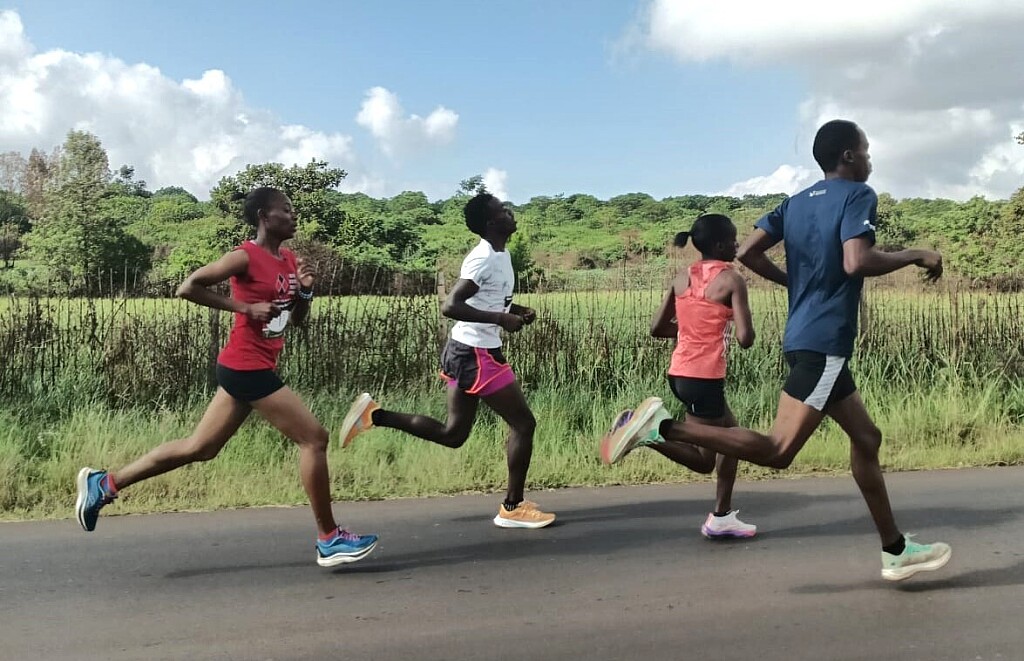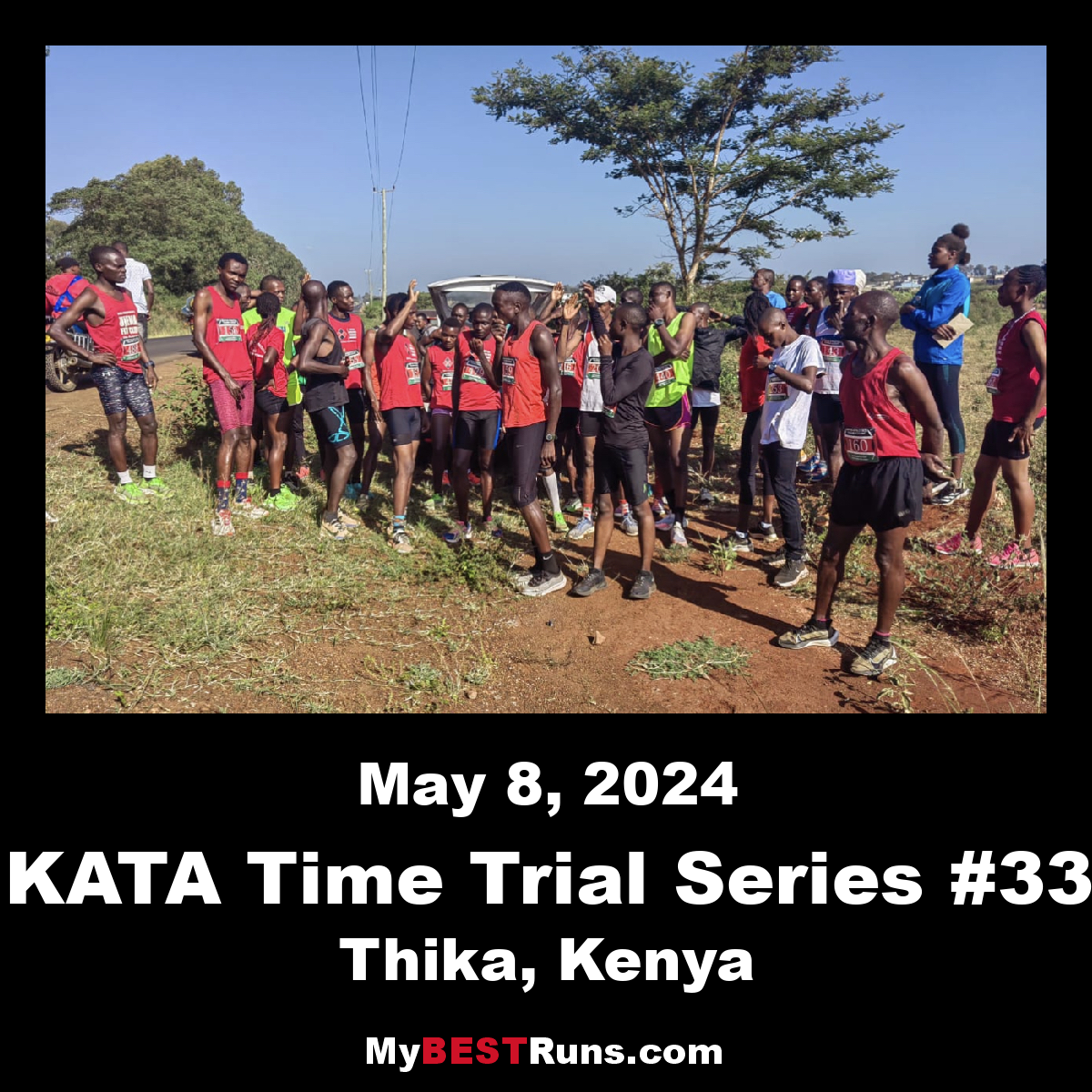Running News Daily
Running News Daily is edited by Bob Anderson. Send your news items to bob@mybestruns.com Advertising opportunities available. Train the Kenyan Way at KATA Kenya and Portugal owned and operated by Bob Anderson. Be sure to catch our movie A Long Run the movie KATA Running Camps and KATA Potato Farms - 31 now open in Kenya! https://kata.ke/
Index to Daily Posts · Sign Up For Updates · Run The World Feed
'My top three targets for 2025 are...'- Julien Alfred unveils ambitions for next season
Julien Alfred has revealed her to-do-list for the 2025 season.
Julien Alfred is eyeing a fruitful 2025 season and is targeting more than what she achieved in 2024 on and off the track.
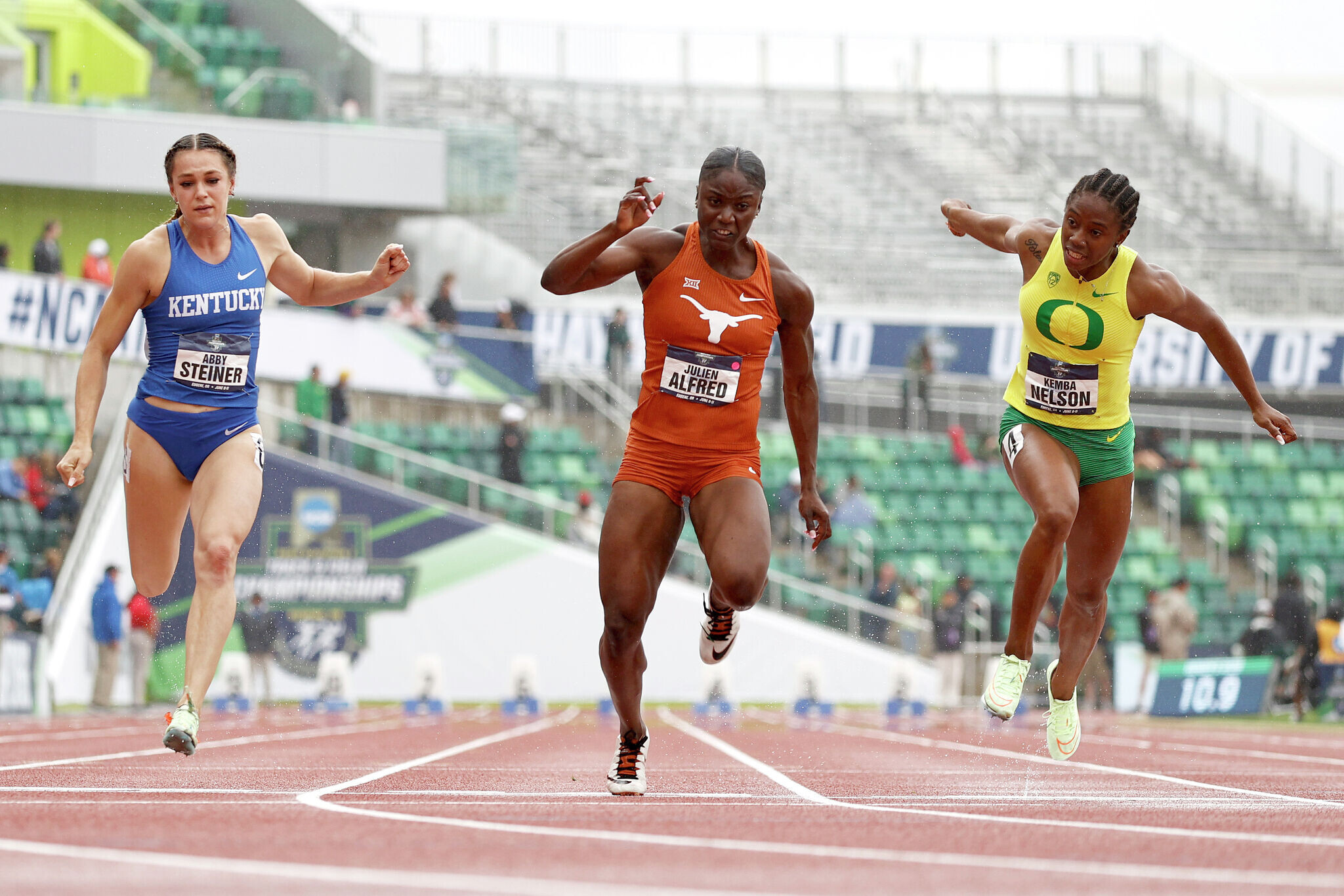
The reigning Olympic 100m champion has been one of the most successful athletes in 2024 but has promised there is more to come next season.
She has already sent warnings to her rivals Sha’Carri Richardson, Shericka Jackson and Gabby Thomas among others and she has intentions of continuing flying Saint Lucia’s flag high.
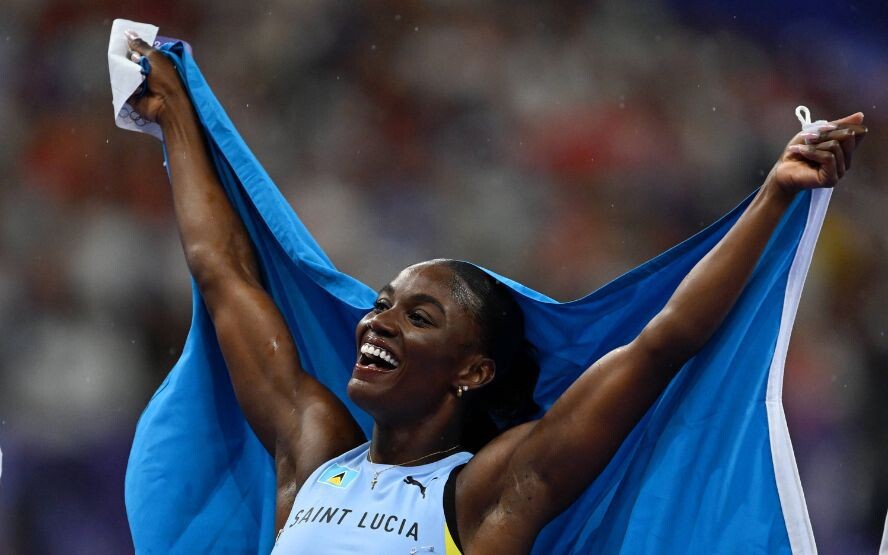
The Olympic 200m silver medallist revealed that she had taken some time off but has since resumed training and so far, things are looking up.
She detailed three of the main things she wants to achieve as far as her career is concerned as she pointed out that dominating the track is definitely a priority in her season.
Being appointed as Saint Lucia’s tourism ambassador, she will also have to continue marketing the country and she has vowed not to fail her country on that.
“I had five weeks off. I’m back in training now. I have to stick to what I know. I’m here at the World Travel Market using what I have done to now become a tourism ambassador to promote my country,” Julien Alfred said as quoted by Voice Online.
“My top three targets for 2025 are to grow as a person, mentally, physically and spiritually. I want to continue to be an inspiration for those in my country, especially the youth. I want to continue to be a good ambassador for my country both on and off the track.
“And I want to continue to do well on the track for myself, for my country, for my coach and for those who have poured so much into me. I want to do well for them as well.”
Julien Alfred recalled the moment she jetted back into the country after her dominant exploits at the Paris Olympic Games, something she will always live to remember.
The 23-year-old revealed that being welcomed by such high-profile personalities and being treated like royalty gave her the motivation to keep going and she will continue wracking up medals on the track as appreciation for her country.
“After stepping off the plane I was welcomed by the Prime Minister, the Minister of Tourism, the Minister of Sport, the government I would say, I was just welcomed by them,” Alfred revealed.
“And there were St Lucians outside the airport awaiting my arrival, people were dancing, people were singing, people were cheering, it was just a crazy experience that I will always be grateful for.”
(12/21/2024) ⚡AMPby Abigael Wafula
The Average Marathon Time Has Gotten Faster—but the Average 5K Has Slowed Down, Study Says
Researchers analyzed 8.4 million race finishes over the past decade. How do you stack up?
With elite runners smashing marathon world records left and right—14 of the 20 fastest women’s marathon times in history have been run since the beginning of 2023—you might wonder: Are everyday runners getting faster, too?
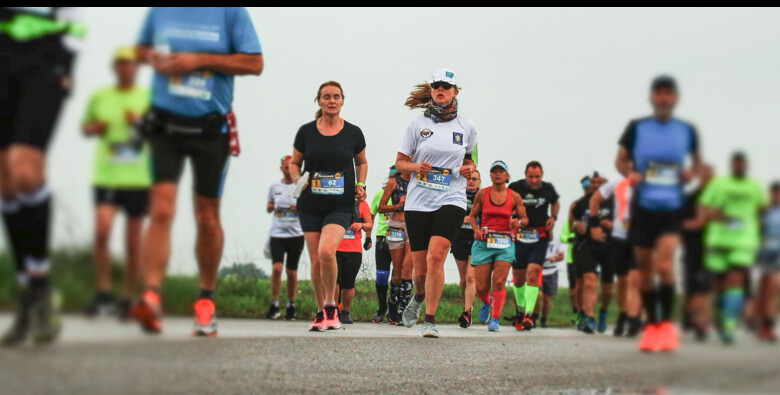
You would think so, given that the Boston Marathon recently adjusted its qualifying standards to be quicker, but not so fast, warns Jay Holder, the executive director of Running USA.
The nonprofit industry organization crunched 8.4 million finish times between 2013 and 2023 to discover that runners at shorter distances are trending slightly slower while marathon runners are indeed getting faster.
“[Most runners] aren’t, however, getting as dramatically faster as the stats above might lead you to believe,” said Holder in a news release. “And while marathons are getting faster, it might surprise you to know that other distances are getting marginally slower by between two and three minutes.”
Here’s how each distance shakes out:
Marathon: Holding steady (or faster)
Marathons were the standout, with the average male finish time dropping from 4:18 to 4:17 and females holding steady at 4:43. Notably, young runners (ages 18–24) showed the most improvement, shaving 15 minutes (male) and 18 minutes (female) off their times. Older female runners also made significant gains, with those 75 and older finishing 35 minutes faster on average compared to a decade ago.
Not surprisingly, the report notes that exclusive races like Boston saw faster average finish times than the New York City Marathon, where New York Road Runners has made concerted efforts to keep the race’s finish line open later.
Half marathon: A minor slowdown
By comparison, half marathon finish times crept upward. Men added two minutes (to 2:05) to their finish times. In contrast, women slowed by four minutes to 2:24. Despite
(12/21/2024) ⚡AMPWhen It’s Time to Replace Your Running Shoes
When this assignment hit my inbox, my first thought was: I am 100 percent going to find out that I need to buy new running shoes. I jog a few times a week and haven’t replaced my Hoka Clifton 9’s since 2023. The chunky, cushioned sole that Hokas are known for has been flattened by months of trail running, and the bright neon yellow exterior has dimmed to a dull mustard.
But they do the job, and I’m a bit frugal, so I’ve stuck with them. But after speaking with a few sneaker experts, I learned I’m not doing myself any favors by holding onto beat-up gear. The more I use them, the greater my risk of an injury.

Here’s why it’s worth replacing your go-to kicks—and how to figure out when to do it.
What Is the Average Lifespan of Running Shoes?
The average running shoe is thought to last about 300 to 500 miles or five to eight months of regular use, but determining your shoe’s true lifespan is more complicated, says Daniel Shull, Run Research Manager at Brooks Running.
Many factors shorten or extend the longevity of your sneakers, including how often you wear them, the kind of terrain and weather you run in, and your stride and strike habits, says Shull.
“Every runner is different, and every shoe is different,” says Arianna L. Gianakos, a Yale Medicine orthopedic surgeon specializing in sports-related foot and ankle injuries.
Trekking through mud, gravel, and puddles can erode your footwear, as can working out in hot or frigid temperatures, says Susan L. Sokolowski, a professor of sports product design at the University of Oregon. She explains if you’re a heavy runner, meaning you land on your foot hard, the foam in the middle of your shoe will break down faster. And if your foot rolls inward or outward, you can wear out a part of your shoe that isn’t built for regular impact, such as the edges or outsole, speeding up your need for
For example, I don’t merely wear my Hokas when I jog. I also wear them when I recreationally hike, bike, and walk my dog all over town. So, while I’d love to think my running shoes last a year, they probably give out much sooner.
Why It’s Important to Replace Running Shoes
When your foot slams onto the ground, your shoe acts as a buffer and absorbs some of the force hitting your foot and ankle, Gianakos says. According to a 2023 review published in Exercise Science and Sports Reviews, shoes influence how your foot interacts with the ground, impacting your performance, speed, comfort levels, and risk of sustaining an injury.
If your sneaker no longer provides the support and cushioning your feet need, you can hurt the joints, tendons, and ligaments in your feet, ankles, and even upper leg, says Gianakos. You can run (pun intended) into a whole host of injuries like plantar fasciitis, tendonitis, stress fractures, and shin splints, she adds.
You may get pain in the ball of your foot (or metatarsalgia), patellofemoral pain syndrome, which causes pain around the kneecap, or iliotibial (IT) band syndrome, a condition that causes pain near the outside of your
So, do a body scan next time you’re out on the trail. Do you notice any foot or ankle aches and knee pains? What about burning sensations on the sole of your foot? How about blisters or calluses? Any of these symptoms may indicate your shoes are shot, says Gianakos.
How to Extend the Life of Your Favorite Pair of Sneaks
First, be mindful of how you store your shoes. You want to keep them in a clean, dry location to prevent mold from growing, says Sokolowski. And don’t store them in a hot, sunny car—UV exposure and heat can cause them to dry out and crack, she adds.
Gianakos recommends having (at least) two pairs of sneakers. That way, you can occasionally switch them out to slow the wear and tear. Another tip: have different sneakers for running in different environments—like “a trail shoe, a road shoe, and even a race day shoe,” says Sokolowski.
And save your running shoes for running only. “The time and amount of steps put on your shoes by walking, standing, and running errands all count towards how long they’ll last,” says Shull.
For all your other day-to-day activities and
(12/21/2024) ⚡AMP
Terry Fox to become the new face of Canada's five-dollar bill
On Monday, the Canadian government announced in its fall economic statement that a new face will be coming to the country’s $5 bill: the late Canadian icon Terry Fox.
Fox became a national hero in the 1980s with his cross-Canada run to raise money for cancer research, titled the Marathon of Hope. Fox ran nearly 4,000 km of daily marathons for four and a half months, until he reached Thunder Bay, Ont., when his bone cancer returned. Fox died at the age of 22, but his legacy continues.
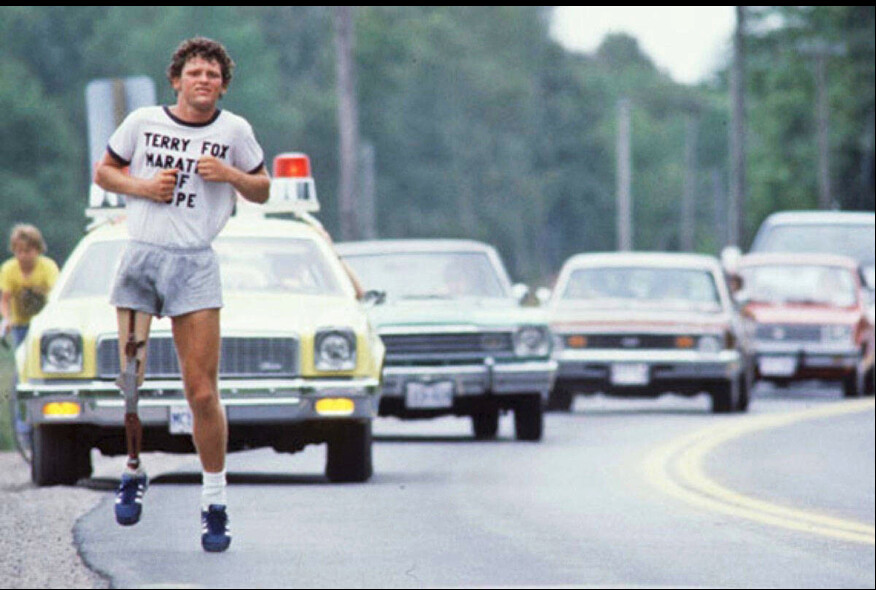
April 12, 2025, will mark 45 years since Fox set out on his Marathon of Hope. Now, the federal government will honour his journey with a picture of Fox on the new five-dollar bill.
The Marathon of Hope raised $24.7 million, which, at the time, was a dollar for every Canadian. Fox’s efforts showed Canadians the difference that an ordinary person could make, no matter their circumstances.
The current face on the five-dollar bill, that of former prime minister Sir Wilfrid Laurier, will reportedly be moved to the next version of Canada’s fifty-dollar bill. Laurier has been on the Canadian $5 bill since 2013.

World out-of-stadium athlete of the year Tamirat Tola’s 2024 – in numbers
Tamirat Tola earned Ethiopia’s only gold medal at the Paris 2024 Olympics with an extraordinary performance in the men’s marathon.
On a uniquely testing course, and in gruelling conditions, he won gold in an Olympic record of 2:06:26 – a performance that was all the more remarkable for the fact that he had only been called into the team with two weeks’ notice as a replacement for his injured compatriot Sisay Lemma.
The 33-year-old, who earned Olympic bronze over 10,000m in 2016, thus added a second global marathon title to his collection after his victory at the 2022 World Athletics Championships.
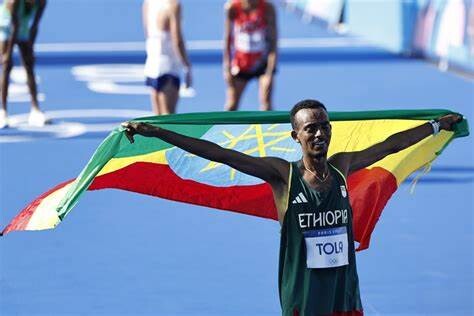
Tola’s 2024 in numbers
With the hills, and the heat, it was tough enough to run on the Paris marathon course. But you set an Olympic record of 2:06:26. How did you manage this feat?
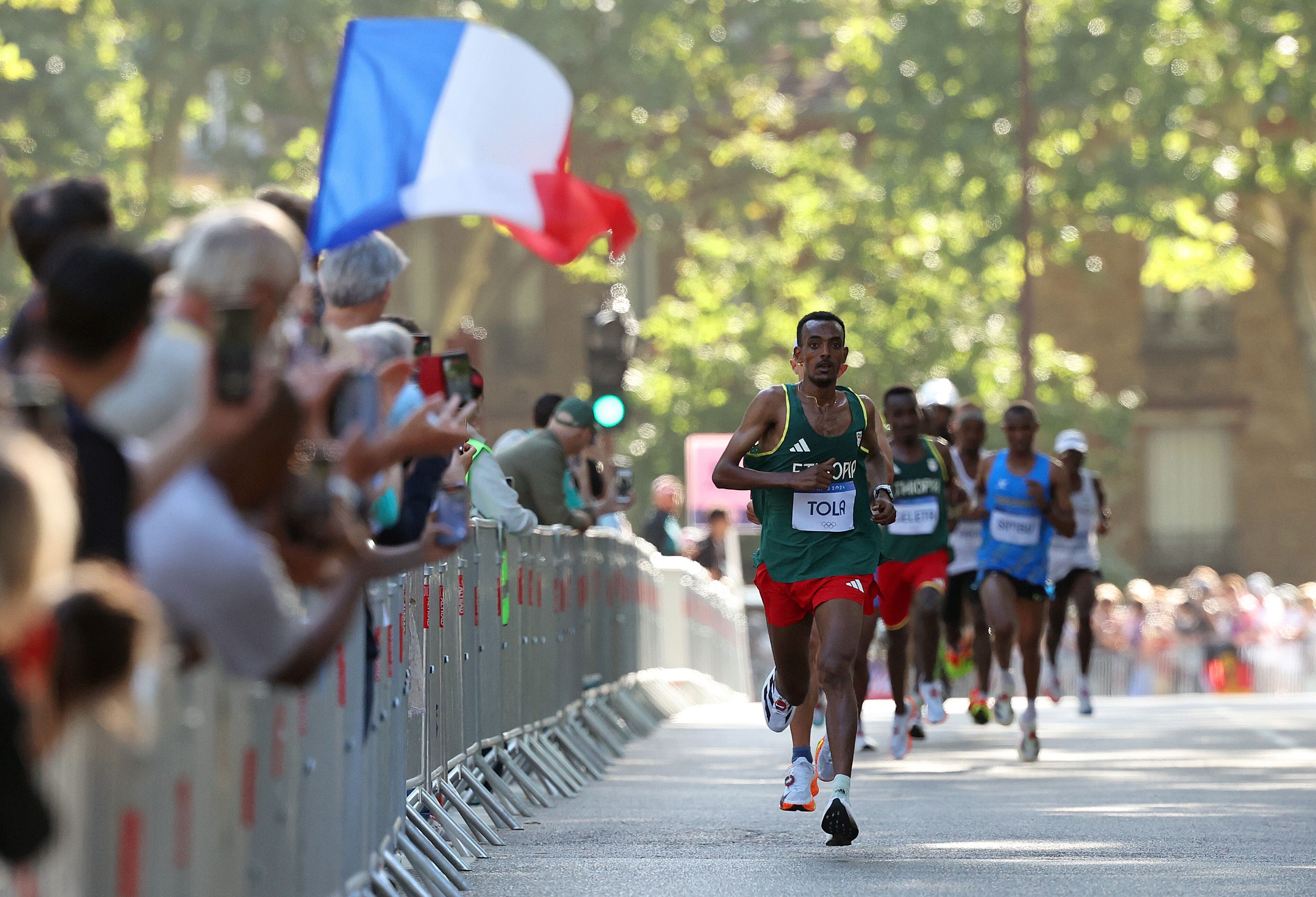
“It was a very difficult course in Paris. But the only thought in my mind was that I could not lose. Our country had won no gold medals on the track, and the marathon races were the last chance for us, so I needed to make the most of my talent.”
Many athletes found the steep hills and long descents of the Paris course the toughest they had faced, particularly around the 28km mark. Where did it hurt most for you?
“It was hardest from 27 to 30 kilometres, with the steep hill and the long drop. I wasn’t thinking about the time, but when I finished I had the Olympic record, which was another reason to be proud.
“My coach had told me that this was a very difficult course, so when I arrived in Paris I thought about how I could run my best on this course. I used this challenge as motivation, and thankfully I overcame it.
“In athletics, challenges are part of the sport. And we always have to do the best for our country.”
This was your second global marathon title following your success at the 2022 World Championships. How did the two victories compare?
“In 2022 it was not easy, all the champions were also there. In the past I had been concentrating on the 10,000m, which led to the Olympic bronze medal in 2016. After that I won the marathon silver at the 2017 World Championships in London.
“I improved my talent in 2022 to win the gold medal. I was happy at that time because after a long injury I was able to win for my country.
“In 2023 I lost that title because of a problem with my stomach. But that made it all the more amazing to fulfil my goals at the Olympics in Paris.”
You had just two weeks to prepare after being told you were running in the Olympic marathon following the withdrawal of Sisay Lemma, after which you stepped up as the third Ethiopian entrant alongside Deresa Geleta and Kenenisa Bekele. How did you manage this challenge?
“For three months together with Kenenisa, Lemma, Deresa and I prepared for the national team. At that time my coach said, ‘prepare with them, and if you are not needed for Paris then go to do the New York City marathon’.
“When I heard the news that I was on the team, I was really excited for the following two weeks. But for Sisay, it wasn’t an easy decision because it was for our country. We discussed it with him and he said, ‘It won’t be easy for me to run injured in Paris, so you go’.
“When I got to Paris, I was thinking about how I could challenge (Eliud) Kipchoge and other athletes. I knew the main contenders. There were lots of talented athletes.
“But I reminded myself that I had worked hard. And when I got in front in the final kilometres, I knew I could win.”
In Paris you became the fourth Ethiopian to win the Olympic marathon title after Abebe Bikila in 1960 and 1964, Mamo Wolde in 1968 and Gezahegne Abera in 2000. How proud are you to have done this, and what inspiration did you take from your victorious compatriots?
“I did not expect to win because I knew there were runners there like Eliud Kipchoge, the two-time winner. But once I got ahead, I knew I could do it.
“For a long time after Gezahegne, for 24 years, we were without an Ethiopian win in the men’s marathon at the Olympics. I was happy to attain this goal in a Games record and to join the other Olympic champions.
“It was Ethiopia’s only gold medal in Paris – I was able to provide happiness for our country.”
(12/20/2024) ⚡AMPby Mike Rowbottom for World Athletics
Should you ditch the data in 2025?
In a world where every runner seems to have the latest GPS watch on their wrist or a smartphone tracking every step, choosing to run without technology might seem rebellious. But running digital-free isn’t just about making a statement—according to a Finnish study, it can be deeply meaningful, freeing and empowering. Here’s what you need to know to decide if ditching the data is right for you.
The study

Researchers at the University of Jyväskylä in Finland surveyed more than 1,000 recreational runners, asking them their reasons for not using digital sports technology. By analyzing participants’ responses, the researchers identified recurring themes, including a feeling of freedom and a deeper connection to running, as reported by those who choose to unplug.
More than numbers
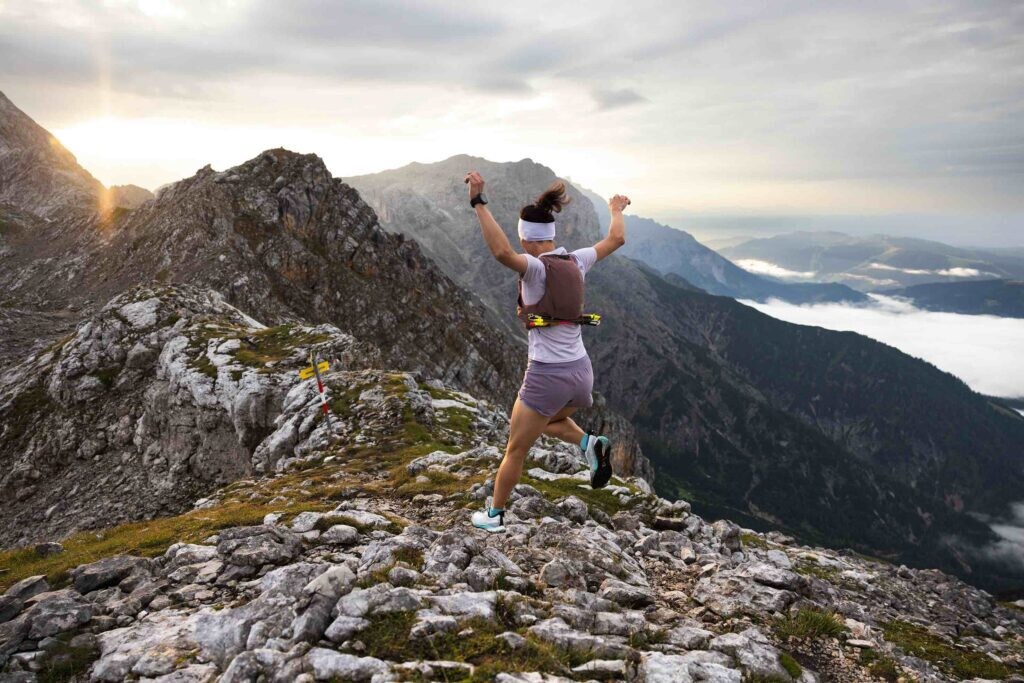
Runners often get caught up in the data: pace, heart rate, splits and VO2 max readings. What happens when you let go of the numbers? According to the study, some runners felt that technology took away from the value of the sport. Running without devices allows you to focus on how you feel, the rhythm of your breath and the sound of your feet hitting the ground. Many runners enjoy connecting with the experience of running, without analyzing their performance.
Freedom to move
One of the study’s key findings was that ditching technology offered them a sense of freedom. You’re probably used to heading out the door and pausing to wait for your watch to find that GPS signal and pick up your heart rate. Without data, running becomes simpler and more spontaneous. You are able to tune into your body, and go as far, or as fast, as you feel.
For many runners, ditching devices gave them a fresh appreciation for the beauty of their surroundings. Instead of staring at a screen mid-run, they noticed the changing colours of the leaves or the crunch of snow under their feet. Running became more about being present than about hitting a goal.
Is it for you?
Does thinking about leaving your watch at home still give you the creepy crawlies? Going digital-free doesn’t have to mean throwing your watch in the garbage, and using metrics to accurately assess your runs can be useful when aiming for certain targets or when training for a particular event. Many runners in the study switched between using devices for training and leaving them behind on easy runs. Start small—try one technology-free run a week and see how it feels.
(12/20/2024) ⚡AMP
by Keeley Milne
Beatrice Chebet will aim to break the 5K world record again at the Cursa dels Nassos
Kenyan Beatrice Chebet will repeat her participation in the Cursa dels Nassos on December 31, which this year has reached an unprecedented number of 12,000 registered in its popular race, with the challenge of beating the women's world record in the 5km road that she herself set in the last edition with a time of 14:13.
During the presentation of the event, held this Wednesday at the Olympic and Sports Museum of Barcelona, the Councilor for Sports, David Escudé, recalled that the Cursa dels Nassos was chosen by World Athletics as the best international women's event in 2023.
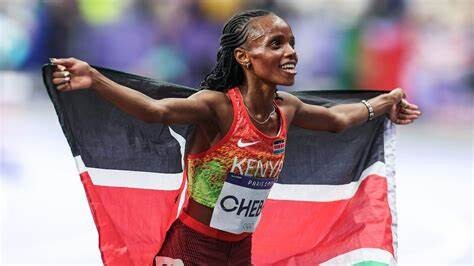
"This recognition, which is like winning the Oscars of athletics, has driven us to continue working and improving. This year, in addition to being the most multitudinous edition, it will also be the most female edition in the history of the event, with a record participation of women of 35% (more than 4,000)," she said.
As in the last four years, the Cursa dels Nassos will consist of two events in its 26th edition: a five-kilometer race with international elite athletes that will start at 4:20 p.m. and a popular ten-kilometer race that will start at 5:15 p.m.
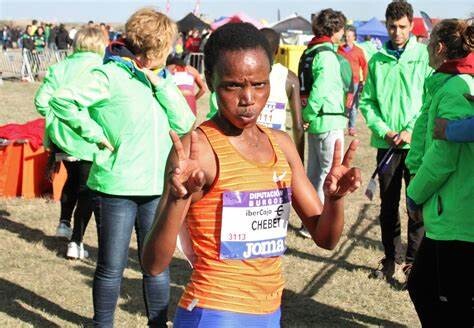
The possibility of breaking the women's world record in the 5K kilometer race – which will once again be mixed, unlike last year – will be the main incentive of a day in which the Kenyan Beatrice Chebet will start as the great favorite.
The 24-year-old African athlete is coming off two gold medals in the 5,000 and 10,000 meters at the Paris Olympics, and will try to lower the world record she set at the 2023 Cursa dels Nassos (14:13). The Ethiopians Medina Eisa and Melknat Wudu, and the Catalan Esther Guerrero stand out as her main adversaries.
(12/20/2024) ⚡AMPby Ismael Pérez
Cursa dels Nassos
Certain local traditions may strike you as funny, bizarre, or downright disturbing. You may know that the Catalans ring in the new year by eating one grape with each chime of the clock at midnight, but did you know about the man with many noses ('home dels nassos')? Folklore has it that there's a man who has as many noses...
more...Spanish Olympian given four-year ban for falsifying whereabouts documents
Spanish Olympian and two-time world championship medalist Mohamed Katir was handed a four-year ban by the Athletics Integrity Unit (AIU) on Friday for falsifying travel documents in support of his explanation for his three whereabouts failures in 2023.
Instead of accepting wrongdoing and taking on the two-year whereabouts ban, the 26-year-old middle-distance runner falsified travel documents (a travel itinerary, boarding pass and booking confirmation) in an attempt to mislead investigators as they probed the integrity of his explanation for a whereabouts failure that occurred on Feb. 28, 2023. The result was an even longer ban than what he was already facing.

The four-year ban will run concurrently with Katir’s ongoing whereabouts sanction, extending his ban from the sport until February 2028. This means he will be forced to miss both the 2025 World Athletics Championships in Tokyo and the 2027 World Athletics Championships in Beijing.
According to the AIU, the world 5,000m silver medallist missed three tests between Feb. 28, 2023 and Oct. 10, 2023 (missing three doping tests in a 12-month window results in an anti-doping rule violation, or ADRV).
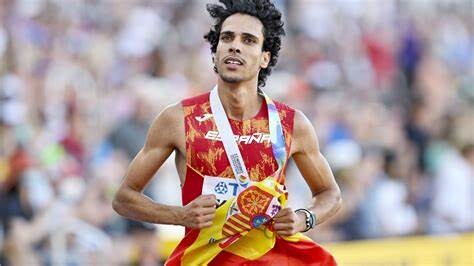
Katir’s whereabouts failures
On Feb. 28, 2023, a Doping Control Officer (DCO) went to the address in Murcia, Spain, indicated in the Athlete’s Whereabouts information; upon arrival, the DCO was told that Katir was in Lisbon and would not be returning until March 2.
Katir missed another test on April 3, when a DCO showed up at his home in Murcia again. When they arrived, Katir was training in France, and had failed to update his whereabouts. Katir told the AIU he tried to update his information, but the system was not working. He was charged with his second violation when he failed to send an email providing evidence of technical issues.
His third violation occurred on Oct. 10, when a DCO went to the specified location during a 60-minute time slot between 7:20 p.m. and 8:20 p.m. When the DCO arrived, Katir was away at training, and later insisted there was a mistake in his whereabouts, and claimed he never changed the time slot from his usual 7:00 a.m. to 8:00 a.m. window.
Katir is a two-time world championship medallist in the men’s 1,500m and 5,000m events. He won silver in the 5,000m behind Norway’s Jakob Ingebrigtsen at the 2023 World Athletics Championships in Budapest.
AIU head Brett Clothier said the ruling underscored the seriousness of tampering: “Gone are the days in athletics when explanations offered in anti-doping cases are just accepted at face value,” he stressed. “The vast majority of our elite athletes respect the strict rules and processes of the sport and they should take heart at the action being taken to ensure a level playing field.”
(12/20/2024) ⚡AMPby Marley Dickinson
'Big goals coming' - Masai Russell hints at professional debut at Millrose Games as preps for 2025 gather pace
Russell defied the odds to win 100m hurdles at Paris Olympics and has acknowledged the need to improve her time in 2025 with her busy schedule set to start in February,
Paris Olympics 100m hurdles champion Masai Russell is back to work with even better plans for 2025.
The American, who is the NCAA record holder over the distance, said she has remarkably improved this year compared to 2023 and wants to break world indoor records. She is banking on her mental fortitude which she believes has drastically improved, particularly after the grueling Paris Olympics in which the 24-year-old cruised to victory on her debut at the quadrennial championship.

“I think I’m ahead of where I was last year, just mentally and physically. I have some big goals coming," Russell, whose personal best of 12.25 seconds over 100m hurdles is the fifth of all-time, told CitiusMug.
Part of her 2025 targets include running faster times as she reckons that every competitor strives to become better and the competition doesn't make it easy on anybody. "The women’s 100m hurdles doesn’t make it easy on anybody. I know that I have to come in even stronger, even faster, even better. I’m looking to break the world record indoors this season and win the world indoor title,” she highlighted.

Evans Ousuru • 19:04 - 08.12.2024
Russell defied the odds to win 100m hurdles at Paris Olympics and has acknowledged the need to improve her time in 2025 with her busy schedule set to start in February,
Paris Olympics 100m hurdles champion Masai Russell is back to work with even better plans for 2025.
The American, who is the NCAA record holder over the distance, said she has remarkably improved this year compared to 2023 and wants to break world indoor records. She is banking on her mental fortitude which she believes has drastically improved, particularly after the grueling Paris Olympics in which the 24-year-old cruised to victory on her debut at the quadrennial championship.
ATHLETICS
‘I don’t want to add that much stress’ - Masai Russell explains biggest problem she is facing since buying new house
“I think I’m ahead of where I was last year, just mentally and physically. I have some big goals coming," Russell, whose personal best of 12.25 seconds over 100m hurdles is the fifth of all-time, told CitiusMug.
Part of her 2025 targets include running faster times as she reckons that every competitor strives to become better and the competition doesn't make it easy on anybody. "The women’s 100m hurdles doesn’t make it easy on anybody. I know that I have to come in even stronger, even faster, even better. I’m looking to break the world record indoors this season and win the world indoor title,” she highlighted.
ATHLETICS
'Gold was just the beginning' - Masai Russell fired up ahead of crucial 2025 season
At the same time, Russell, who in 2023, broke the collegiate record for the 60m hurdles after running 7.75s to beat Grace Stark's time of 7.78s set in 2022, confirmed to race at the 117th edition of the Millrose Games.
"Olympic 100m hurdles champion is confirmed to race the 60m hurdles at the @MillroseGames at @ArmoryNYC on Feb. 8th. This will be her first appearance at the Millrose Games as a professional. She used to compete at the meet as a star at @Bullis_Track."
The Millrose Games is the world’s most prestigious Indoor Track & Field Competition. The February 8, 2025 event is set for, The Armory, a state-of-the-art facility that has been nicknamed 'The Fastest Track in the World' in the New York City.
(12/19/2024) ⚡AMPby Evans Ousuru
NYRR Millrose Games
The Pinnacle of Indoor Track & Field The NYRR Millrose Games, first held in 1908, remains the premier indoor track and field competition in the United States. The 2025 edition will once again bring the world’s top professional, collegiate, and high school athletes to New York City for a day of thrilling competition. Hosted at the New Balance Track &...
more...World Athletics president pushing cross country for 2030 Olympics
It’s no secret that World Athletics president Seb Coe has ambitions to take over the International Olympic Committee (IOC) president position in the organization’s 2025 election. He looks to succeed Thomas Bach, who has served as president of the IOC for 12 years. Coe’s presidential manifesto pledges a clean and fair Olympics, and potentially the addition of some traditional summer and fall sports to the Winter program—including cross country.
During Coe’s year-end meeting with the media, he alluded to the need for the Winter Olympics to become “more accessible and open to new ideas.” The highest participation for the Winter Games was 93 countries at the 2018 Games in PyeongChang, South Korea, whereas the Paris 2024 Summer Games saw athletes from over 200 nations.
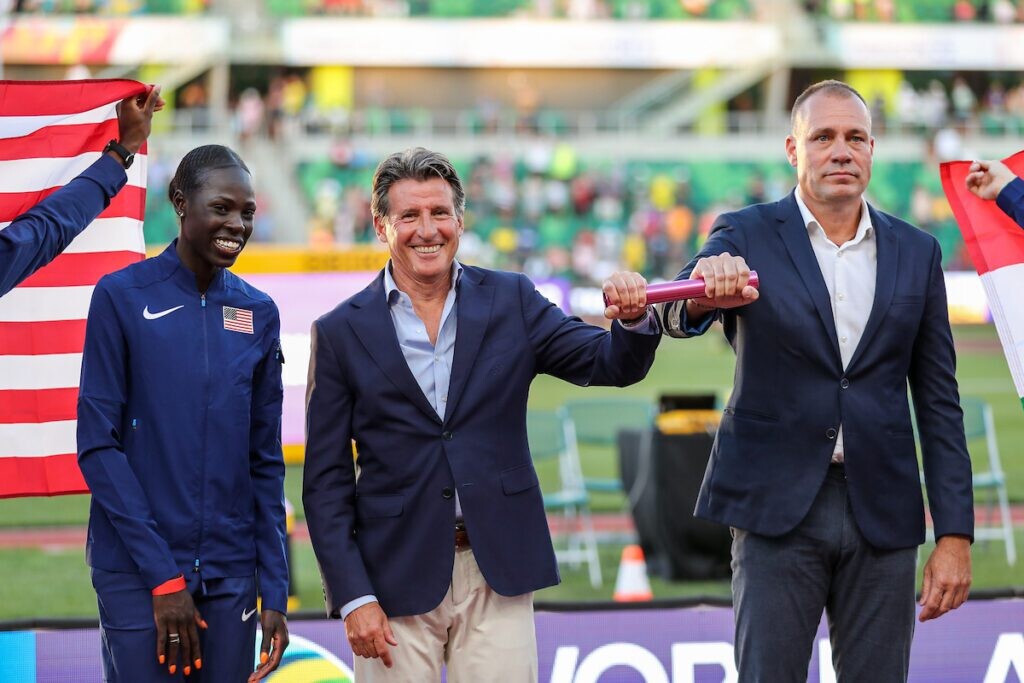
To expand the global audience, Coe believes the addition of fall or indoor sports into the Winter program could attract athletes and viewers from regions of the world that might not have snow. Cross country (running) and cyclo-cross (cycling) are at the forefront of this push, offering the opportunity to expand the Winter Games without straying too far from its profile or mission.
Cross country has faltered on the World Athletics calendar since the pandemic. The 2023 championships held in Bathurst, Australia, were too late in the season (February, two months after the cross-country season), which made it a lengthy commitment of time and travel for any athlete. The 2024 meet, originally scheduled for Croatia on Feb. 10-11, was reassigned to Serbia on March 30 when it emerged that Croatia was not ready to host. Although Serbia did all it could on six months’ notice, the event was heavily criticized for its course, spectator-friendly experience, and timing, as it was held (again) well after the cross-country season.

Coe has made it clear, on multiple occasions, that he believes there is a place for cross country in the professional running calendar, but there needs to be a way to make it more attractive to fans. “I’m a great adherent of cross country, and I think it’s a really important part of the endurance paradigm,” said Coe. “But it needs help… it needs space.”
The program for the 2026 Winter Olympics in Milan-Cortina D’Ampezzo, Italy is already set, but Coe is targeting the inclusion of the two sports by the 2030 and 2034 Olympics, which were awarded to the French Alps and Salt Lake City earlier this year.
If Coe is elected as the next president of the IOC in March 2025, he will vacate his current position as the head of World Athletics. The 68-year-old has served as World Athletics president since 2015 and was re-elected to a third (and final) four-year term in 2023. Coe was a two-time Olympic gold medalist during his own career and delivered the immensely popular London Olympics as chairman of the local organizing committee.
(12/19/2024) ⚡AMPby Marley Dickinson
Is birth control affecting your race day performance?
Struggling with the negative effects of your menstrual cycle on your training, performance and recovery? You may find that certain hormonal contraceptives could help. A new study published in the Journal of Sports Sciences suggests that using a hormonal intrauterine device (IUD) or implant may be more likely to support success in endurance sports, while progestin-only oral contraceptives (POC) and no birth control (non-HC) at all might leave you feeling tired and less ready to train.
The study investigated 58 female endurance athletes around age 21 using various methods of contraception: IUD, implant, POC, COC and non-HC. Over 12 months, the participants completed three questionnaires and logged their perceived cycle-related symptom severity, sleep quality, and physical and mental readiness to train, using a scale from one (no symptoms/low sleep quality/not ready) to 10 (severe symptoms/high sleep quality/very ready). Resting heart rate was also reported daily. Data was sorted into pre-bleeding, bleeding and non-bleeding phases of the menstrual cycle.

Implant users reported significantly less severe symptoms on bleeding days (where symptoms are intensified for all participants), and logged the highest overall sleep quality. IUD users logged the second-highest overall sleep quality and the highest physical readiness to train, but the more severe overall symptoms. IUD and non-HC appeared to support a relatively consistent resting heart rate.
Reports from POC users, on the other hand, indicated lower physical readiness to train and the worst sleep quality across all menstrual cycle phases. Non-HC users logged severe cycle-related symptoms and felt the least ready to train.

Choosing the best method
Since the severity of symptoms was inversely correlated with sleep quality and feeling physically ready for training, it’s essential to limit exposure to factors that could worsen symptoms or slow recovery. Contraception methods with minimal effects on heart rate are ideal for sports where training zones and heart rate monitoring play a key role in fitness tracking.
The study highlights the importance of tailoring contraceptive choices to an athlete’s needs, emphasizing that the right method can make a significant difference in training and performance. Results suggest the implant is the best option to manage symptoms or sleep-related concerns, while the IUD can aid with sleep and heartbeat regulation. Consulting with your doctor to explore these options can be a key step toward achieving your running goals.
(12/19/2024) ⚡AMPby Cameron Ormond
Olympic champion to challenge 41-year-old 800m world record
Launching your own track meet and naming it after yourself is one thing–but Great Britain’s 800m Olympic champion Keely Hodgkinson didn’t stop there. On Wednesday, British Athletics revealed that the inaugural Keely Klassic track meet, set for Feb. 15 in Birmingham, will conclude with Hodgkinson trying to break the 800m world record, which has stood for 41 years.
The record of 1:53.28, set by Czechoslovak athlete Jarmila Kratochvílová in 1983, is the longest-standing world record in athletics. Hodgkinson would need to run more than a second faster than her personal best (1:54.61) to even come close to taking it down. The run will mark Hodgkinson’s season opener and first race back from an injury that cut her 2024 season short.
At the Keely Klassic, Hodgkinson promises “a unique, immersive experience that will combine elite competition with an electrifying atmosphere” and extends the meeting invitation to Great Britain’s world-class track and field athletes.

The unveiling comes less than a day after Tuesday’s BBC Sports Personality of the Year (SPOTY) ceremony, where Hodgkinson took centre stage. The 22-year-old is the first track athlete to win since Mo Farah won in 2017, and the first female track athlete to win since 2004. Her win also marks the fourth consecutive year that a woman has won the award–the longest streak in history.
“I’m actually in a bit of shock,” Hodgkinson said upon accepting the trophy. “I’m actually more excited for my coach, to be honest, because I wouldn’t be where I am without his guidance, [which] I’ve had since I was 17.”

“This year has been absolutely incredible for me,” she continued. “I achieved everything I set out to do on the outdoor track, which is kind of rare, so I’m grateful to be in this position.”
Olympic triathlon champion Alex Yee was also a contender for the award.
Hodgkinson’s coaches, Trevor Painter and Jenny Meadows, were awarded Coach(es) of the Year. Along with the Olympic 800m champion, the pair coaches Olympic 1,500m bronze medallist Georgia Bell.
Mondo Duplantis wins Sport Star of the Year
Pole vaulting legend Mondo Duplantis was also acknowledged at the event, winning World Sport Star of the Year. The Swedish-American world record holder was pitted against fellow sports icons, including gymnast Simone Biles, WNBA player Caitlin Clark and Olympic marathon champion Sifan Hassan.
“So sorry that I can’t be in attendance tonight–I’m back here in the States right now, training for the up and coming season. I know I’m in great company–the biggest legends of all time in sports have won this award. This really means a lot to me.”
(12/19/2024) ⚡AMPby Cameron Ormond
This NFL star is a former Canadian 100m champion
Carolina Panthers running back Chuba Hubbard has been making waves this NFL season, turning heads with his explosive speed and breakout performances. Hubbard currently ranks seventh among NFL running backs in rushing yards, plus sits 11th with a career-high eight touchdowns. The 25-year-old’s ability to burst through defences and accelerate in just a few steps is no coincidence—it’s a skill he honed during his track and field career for Canada.
In 2015, at just 16, Hubbard represented Canada in the 100m at the World Youth Championships (now recognized as U20) in Cali, Colombia. There, he clocked a personal best of 10.55 seconds in the 100m heats and narrowly missed out on a medal in the final, finishing fifth. The race was won by Japan’s Abdul Hakim Sani Brown, who has since become a two-time Olympian and reached the final of the men’s 100m at the 2023 World Athletics Championships in Budapest. Ironically, Sani Brown now trains alongside Canada’s most decorated Olympic track and field athlete Andre De Grasse under coach Rana Reider at Tumbleweed Track Club in Florida.
The following year, Hubbard captured the U20 men’s 100m title at the 2016 Canadian Track and Field Championships in his hometown of Edmonton. During his time at Bev Facey High School in Edmonton’s Sherwood Park neighbourhood, he set personal bests of 10.55 seconds for 100m and 21.85 seconds for 200m, winning several provincial titles.

In 2016, Hubbard’s athletic focus shifted when he signed a commitment letter to play football at Oklahoma State University. Hanging up his track spikes, he dedicated himself fully to football and hasn’t raced competitively since.
“Track and field was my first sport and my first love,” Hubbard told Canadian Running. “It was always the sport I thought I’d have a future in, until I went to university.”
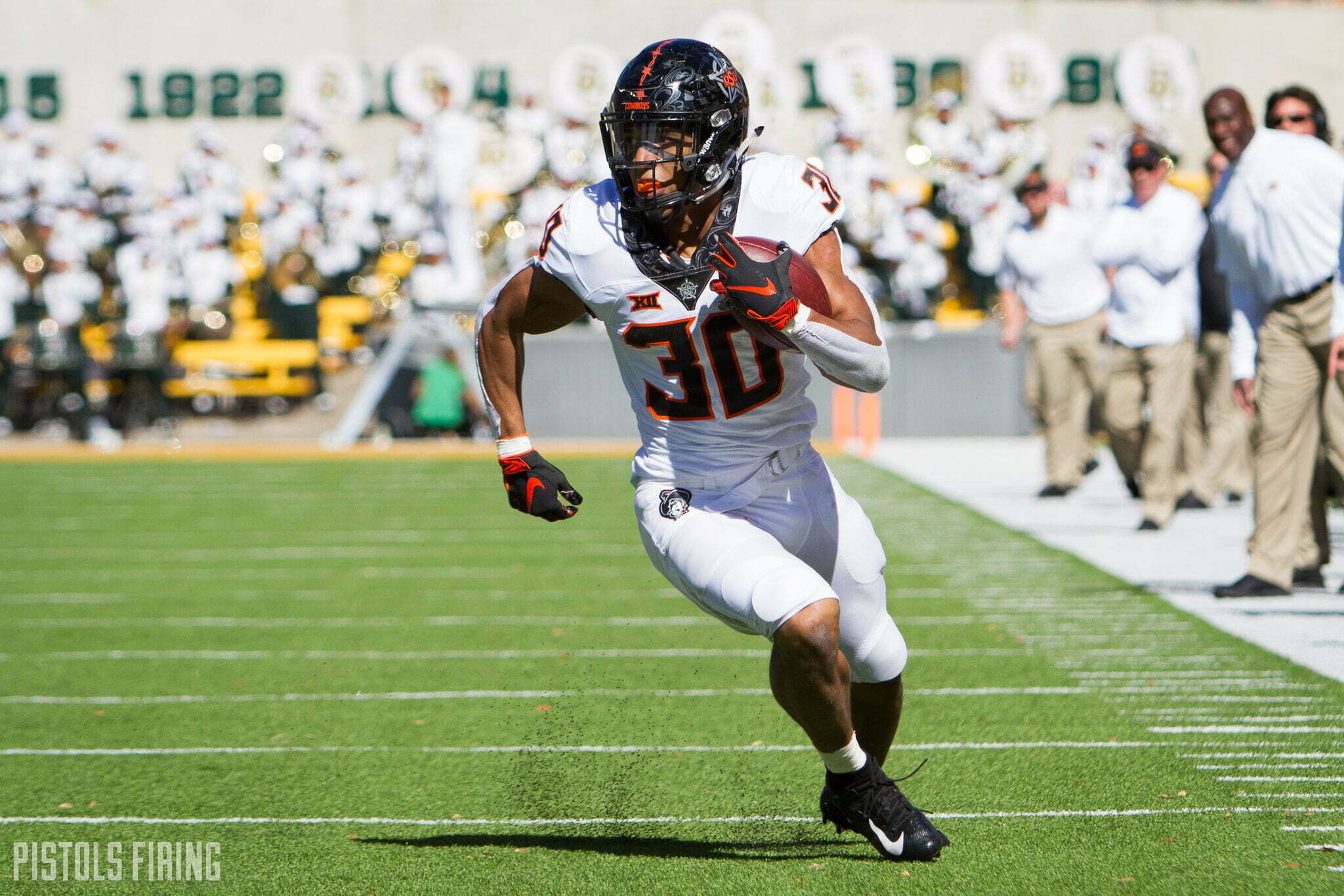
After a standout collegiate football career, Hubbard entered the NFL, being drafted by the Carolina Panthers in 2021. This season, Hubbard has surpassed 1,000 rushing yards for the first time in his NFL career. He credits his track background for some of his on-field success. “Track gave me a lot of power and speed,” Hubbard reveals. “In football, a lot comes down to your first few steps. They are technical and very important, because you have to read what the defence and blocks are giving you to get to certain landmarks on the field.”
With an average of 16 carries per game and 4.6 yards per carry this season, Hubbard’s explosiveness has been a key factor in his career-high numbers. Hubbard says running has been a part of his life since age six, and his passion for it still shines.
Despite the Panthers’ struggles, with a disappointing 3-11 record, Hubbard’s breakout year has been a bright spot for the team’s future as Panthers fans look ahead to the 2025-2026 season.
(12/19/2024) ⚡AMPby Marley Dickinson
This 60-year-old masters runner is pushing the pace at marathon majors
Yan (Mary) Ma, a 60-year-old marathoner from Coquitlam, B.C., is pursuing her third Abbott World Marathon Majors Six-Star finisher medal in 2025.
If you’ve run any of the Abbott World Marathon Majors over the past five years, chances are you’ve crossed paths with the 60-year-old masters marathoner Yan (Mary) Ma of Coquitlam, B.C. She is a two-time Six-Star finisher, having run each of the marathon majors twice. In 2025, she will be chasing her third Six-Star finisher medal, looking to run all six marathon majors in one year.

Ma came to our attention over the fall when she finished near the top of her age category at both the 2024 Chicago Marathon and New York City Marathon, less than four weeks apart. These two top-10 finishes in the women’s 60-64 age category at majors capped off an incredible fall season for Ma, during which she ran four marathons on three continents in seven weeks.
Like us, you might wonder how she has time to travel the world and run marathons. Ma works part-time as an accountant for a firm that gives her the flexibility to arrange her work schedule around travel and races.
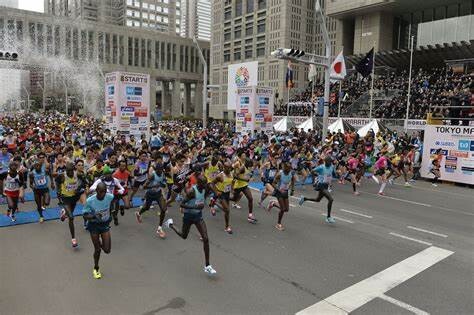
When Ma immigrated to Canada from China in 2009, she wasn’t sure how she would fit in. Her knowledge of English was sparse, but she eventually found her calling in a hiking group in her new home of Coquitlam. This led her to fall in love with distance running.
“I’ve always liked to run long distance,” Ma says. “I started running in university, then I had a long hiatus. I started running again in 2018, when my friend introduced me to someone at Vancouver’s LaPower Club.”
She says rediscovering running later in life has been transformative, keeping her feeling young and allowing her to build a strong network of friends.
Ma’s club boasts more than 800 members from across the Greater Vancouver area, and most of the people she runs with are around her age (and are also from China). Ma says the club has runners participating in each major marathon, which has enticed her to undertake this incredible challenge.
“I started my Six-Star journey by running Boston and New York City in the fall of 2021,” Ma says. “I thought I was done there, then my good friend convinced me to run Berlin with her. Since I was halfway there, I wanted my Six-Star medal. Now, we are at a second Six-Star.”
Ma doesn’t plan on slowing down. She is registered for the 2025 Tokyo Marathon, Boston Marathon and London Marathon in the spring. She’s also pursuing the new Nine-Star medal, which will include the three new marathon major candidates: Sydney, Cape Town and Shanghai. “I already completed Sydney this September, and plan to run the other two new races in 2026 and 2027,” she says.
As she begins to take on new races, Ma says New York City is the marathon major that keeps her coming back. “It’s my favourite by far. It’s easy to get to from Vancouver, and one I look forward to every year.”
(12/18/2024) ⚡AMPby Marley Dickinson
Tokyo Marathon
The Tokyo Marathon is a world-renowned annual marathon held in Tokyo, Japan. As one of the prestigious Abbott World Marathon Majors, it attracts elite and amateur runners from around the globe. The race holds World Athletics Platinum Label status, recognizing its high competitive standards, top-tier organization, and international appeal. Sponsored by Tokyo Metro, the Tokyo Marathon has grown into one...
more...Adel Mechaal returns to the Nationale-Nederlanden San Silvestre Vallecana
The Nationale-Nederlanden San Silvestre Vallecana begins its countdown to the 60th anniversary of the best 10K in the world.
In this special edition, the International event promises to raise emotions to unprecedented heights, bringing together a large representation of national and international athletics on December 31.
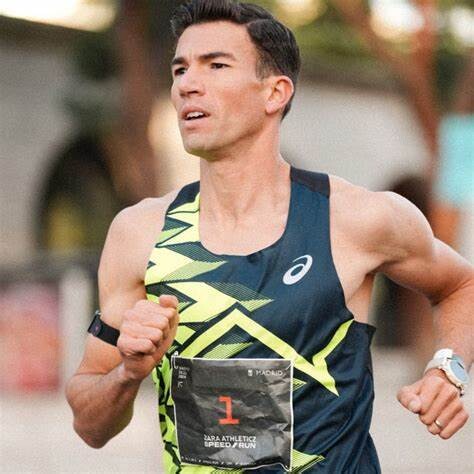
After a few years of absence, the Nationale-Nederlanden San Silvestre Vallecana will once again enjoy the elegant strides of Adel Mechaal.
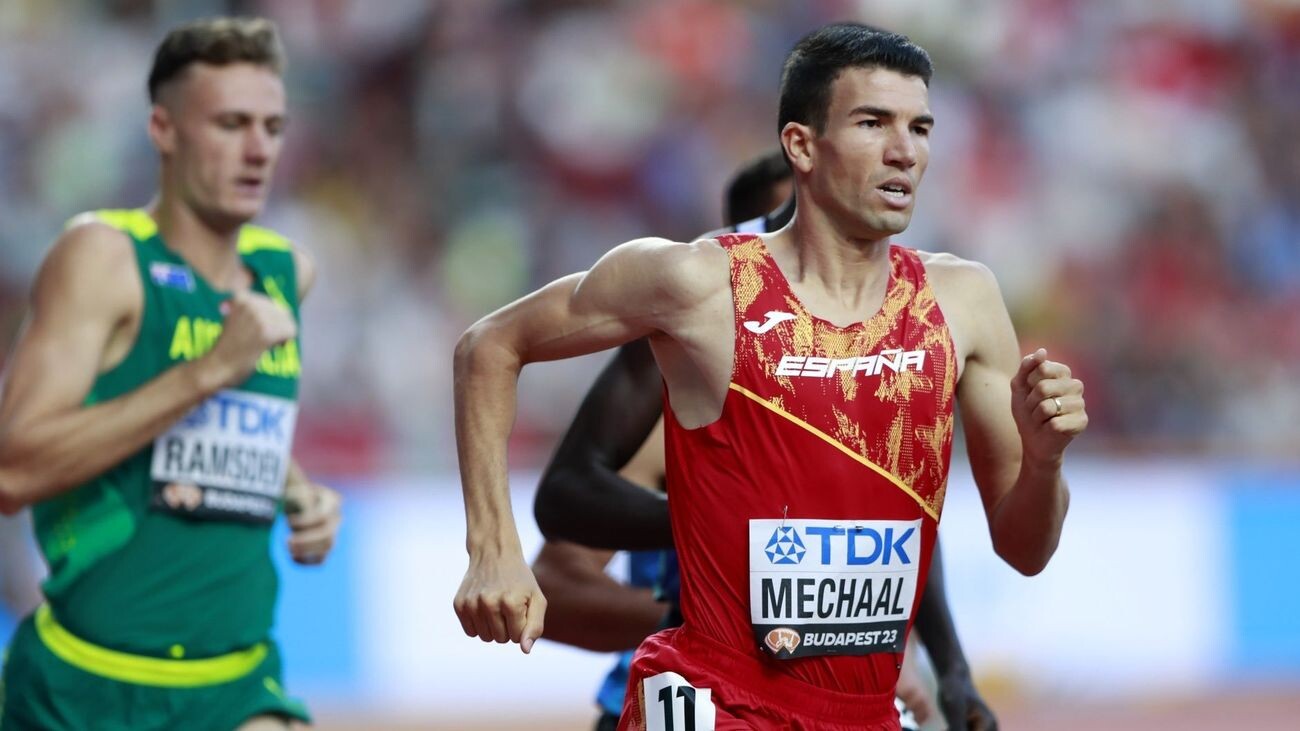
The national record holder, in 1500 meters in indoor track and European champion in 3,000 meters in 2017, is in one of the best moments of his career, as he recently evidenced in the streets of Madrid, in the Speed Run, to become the fastest Spaniard in history in a 10K with a brutal record of 26:46.
Adel Mechaal dreams of glory in the end-of-year classic, as do two Madrilenians who know what it's like to run fast in the Nationale-Nederlanden San Silvestre Vallecana. Jesús Ramos returns after climbing the podi
(12/18/2024) ⚡AMPby Marca
Saint Sylvester Road Race
The Saint Silvester Road Race (Portuguese: Corrida Internacional de São Silvestre) is a long-distance running event, the oldest and most prestigious street race in Brazil. Regarded as the main international event in Latin American athletics, the Brazilian competition is held yearly in the city of São Paulo on December 31. São Paulo's race was originally known as a "marathon", although...
more...'When I race, I talk to myself' - Sifan Hassan reveals racing antics that have made her a distinguished racing machine
Sifan Hassan reveals how talking to self while racing helps her to conquer fear and this helps her bring her A-game.
Paris Olympic marathon champion Sifan Hassan, one of the most decorated athletes in recent times, has spilled the beans about one thing that has made her a dominant force in her specialties.
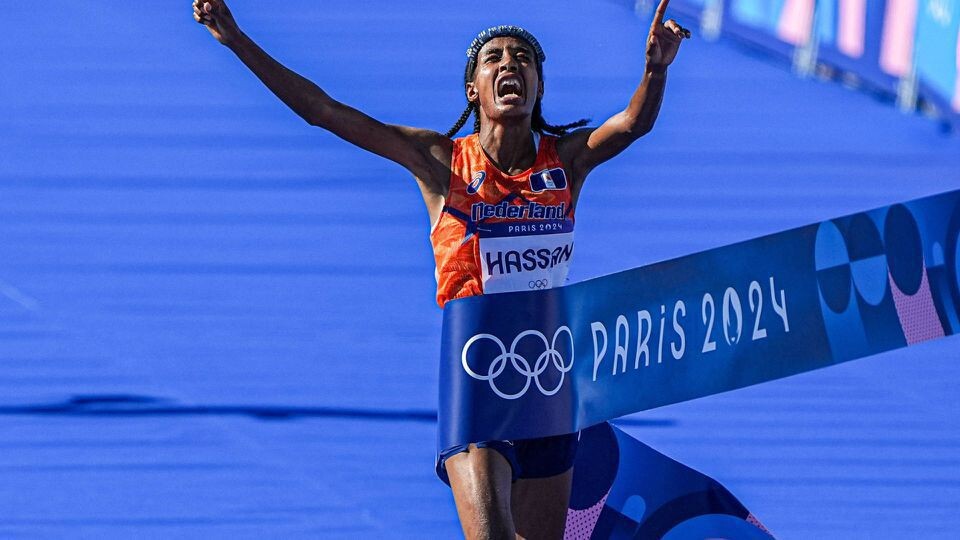
While most athletes, whether on track or road races focus entirely on the job at hand, the 31-year-old said she normally talks to herself.
Hassan, the only athlete in Olympic history to win medals across a middle-distance event and both long-distance races in a single Games, added that self conversation is the biggest part of her motivation. "When I race, really, I talk too much. I can’t stop talking,“ Hassan, the double bronze medalist in Paris, told World Athletics.
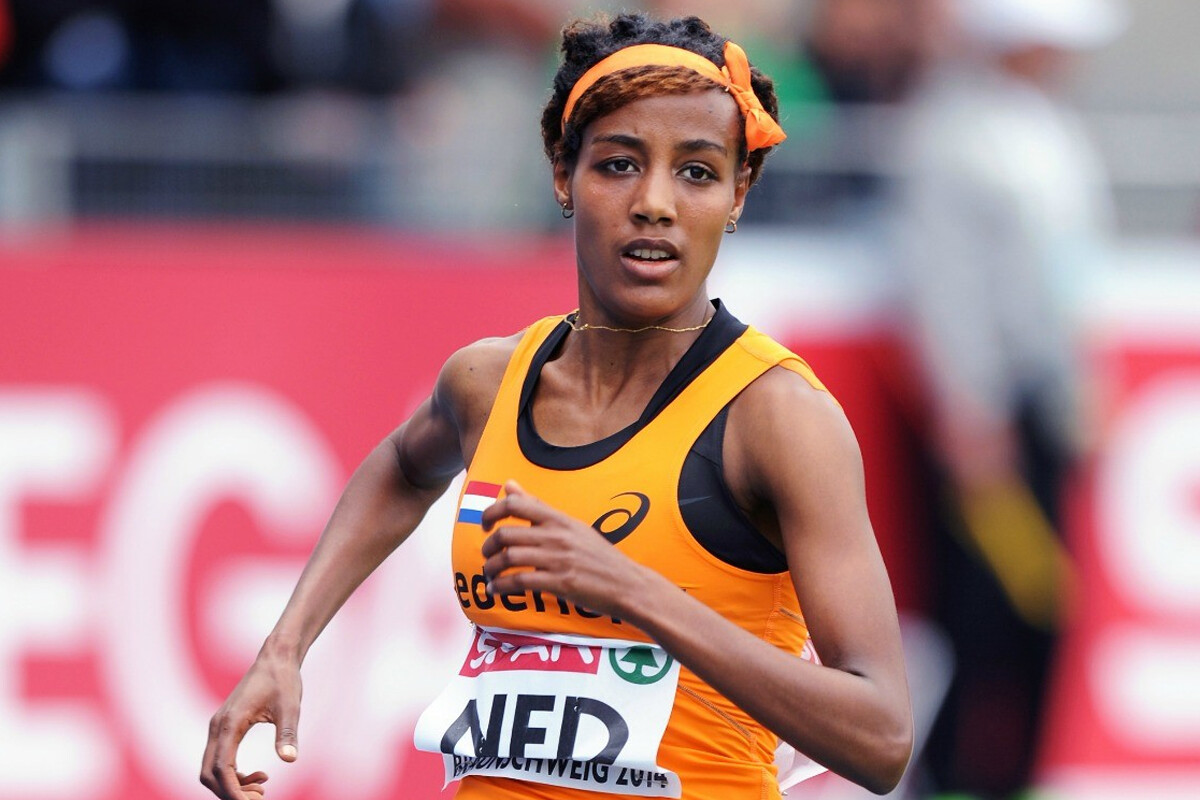
The three-time World Indoor medalist maintained that she normally wakes up very early and meditates on what the race holds for her and it was a similar case in Paris.
"I woke up at 4am and I was telling myself: 'This is the wrong thing I have done'. Then before the race, I looked at everybody and how fresh they were. And I looked terrible! I was so scared of myself. I tried talking to myself then, getting ready to use my brain to run," she observed.
Hassan was born in Adama, Ethiopia but she left her home country as a refugee and arrived in the Netherlands in 2008 at age 15.
She acquired Dutch citizenship in 2013. She held a world record at 10,000m for two days in June 2021.Hassan holds six European records (1500m, 3000m, 5000m, 10,000m, half marathon, marathon) and three other Dutch records.
(12/18/2024) ⚡AMPby Evans Ousuru
Morning people make faster marathoners, study shows
If you’re the type of person who typically jumps out of bed at the crack of dawn, thrilled to greet the new day, and who feels most productive in the morning, you may be more likely to achieve your marathon time goal than your night owl training partner, according to a new study published in the Journal of Sleep Research.
Of course, there are many factors that influence running performance. But there is less data around “circadian preferences” (i.e., whether you identify as a morning person or an evening person) and “sleep inertia” (how hard you find it to transition to being awake, after you get out of bed) as they relate to running performance.
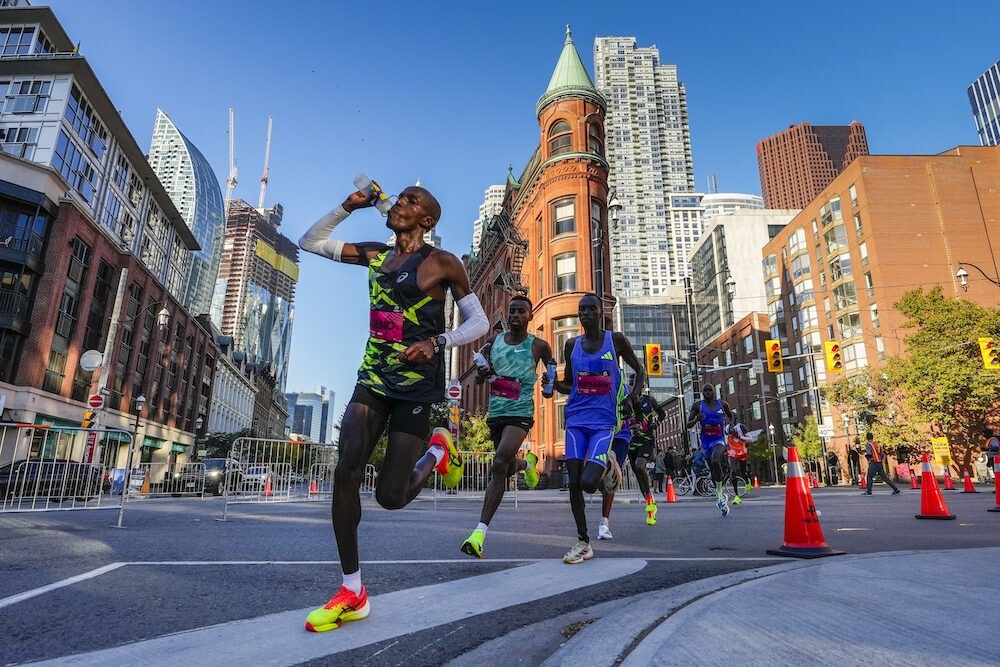
The study was conducted among 936 participants at the 2016 London Marathon. Co-author Jesse D. Cook (a postdoctoral fellow at the University of Wisconsin-Madison and host of the Sleep Research Society Podcast) told Psypost.org marathons are good settings for this type of research, since they typically start early in the morning. (Canadian 1976 track Olympian and professor of kinesiology at the University of Calgary Penny Werthner is also one of the study’s co-authors.)
The data was surprisingly clear: people who identify as morning persons run a whopping 13.9 minutes faster, on average, than people who identify as evening persons, and the more strongly the identification, the greater the difference. Moreover, those who find it takes them more than 30 minutes to transition to being fully alert after waking also ran slower than those who felt alert more quickly, though this connection was less significant than the morning vs. evening distinction. (This correlation makes intuitive sense–if you’re having trouble waking up, you might find that running a marathon more or less immediately upon waking is quite challenging, and would result in slower race times than if you ran it later in the day, when you feel more alert.)

The study also took into account participants’ personal and sleep habits and caffeine consumption, as well as age and sex, to account for these other variables; however, it’s possible that circadian preferences and sleep inertia are also associated with other factors, such as psychological characteristics and how much people train. (Cook emphasized that the study does not show direct causation.)
Cook implied that, while trying to change your body’s circadian rhythms may be not be practical, being aware of your body clock and the possible connection between circadian rhythms and performance could help you perform better. For example, scheduling training runs around the same time as the race start will help you get used to early start times.
(12/18/2024) ⚡AMPby Anne Francis
Olympic 800m champion refuses to sign with Grand Slam Track
Olympic 800m champion Keely Hodgkinson has expressed her lack of interest in signing with Grand Slam Track (GST), the new, lucrative rival to the Diamond League, according to The Standard. The British athlete plans to focus on running fast times and winning medals in 2025, choosing to forgo the chance to compete for the enormous US$400,000 prize purse awarded for winning all four GST meetings.
Hodgkinson still hopes to participate in the circuit as one of the four Challengers invited to compete. (Signed athletes are referred to as Racers). Michael Johnson, the creator of GST, plans to select these athletes based on their speed and popularity, while aiming to fuel existing rivalries. Challengers have one shot at the US$100,000 prize offered at each Slam, whereas Racers, who are already guaranteed base compensation upon signing, compete for the generous purse four times.
“I think it’s great what [Johnson’s] doing, I just don’t feel like it’s for me next year,” Hodgkinson said. “I guess we’ll see where the league goes after that. But I look forward to hopefully doing one.”

Hodgkinson would be slated to race against her frequent rival, 2023 world champion and 600m world record holder Mary Moraa. She would also face Olympic 1,500m silver medalist Jessica Hull and American mile record holder Nikki Hiltz, who round out the short-distance event roster.
Required to (almost) double her distance
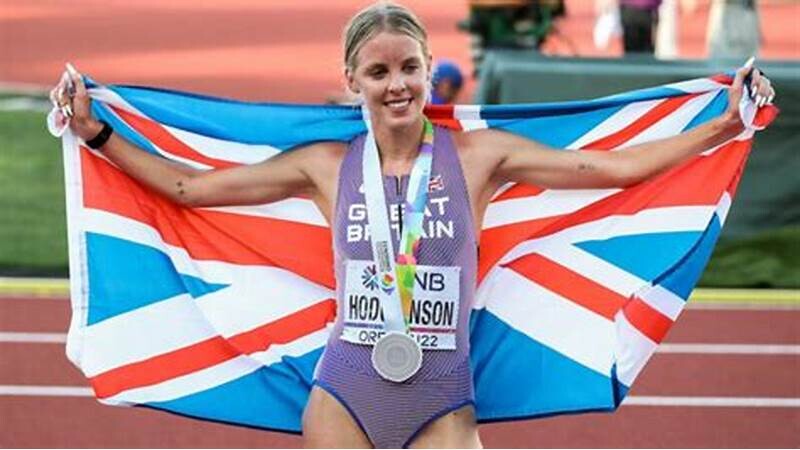
The league requires each athlete to participate in two events at each Slam; falling into the short distance category, Hodgkinson would race the 800m and 1,500m. While the Brit is less familiar with the latter, she would need to race the three-and-three-quarter-lap event four times during GST’s inaugural season.
An obligation to race eight times over four weekends and splitting her focus between two events doesn’t line up with Hodgkinson’s stated 2025 season goals. Although she called her season early due to an injury after winning gold in Paris, Hodgkinson already has her eyes on beating her personal best and earning more gold hardware from next year’s indoor European championships, and indoor and outdoor world championships
“It takes a special race”
“I do think the 1:53 is possible,” Hodgkinson, who holds a personal best of 1:54.61, told The Standard. “I think we’re so close to getting down there, but obviously it takes a special race. You’ve got to be in perfect shape, perfect conditions, the right race for all that to come together. I will definitely put myself in the best position to do so.”
Other major names missing from the GST roster include Jakob Ingebrigtsen, Noah Lyles and Sha’Carri Richardson. Currently, 43 of 48 athletes have signed with the league as Racers.
(12/17/2024) ⚡AMPby Cameron Ormond
'I'll be back in the 757!'-Quincy Wilson makes huge waves with emotional return announcement for 2025 season
Quincy Wilson is set to return to the track, announcing his first race since his Olympic triumph in Paris.
America's teenage sprint sensation Quincy Wilson has announced his highly anticipated return to the track, months after winning a gold medal at the Paris Olympics.

The 16-year-old athlete revealed that he will be making his first appearance at the VA Showcase in Virginia Beach, Virginia, marking a new chapter in his remarkable athletic journey.
Wilson, who skyrocketed to fame in the track world earlier this year, first caught the spotlight during the New Balance Nationals Indoor Championships.
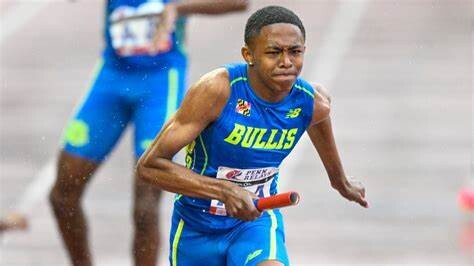
His performances throughout the season were nothing short of extraordinary, setting new personal bests in the 400m and establishing himself as one of the top junior athletes in the country.
Wilson made his mark at the U.S. Olympic Track and Field Trials, held at Hayward Field, where he captivated fans with his speed and determination.
"I'll be back in the 757!!" Wilson wrote on Instagram, announcing his return to competition.
His words stirred excitement among fans, as the VA Showcase will be his first race of 2025 and the track community is eager to see how he builds on his remarkable success.
Wilson's commitment to returning to the track after his historic Olympic achievement is a testament to his relentless pursuit of greatness.
At the U.S. Olympic Trials, Wilson made history by breaking the U18 400m World Record twice, stunning the track world with his incredible performances.
Despite finishing sixth in the finals, his efforts earned him a spot on the U.S. team for the 4x400m relay at the Paris Olympics.
There, the team claimed the gold medal, and Wilson became the youngest U.S. male athlete to win an Olympic gold in track and field.
Since the Olympics, Wilson has taken time to reflect on his journey, concluding his season and focusing on other aspects of his life, including college visits.
“I want to take a moment to speak to everyone out there who's faced doubt or fear. One of my most important lessons I've learned is to never ever doubt yourself. Believe in yourself. It's the foundation of everything, whether it's sports, life, or anything you pursue,” Wilson wrote, inspiring countless fans and aspiring athletes.
“There were many times when I didn’t know if I could make it, but I learned that if you trust yourself, keep working, and stay focused on your goals, the possibilities are endless,” he continued.
This empowering message resonated with many of his followers, reinforcing his belief in the importance of self-confidence and perseverance.
In recognition of his incredible accomplishments throughout 2024, Wilson was named the USATF Youth Athlete of the Year.
This prestigious award highlighted his growth as an athlete, his unwavering determination, and his contributions to U.S. track and field.
At the ceremony, he took the opportunity to express his gratitude, thanking his family, friends and coach for their continuous support.
(12/17/2024) ⚡AMPby Festus Chuma
Jack Rowe runs speedy 28:02 to win 10km in Telford
The British distance runner is now joint-fifth on the UK 10km all-time list after his run in the Shropshire town
Jack Rowe got the better of Phil Sesemann at the Telford 10km, shaving five seconds off his personal best with a time of 28:02 (December 14).
The Aldershot, Farnham & District athlete’s previous quickest mark was the 28:07 he clocked in Manchester three years ago.
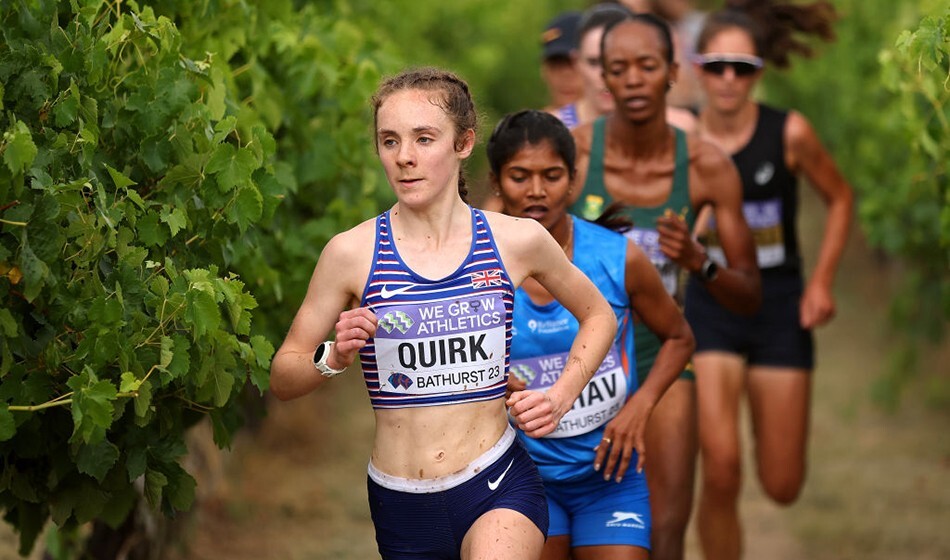
Not only was Rowe’s 28:02 the fastest time by a Brit over 10km this season but it also put him joint-fifth on the UK all-time list over the distance.
This was Rowe’s fourth major win of the autumn road season after victories at the Big Half, Vitality London 10,000 and Manchester Half Marathon.
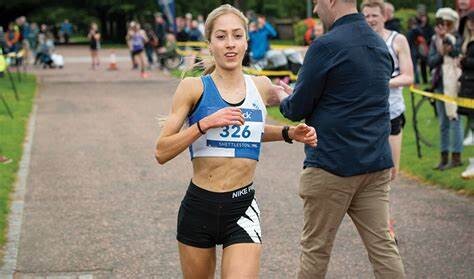
It’s been quite the season for Rowe, who’s recorded personal bests in the 1500m, 3000m, 5000m and 10,000m.
Sesemann meanwhile clocked 28:08 for second in Telford, just short of his 10km best of 28:26, set at the Corrida Pédestre Internationale de Houilles meet in France five years ago.
Kadar Omar was third in 28:34 with his Birchfield Harriers team-mate fourth Aron Gebremariam in 28:58.
It was Gebremariam’s first ever 10km and the English national cross-country junior champion performed well.
It was a much closer affair in the women’s field, with Amelia Quirk edging out Sarah Astin by just three seconds.
Quirk, who won the English national cross-country crown in 2020 and is a regular on British distance teams, clocked 32:40.
The Bracknell AC athlete races sparingly on the roads and this was only her second outing over 10km, with Quirk’s previous best mark being 31:53 from Valencia last year.
Natasha Phillips ran 32:56 for third place, a mark that put her top of the British under-20 rankings this season and fourth on the all-time junior list, after being pushed by Bournemouth based Ethiopian Atsede Gidey.
Teenager Holly Weedall also set a personal best of 33:21, improving on the 33:58 she clocked in Telford last year.
(12/17/2024) ⚡AMPby Martin Duff
Olympic triathlon champ to make 42.2 debut at 2025 London Marathon
On Monday, the organizers of the TCS London Marathon announced there will be a new face headlining the 2025 race. Great Britain’s Alex Yee, the reigning Olympic triathlon champion from Paris 2024, will make his marathon debut on Sunday, April 27, in his hometown of London.
The 26-year-old, who has won four Olympic medals in triathlon, has a ton of experience in distance running, representing Great Britain in track and cross-country events internationally. He has a 5K personal best of 13 minutes and 26 seconds and has run under 28 minutes for 10,000 meters.
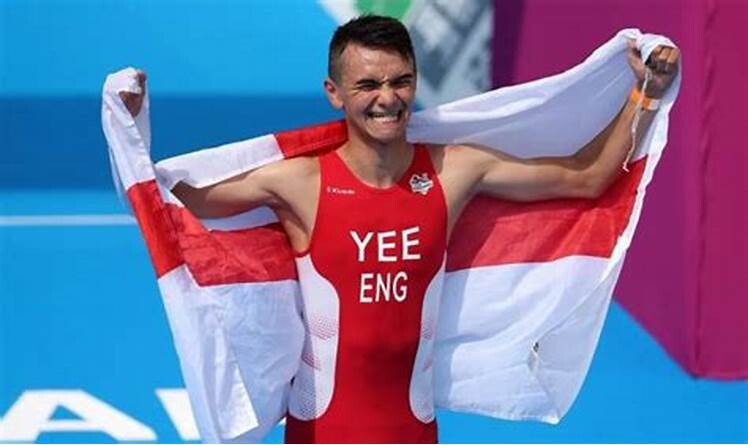
In triathlon, Yee is often regarded as the strongest runner in the sport. The reputation played in his favor earlier this summer in Paris when he caught New Zealand’s Hayden Wilde on the final lap of the Olympic triathlon to win gold. The strong field Yee will face at the 2025 TCS London Marathon will make it one of his biggest challenges to date. However, Yee will look to his home course advantage.
According to the press release, Yee raced the 2.6km Mini London Marathon five times during his junior career and grew up 15 minutes from the start line in Blackheath. “London Marathon day has been such a big part of my life growing up,” recalls Yee. “I remember racing the Mini London Marathon multiple times as a young athlete, and it was one of my biggest and most exciting races of the year. Taking part in a full marathon has always been an itch I’ve wanted to scratch, and there isn’t any other place than London where I would want to start that journey.”
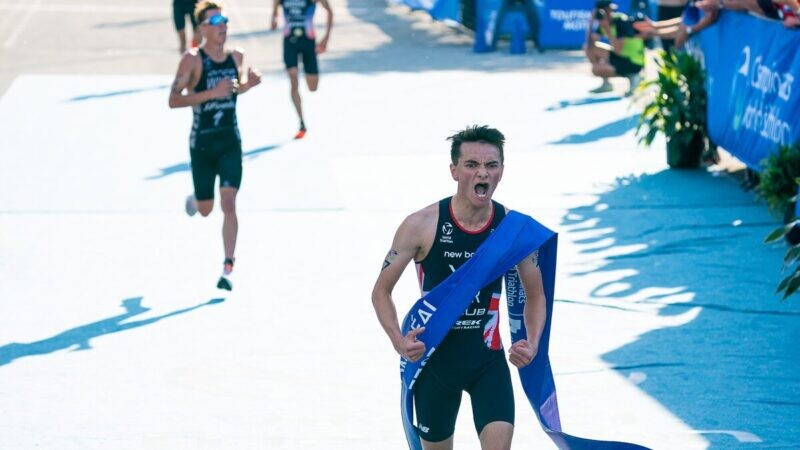
For his London build-up, Yee plans to put his triathlon training on pause to focus solely on marathon training. “I will be focusing my training over the coming months on the marathon and am looking forward to seeing what I can do over the 26.2 miles,” he said.
Last year, Kenya’s Alexander Munyao won his first Abbott World Marathon Major in London, denying Ethiopian distance legend Kenenisa Bekele a hoped-for first London Marathon win with a time of 2:04:01. Bekele did, however, set a new masters marathon record with his time of 2:04:15. The top British finisher was Emile Cairess, who ran 2:06:46 finish third, making him the second-fastest British marathon runner of all time behind Mo Farah.
Yee is the first runner announced for the 2025 London Marathon elite field. The full elite field will be announced in the new year.
(12/17/2024) ⚡AMPby Marley Dickinson
TCS London Marathon
The London Marathon was first run on March 29, 1981 and has been held in the spring of every year since 2010. It is sponsored by Virgin Money and was founded by the former Olympic champion and journalist Chris Brasher and Welsh athlete John Disley. It is organized by Hugh Brasher (son of Chris) as Race Director and Nick Bitel...
more...How to plan your best running season ever
he trails are icy, the sun feels like it’s on vacation, and runners everywhere are dreaming of warm race days. Whether you’re targeting a marathon, a speedy 5K or an epic trail run, now is the perfect time to map out your race season. Smart planning isn’t just about picking events; it’s about setting yourself up for a successful year.
Start with the big picture
What’s your “A” race? The one that gets your heart pumping just thinking about it? Centre your season around this event, then add smaller races to sharpen your skills or just for fun. Prioritizing ensures you’re peaking at the right time and not burning out halfway through the year. Not into racing? Choose one big goal (distance, FKT or PB, whatever your jam is) with less intense adventures building up to it.

Build a base first
Winter is the time for base training—a steady diet of easy miles to build endurance and strengthen your aerobic engine. Building a strong base reduces injury risk and improves long-term performance. Hold off on hammering out intervals or tough tempo sessions until your body is ready to handle the load.

Sprinkle in strength and mobility
Don’t just run—build strength and flexibility, too. Research suggests that strength training can improve running economy by up to eight per cent, while mobility work helps prevent the dreaded winter stiffness. Bonus: adding these elements now gives you a head start when the mileage climbs later.
Plan your peaks and breaks (and focus on the basics)
Races are exciting, but too many can derail your season. Aim for two or three peak races and use others as training opportunities. Don’t forget to pencil in recovery weeks post-race. Rest is where the magic happens—your body adapts, repairs and gets stronger. Make sure you plan to fuel well throughout your season, including during rest periods, and make sleep a priority.
Adapt as you go
While a solid plan is crucial, life happens. Injury, weather or unexpected commitments might shift your season. Stay flexible and ready to adjust. A successful runner isn’t just fast; they’re adaptable. When running feels challenging and motivation is low, remind yourself that you’re playing the long (consistent) game, and the payoff is coming.
(12/16/2024) ⚡AMPby Keeley Milne
2,400 runners cross the Mississippi Gulf Coast Marathon finish line
The Gulf Coast Marathon events invited runners with all levels of experience to cross our coastlines.
The full marathon runners started at Henderson Point in Pass Christian, and those running a half marathon— 13.1 miles— began the journey at Jones Park.
After 26.2 miles, Jake Braam’s victory could practically be heard all the way back at Henderson Point.
“It feels really good. Just awesome to represent the home state, Minnesota, and come down, get some southern hospitality, and come out with a win... my first win ever,” Braam said.
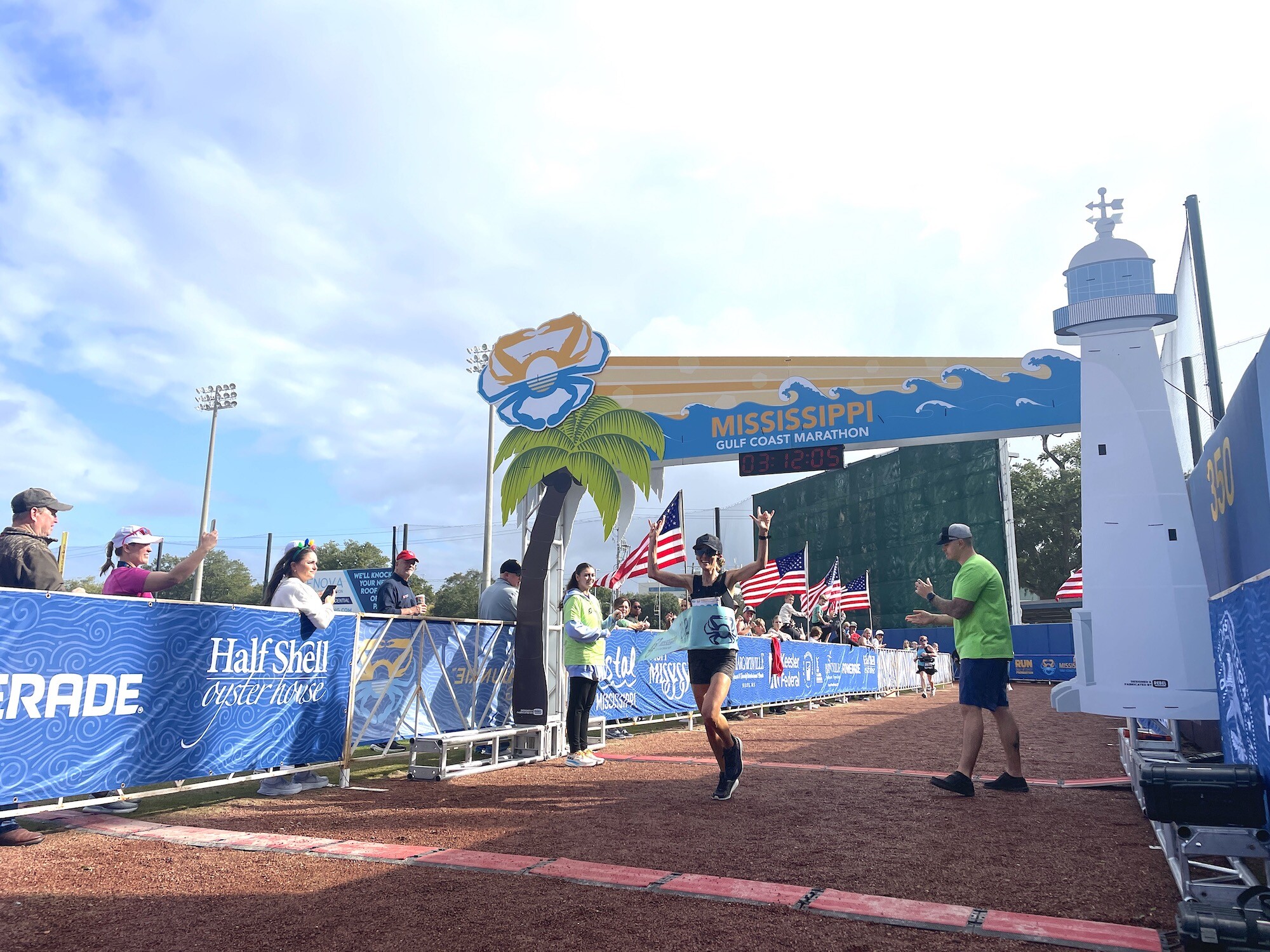
Braam completed the race in around 2 hours and 38 minutes.
But, before the finish line, Mother Nature tested the runners with wind and rain.

“It was pretty windy out there, so just kind of fighting through,” Braam explains. “It actually got windier as the race went on, so it got tough in those last miles where you’re just kind of suffering and you got to put your head down and just get after it.”
Behind Braam was Katherine Phillips, the overall champion in the race’s female category.
“I think we have everything today. It was chilly at the beginning, we had rain, we had a little bit of sun and I think a headwind the whole time,” Phillips said. “But we had some awesome pacers and everybody was so nice so it was a great group to be with.”
Phillips crossed the finish line at 3 hours and 12 minutes. She says her experience as a collegiate athlete and love of running is what brought her from Milton, Florida to participate in this race.
“Super excited and blessed. This is actually my first marathon I’ve ever ran, so I was super excited to be out there today,” Phillips said.
Her husband and son were among the spectators cheering her on throughout the long journey.
FreshJunkie Racing and Mississippi Gulf Coast Marathon marketing director Mike Wattigny says 2,400 runners made for a record-breaking turnout.
“What we’ve seen in the last couple of months is a significant uptick in our registration which is great to see,” Wattigny said. “This year the full marathon, the 5K and the beer mile all sold out. Next year is the 10th anniversary of the Mississippi Gulf Coast Marathon, so we’re anticipating a bigger crowd than ever.”
The half-marathon winner was Jacob Plocher from Gautier, and the overall female champion was Maya Espinosa from Baker, Florida.
(12/16/2024) ⚡AMPby Destiny Polster
Mississippi Gulf Coast Marathon
Founded in 2015, the Mississippi Gulf Coast Marathon, a Coastal Running Fest, celebrates the local flare and beauty of running along the scenic beaches from Pass Christian to Biloxi. Races include a marathon (26.2 miles), half marathon (13.1 miles), 5K (3.1 miles) and kids marathon race program (a 1.2 mile fun run). The Coors Light Finish Festival will be held...
more...Kipkorir, Jemal win this year’s Taipei Marathon
Brimin Kipkorir of Kenya and Amid Fozya Jemal of Ethiopia won the men’s and the women’s categories, respectively, in the annual Taipei Marathon yesterday, which drew about 28,000 participants.
Kipkorir finished the 42.2km run in 2 hours, 11 minutes and 41 seconds, which was about 2.5 minutes off the event’s record of 2:09:18 set by his countryman Paul Lonyongata in 2020.
Meanwhile, Jemal — who also won the New Taipei Wan Jin Shi Marathon in March — finished with a first-place time of 2:32:47, about seven minutes behind the race’s women’s record of 2:25:55.
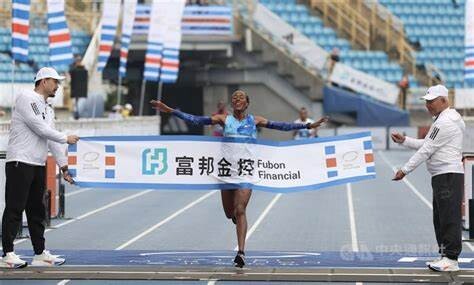
For winning the race, Kipkorir and Jemal will each receive a first-place prize of US$67,500, organizers said.
The fastest Taiwanese runner in the men’s category was Chou Ting-yin, who set a personal best time of 2:21:17.
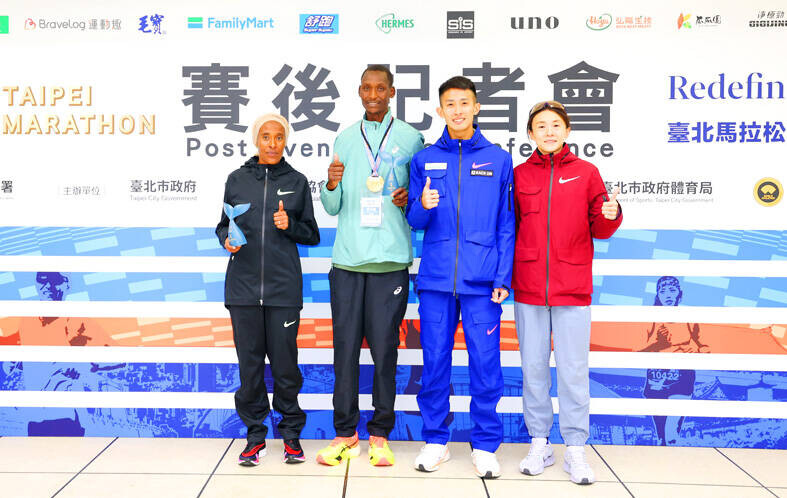
In a post-race interview, Chou said he had fared poorly in the Chicago Marathon in October despite entering the race in peak condition.
After returning to Taiwan, he had struggled with training, only to surprise himself yesterday by setting a personal record, he said.
In the women’s category, Hsieh Chien-ho finished first among domestic competitors with a time of 2:51:12.
The Taipei Marathon was established in 1986, and, following a multiyear hiatus due to the construction of the Taipei Metro, has been held annually since 2001.
The marathon begins at Taipei City Hall and follows Renai Road west toward the Presidential Office and Ximen. It then continues up Zhongshan N Road and crosses the Keelung River, which it follows east to Nangang Exhibition Center, before looping back and ending at Taipei Municipal Stadium.
The marathon is one of two World Athletics Gold Label Road Races in Taiwan. The other is the New Taipei Wan Jin Shi Marathon.
(12/16/2024) ⚡AMPTaipei Marathon
The Taipei Marathon is an annual marathon held in Taipei, Taiwan, on the third weekend in December. The event has an Elite Label from World Athletics and has been held annually since 1986. It is the preeminent long-distance annual running event in Taiwan. On December 22, 1985, the Chinese Taipei Athletics Association organized a road running demonstration event that served...
more...UT Southwestern student Travis Dowd wins 2024 BMW Dallas Marathon in his debut
Win a marathon on your first time running the distance? That’s exactly what Travis Dowd did Sunday morning at the 2024 BMW Dallas Marathon.
The current UT Southwestern medical student and Rice alumnus broke the tape in a time of 2:26:08, beating second-place finisher Al Maeder by just over four minutes.

“I’m just so blessed, I ran in college and never had a race with this much support. Every single time I felt like I was about to die, I went by a crowd [gesturing for crowd support] and they’re all screaming for me,” Dowd said.
A rain-soaked Dowd soaked in the crowd as he crossed the finish line at Dallas City Hall Plaza. He fell to the ground shortly after finishing due to exhaustion, before making his way to the side, out of the oncoming traffic from runners finishing the half-marathon.
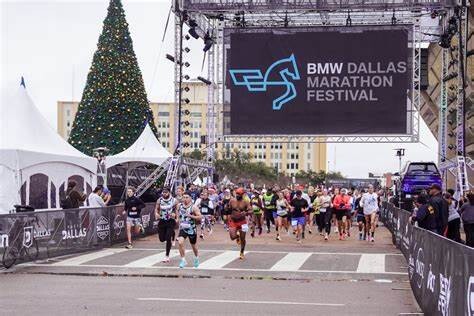
It was 57 degrees at the start of both the half and full marathons, rising to 65 by the time the winners crossed the finish line. However, the over 80% humidity and light rain throughout created some adverse conditions for runners.
After a standout prep running career in Austin at St. Stephen’s Episcopal School, Dowd was a key member of Rice’s track and cross-country teams. He said he drew upon his experience training in the Houston heat during his marathon debut Sunday.
“I know the weather wasn’t ideal for a marathon, but I loved it. I came from Houston, nice and humid and hot. I felt good right away and felt like I was walking the first 10 miles,” Dowd said.
Woodward wins women’s marathon
Almost exactly 20 minutes after Dowd crossed the line, Arkansas physical therapist and elite runner Erin Woodward won the women’s marathon in 2:46:51.
“I’m very grateful. It was my second-ever marathon. My first one was about 11 months ago and I’ve changed a lot of things with life and training. It’s an affirmation that I’m going in the right direction,” Woodward said.
Woodward saw the course visibility and conditions as advantageous.
“I love the fog. I felt like I was in a movie. It helped me also to not focus too much on the people in front of me because you couldn’t see them and just focusing on running my race,” Woodward said.
(12/16/2024) ⚡AMPby Kellen Bulger
BMW Dallas Marathon
The BMW Dallas Marathon is the result of the efforts of a pioneering group of brave Dallas runners, who had the foresight to establish an annual 26.2-mile race more than 40 years ago. In 1971, Tal Morrison – the official founding father of the marathon – placed a $25 ad in Runner’s World beckoning runners from around the country to...
more...Gift Guide for Runners: What Not to Buy This Holiday Season
Before you head to the running store for your holiday shopping, here’s a friendly reminder: even the most thoughtful gifts can sometimes miss the mark for the Runner in your life.
Don’t get me wrong—I appreciate any gift! After all, it’s the thought that counts. But when it comes to holidays and birthdays, I can’t help but worry that my friends and family might waste money on things I don’t actually need or want as a runner. Sure, there are plenty of runner gift guides (we’ve written many of them), but an equally useful article might be a guide on what not to gift runners. So, at the risk of sounding like a grumpy Grinch, I’ve decided to write one myself. Here are some of the worst gifts for runners, in my humble opinion:

1. Shoes
Just don’t buy me shoes. Unless we’ve had a long conversation about a specific pair I’m craving, or you’re replacing the exact same model that I’ve worn to the bone and I’ve raved about it repeatedly, it’s best to avoid. Runners are particular about their shoes, and everyone’s foot shape and running gait are different. Not all shoes fit the same. Instead, consider a gift card to your local running store, so your runner can pick out exactly what they want—no guesswork involved. Plus, you’ll be supporting a local business!
2. Novelty Running Items
This might just be a “me” thing, but I’ve received my fair share of “Eat, Run, Sleep” T-shirts, and they’re currently gathering dust in the back of my closet. Perhaps I’d have worn an “I Run For Wine” shirt a few years ago, but now, I can’t help but cringe at anything in that category—and I’m not alone. If you’re gifting running apparel, aim for something timeless, like a sleek, functional piece of gear that could be worn on any occasion. And make sure it’s made with running-friendly materials like nylon, polyester, or polypropylene. It’s a much safer bet than a “Running BC Therapy is Expensive” cotton long sleeve.
The same goes for running-themed non-running items. I have a Chicago Marathon mug I adore, but do I need another dozen mugs that say things like “Fueled by Miles and Coffee”? No. The same logic applies to wine glasses, dish towels, posters, etc.
3. (Bad) Socks
One thing many people don’t realize is that there’s a big difference between regular athletic socks and running socks. Sure, you might find tons of ankle-length Nike socks at big box stores, but running in cotton socks is a recipe for blisters, chafing, odor, and discomfort. Some runners are loyal to specific brands and materials, so buying socks can be tricky. If you’re unsure, though, aim for running-specific socks made from moisture-wicking materials like polyester, nylon, spandex, or wool. And if your runner cares about being stylish, make sure they’re crew-length. If you’re playing it safe, opt for fun, everyday socks (you can never go wrong with cat socks).
4. Sports Nutrition
As you browse the aisles of the running store, you might be tempted by the shiny stock of gels, drink mixes, energy cubes, and waffles. But before you buy, remember: if you don’t know exactly what your runner likes, don’t cave to temptation. Everyone’s stomach is different, and finding the right nutrition for long runs can take a lot of trial and error. Instead, consider gifting some high-quality dark chocolate or their favorite candy.
5. Cheap Fitness Watches (Yes, we mean Fitbits)
Many runners love their tech, but you can’t really find “cheap” alternatives to the high-performance fitness watches by brands like Garmin, Coros, and Apple. A Fitbit just isn’t the same as a running watch. It has limited metrics, less accurate GPS, and shorter battery life. If you’re set on buying a fitness watch, make sure your runner doesn’t already have one, and be prepared to invest in a quality model that meets their needs.
Not to Be a Scrooge
I don’t mean to be a Debbie Downer. There are plenty of fantastic, runner-friendly gifts out there, and I’m sure your runner will appreciate whatever you choose—just keep these common pitfalls in mind to make sure your gift hits the mark!
(12/15/2024) ⚡AMP
SHOULD YOU TRAIN WHEN YOU’RE SICK?
Sometimes your body will decide for you—but sometimes you need a little guidance
There’s no doubt about it—getting sick in the middle of a training block sucks. You may need to skip training runs, or even your goal race. Only you can decide whether you’re too sick to run, but there are some useful guidelines.
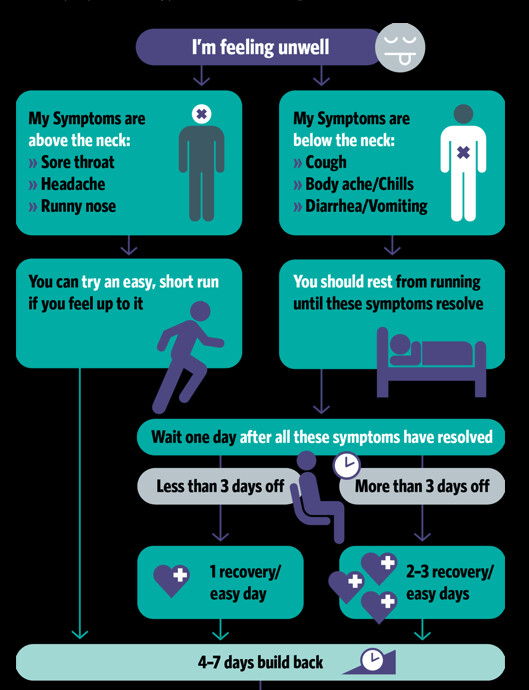
Dr. Rose Zacharias is an emergency medicine physician based in Orillia, Ont. She says it’s OK to run if you are in good health overall and you’ve been running for a while (and you don’t feel like you’re going to collapse if you start running). An experienced runner who’s feeling a bit under the weather could try a shorter, slower run, just to get some miles in, but “if you feel more fatigued or develop more pain and you continue to feel unwell, then it is time to rest,” she advises.
Zacharias adds that “new shortness of breath and/or new chest pain, or anything gastrointestinal, is a sign that you should skip the run. And if activity makes you feel worse, then it’s best to stop and rest up, or get an expert opinion.”
She points out that different illnesses will affect your cardiovascular and metabolic systems differently, and affect your ability to run in different
It also depends how important those runs are to your training. The first few runs in base season aren’t that critical, and skipping them while you take time to recover from illness are unlikely to affect your training once you resume running. However, being forced to miss a key workout a few weeks out from a race might be more detrimental to your performance, and could result in your having to re-evaluate your goal, possibly switching to a target race that’s later in the season.
When you’re ready to resume physical activity, it’s best to try walking or some gentle yoga before diving back into run training, and when you’re ready to run, keep the pace easy and conversational for the first couple of outings. Don’t feel bad if you need to take walk breaks. Remember that nutrition is an important part of training; if being sick prevented you from eating normally for a few days, your energy stores will be depleted.
A good rule of thumb is to allow two to three days of easy running for every day you were sick. Pushing too hard too soon could end up setting you back even further. Avoid high-intensity workouts for a couple of weeks, since these could further compromise your immune system.
It can be tempting to push too hard to catch up after taking time off due to illness, but coming back gradually will pay dividends in the long run.
Lauren Charlton is a competitive distance runner and future sports dietitian who’s passionate about keeping runners in the sport for the long game.
(12/15/2024) ⚡AMPCan Running to Holiday Music Improve Your Splits?
It’s the most wonderful time of the year for ‘music doping.’ Feliz Navi-dash your way to happier, faster runs with Christmas carols.
There are countless studies surrounding the impact of holiday music on our mental health, with both positive and negative effects proven. While you may enjoy bopping along to The Jackson 5’s “Santa Claus is Coming to Town” when it plays on the car radio, or always crank up the volume when Mariah Carey’s “All I Want For Christmas Is You” comes on at your holiday party, these classic carols may actually be most useful when you’re out dashing through the snow, if you know what I mean.

Indres Viskontas, a neuroscientist, professor at the University of San Francisco, and author of How Music Can Make You Better, has analyzed and compiled copious amounts of research pertaining to music and psychological impact. For example, one study had 20 male participants perform two six minute running tests, one with and one without music. Researchers measured mean running speed, blood lactate, total distance covered, heart rate, and rate of perceived exertion. The results concluded that runners who listened to their music of choice were significantly faster and had lower blood-lactate concentrations.
Viskontas says amateur athletes specifically will benefit from running to music they enjoy—emphasis on the word “enjoy”. It might be obvious to some, but benefits like improved mood, release of endorphins, and overall performance won’t be as strong if you’re listening to songs that you don’t enjoy.
All that to say, elite athletes won’t necessarily improve by listening to music.
“This is where the studies split and stop showing results,” Viskontas says. “When you’re at the far end of the spectrum of skill, it’s sort of moot. For example, a marathoner who sits at the front of the pack is probably not going to run faster if they are listening to music—they’re already going as fast as they can. For the average runner, however, there are significant benefits.”
How ‘Music Doping’ Works
Music affects the brain on a chemical level. Viskontas cites a few mechanisms surrounding music and how we perceive it. The first is that music raises the arousal levels in the brain. An example of this can be seen in dementia patients who, according to their CT scans, don’t show much brain activity due to the disease. But studies show that if you play music that
Another mechanism is called the analgesic effect, or the endorphin effect. This is when music raises levels of neurochemicals, like dopamine and hormones,that play important roles motivation, especially when it comes to movement.
“Music can wake us up, synchronize our brain activity and movements, and raise neurochemicals that allow us to run faster and stronger with less pain,” Viskontas says.
‘Run Rudolph Run’
Given all this research about the correlation between endurance performance and music, we wondered how Christmas carols, one of the most polarizing genres, fit into these studies. For some people, holiday tunes can have a lot of negative associations, while others experience heightened senses of happiness.
“One of the reasons Christmas music has such an emotional impact is because it comes at a time when we either celebrate with family, or are reminded of family we lost,” Viskontas says. “We only hear it during one part of the year, and that happens to be a time where we’re making a lot of memories, either happy or sad.”
She adds that, as humans, we are highly influenced by sounds in the world. It’s why, for example, we shy away from abrupt noises like a car backfiring or
Hannon is of the opinion that the research regarding music—jolly or not—can be divided into two schools of thought: It enhances your running performance or it alleviates pain, making you feel better overall during your workout but not necessarily producing better results.
“There isn’t actually as much research as you’d think on this,” she says. “It’s hard to get a whole bunch of people to show the same effects because there are so many factors that influence your performance on any given day.”
In any case, there’s a short window of opportunity for these benefits, if you reap them. Listening to Christmas music before the 25th can spur excitement of what’s to come, whereas hearing your favorite merry tunes in January can seem sort of…depressing.
As for Viskontas, she says she grew up singing in the choir in school, so there’s some Christmas music she can’t listen to without crying—a sort of melancholy nostalgia. But other carols, more modern tunes, bring about more positive associations.
“I listen to them while I’m trimming the tree or doing something else holiday-related,” she says. “But going for a run while listening? I’ve never tried. But, you know what
O Come, All Ye Faithful, Pentatonix
Carol of the Bells, Mykola Dmytrovych and John Williams
(12/15/2024) ⚡AMPKebede retains 25km crown in Kolkata, Kissa beats Ebenyo
Sutume Kebede secured a second successive Tata Steel Kolkata World 25K crown, while Stephen Kissa beat defending champion Daniel Ebenyo to the men’s title in the World Athletics Gold Label road race on Sunday (15).
Ethiopia’s Kebede recovered from a stomach issue just in time to defend her title. She set a stand-alone world 25km best of 1:18:47 to win last year’s race and this time clocked 1:19:21 to triumph ahead of Kenya’s Viola Chepngeno and Bahrain’s Desi Jisa.

Kebede was challenged by 2022 winner Jisa and Chpengeno, but after Chpengeno started to fade over the final couple of kilometres, Kebede became a clear leader after 23km.
Chepngeno finished second in 1:19:48, while Jisa finished a distant third in 1:21:33.
“I am very happy to win (here) again,” said Kebede. “I wanted to break the course record but was a little tired of travelling. I am training for the next year and will participate in marathons.”
In the men’s race, Uganda’s Kissa rebounded to log his first win in an international competition in five years.
The lead group of Ebenyo, Benson Kipruto, Kissa and Haymanot Alew reached 10km in 28:42. Last year’s winner Ebenyo – who also set a stand-alone world best for 25km (1:11:13) when winning last year's race – looked strong, remaining at the helm or alongside Kissa for much of the race.
They reached 15km in 42:56, with Ebenyo and Kissa still leading the pack as the pace picked up along the tram tracks of South Kolkata. Kipruto dropped off as Kissa took the lead at the 20km mark, clocking 57:50, with Ebenyo close behind.
Ebenyo tried to move away from Kissa but the Ugandan athlete held off the challenge to sprint to the tape and win in 1:12:33.
Ebenyo finished runner-up four seconds later, while Anthony Kipchirchir came through for third place in 1:12:55.
“I realised that I ran well today,” said Kissa. “I thought this could be my day. At the last kilometre I was comfortable, and I knew I could do it.”
Ebenyo, who finished fifth on his marathon debut in Chicago in October, said: “Every day, a champion is born in sports. Last year, it was me. This year, it was Kissa. That is the fun of sports. I am very happy. He has flown the flag of Uganda and congratulations. I was a little tired this year as I did not recover from the Chicago Marathon. I will take a break for the festive season and spend time with my family. I felt some fatigue today, but it is sports.”
(12/15/2024) ⚡AMPMelak and Moseti win Bangsaen 21 Half Marathon
Ethiopia’s Nibret Melak and Kenya’s Winfridah Moraa Moseti were victorious at the Bangsaen21 Half Marathon, a World Athletics Platinum Label road race, in Chon Buri in Thailand on Sunday (15).
Racing in humid conditions, Melak outkicked Alexander Mutiso Munyao and Geoffrey Toroitich in the closing stages to win in 1:02:32, while Moseti made her break earlier in the race to triumph in 1:10:01.
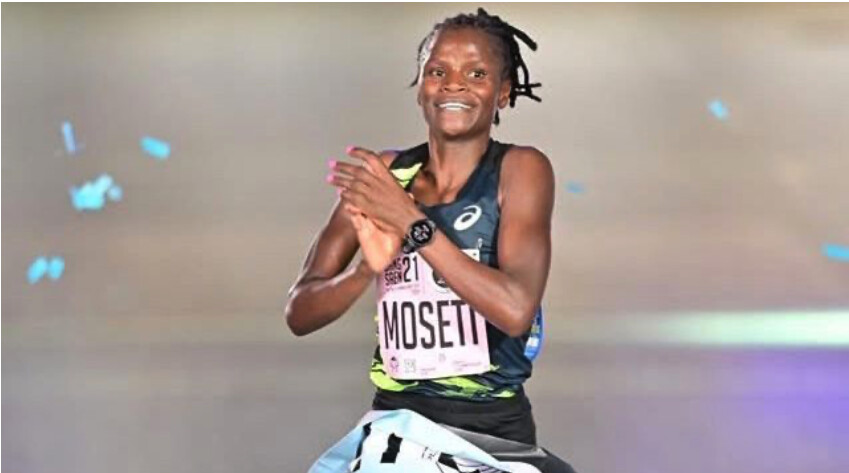
In the men’s race, eight athletes remained together as 10km was reached in 30:41, with Melak – who finished seventh in the half marathon at the World Road Running Championships last year – running towards the back of the pack. The pace picked up and the lead group was down to four by 15km, with Melak, Munyao and Toroitich joined by Leul Gebresilase as they passed that point in 45:07.
Toroitich, Melak and Munyao then made a break, with Toroitich leading the attack. The trio ran side-by-side with the finish line in sight, before Melak kicked again and created a clear gap to win by two seconds.
Kenya’s Munyao was second in 1:02:34, while his compatriot Toroitich was third in 1:02:36 and Ethiopia’s Gebresilase finished another three seconds back.
Hamburg Marathon runner-up Moseti was always among the leaders in the women’s race and was part of the group that reached 10km in 34:36, led by Kenya’s Gladys Chepkurui.Chepkurui and Moseti had Uganda’s Rebecca Chelangat and Kenya’s Rosemary Wanjiru for company at the 15km mark, reached in 50:44, but Chepkurui couldn’t maintain the pace as Moseti, Chelangat and Wanjiru made a break.
Moseti was clearly waiting for her moment to strike and she made a winning move, creating a gap on her rivals that would grow to 33 seconds by the finish line. She won in 1:10:01 ahead of Chelangat in 1:10:34, Wanjiru in 1:10:53 and Chepkurui in 1:11:11.
(12/15/2024) ⚡AMPby World Athletics
Bangsaen 21
We woud like to invite all kind of runners from all over the world to join us in the firts an only half marathon "World Athletics Elite Label" Award in Thailand. Bangsaen 21 Half Marathon, ASIA´S best Half Marathon. A single race of Half Marathon distance, experience the most beautiful and challege course along the unique Bangsaen Beach....
more...Two newcomers to Double Racing were the winners at the 12th Christmas Double 15k
The 12th Christmas Double 15K (10K + break + 5K) took place this morning (Dec. 14) in Palo Alto, California, despite challenging weather conditions, including rain and wind gusts up to 50 mph. Double racing first-timers emerged as the winners: 25-year-old Ethan Phelps finished as the top male with a total time of 50:45, while 29-year-old Taryn Cordain claimed the top female spot with a time of 59:35. The event also featured the Bob Anderson’s Kids Mile, which set a record with 70 entries, as well as 10K and 5K races.
60-year-old Jean Pommier, a world-class ultra runner ran a very strong 84% age-graded performance clocking 1:00:44. (Third photo) Jean was our Double Victory Cup Winner. The runner with the best age-graded score.
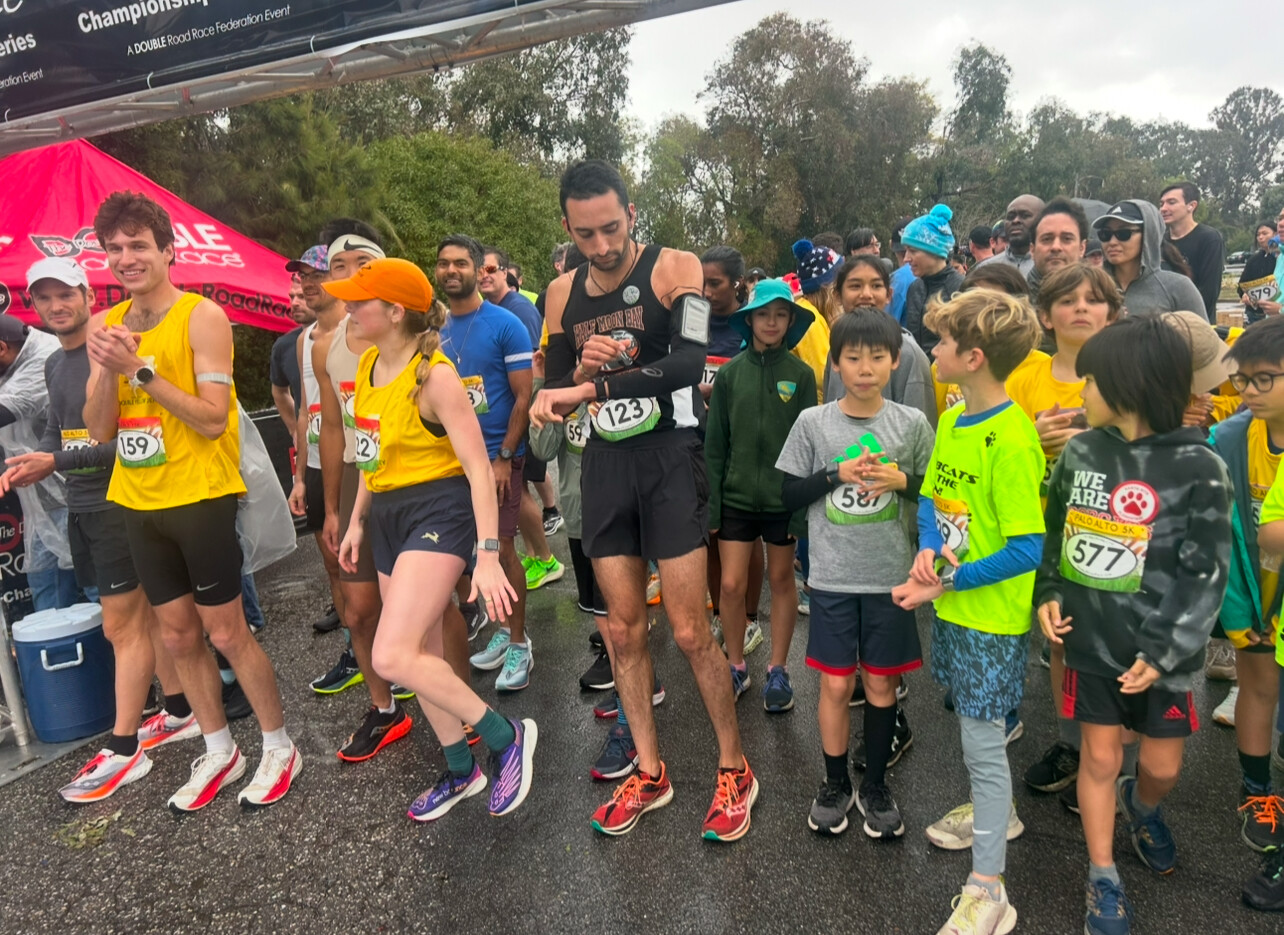
“The weather forecast was really bad the day before,” said Bob Anderson, the creator of Double Racing in 2012. “It was challenging, but it wasn’t as bad as they thought it would be. Our positive thinking worked, I guess.” Indeed, it was a good morning of racing, with nearly 350 participants registered.

In the Double the winner of the first leg (10k) wears the yellow jersey for the second leg. This way everyone knows who they need to beat to be the overall winner. In this case, both winners of the first leg also won the second leg. The next Double 15k is March 22 in Brisbane California.
(12/14/2024) ⚡AMPPalo Alto Double 15K and 10K/5K
Bring the whole family and enjoy our pre Christmas events. All participants get a special shirt and bag. All finishers get a special medal. $200 of cash prizes ($100 each for winners of Double 15k) There will be four events in Palo Alto. Palo Alto Double 15K (10K+5K), Palo Alto 10K, Palo Alto UjENA 5K Run/Walk and Bob Anderson's Kids...
more...Tigist Assefa tipped for victory at Sunday’s Bangsaen21
Ethiopia’s Tigist Assefa headlines the Bangsaen21 Half Marathon women’s elite field, a World Athletics Platinum Label event, in Chon Buri on Sunday (15).
She will be joined by Rosemary Wanjiru of Kenya and other elite athletes from across the world.
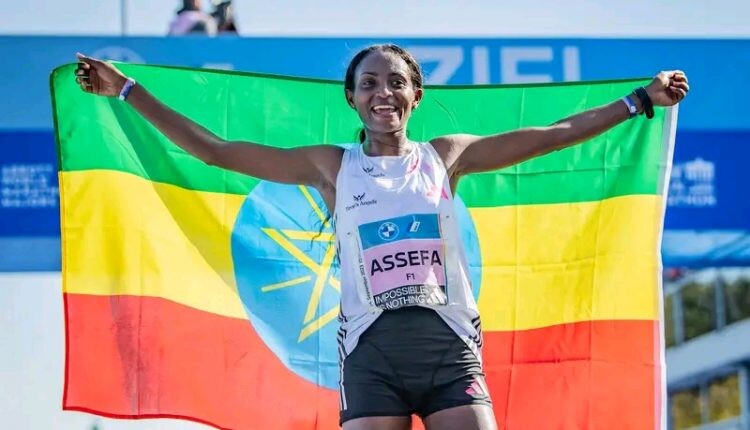
For Tigist Assefa, the race in Chon Buri is her first as an Olympic silver medalist. The former world marathon record-holder, who clocked 2:11:53 in Berlin last year, was a narrow second to Sifan Hassan in the Olympic marathon in Paris in August and prior to that she finished second in the London Marathon in April in 2:16:23.
She last raced a half marathon in 2022 and her PB of 1:07:28 dates back to April of that year.
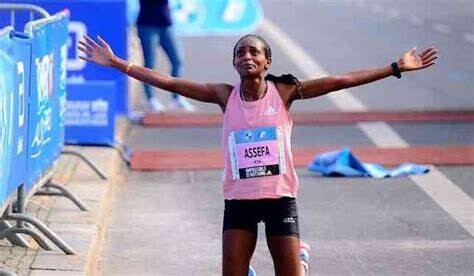
Meanwhile, Ethiopia’s Nibret Melak, Leul Gebresilase and Bazezew Asmare are also strong candidates for victory.
African 10,000m champion Nibret Melak, who finished seventh in the half marathon at the World Road Running Championships last year, has a best of 59:06.
(12/14/2024) ⚡AMPby Fana Broadcasting Corporate
Bangsaen 21
We woud like to invite all kind of runners from all over the world to join us in the firts an only half marathon "World Athletics Elite Label" Award in Thailand. Bangsaen 21 Half Marathon, ASIA´S best Half Marathon. A single race of Half Marathon distance, experience the most beautiful and challege course along the unique Bangsaen Beach....
more...Kenya's Catherine Reline stamps authority with Abu Dhabi Marathon win to pocket Ksh. 6 million
Catherine Reline claimed victory at the 2024 ADNOC Abu Dhabi Marathon, earning a $50,000 prize.
Catherine Reline has successfully conquered the marathon in her second attempt this year, claiming top honors at the 2024 ADNOC Abu Dhabi Marathon.
Reline clocked a spectacular time of 2:20:34 to claim top honors and walk away with a prize purse of US$50,000. Eritrea’s Dolshi Teklegergish came in second in the race, clocking a stunning 2:23:47 with another Kenyan, Aurelia Kiptui sealing the podium in 2:26:48.
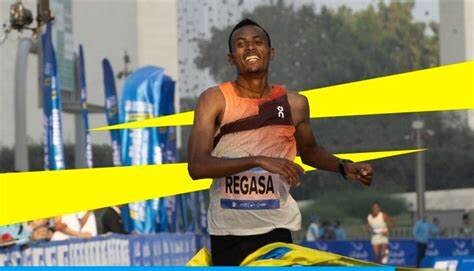
The Kenyan made her full marathon debut at this year’s London Marathon but failed to finish the race. Her win in Abu Dhabi displays her resilience and hard work as she did not give up on herself and continued competing and training hard.
She started her season with a third-place finish at the Sirikwa Classic Cross-Country Tour before heading to a sixth-place finish at the Ras Al Khaimah Half Marathon.
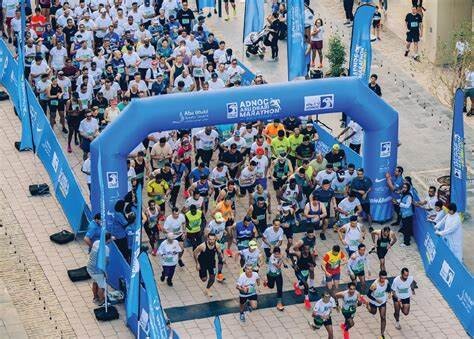
Catherine Reline proceeded to the London Marathon where she could not finish the race and quickly switched to the track where she finished seventh in the 10,000m at the Prefontaine Classic which acted as trials for the Athletics Kenya team to the Paris Olympic Games. Prior to the Abu Dhabi Marathon, she finished an impressive third at the Copenhagen Half Marathon.
The 22-year-old showcased her mastery with a tactical race in Abu Dhabi and she is certainly destined for greatness.
Meanwhile, the men’s race saw Ethiopian Chala Ketema Regassa claim the win after shaking off competition from his challengers.
The Ethiopian road running ace clocked 2:06:16 to smash the previous course record, crossing the finish line first ahead of Ibrahim Bouh and Kenyan Wilfred Kigen who challenged him fiercely in the last 10km.
Ibrahim Bouh finished second in a time of 2:06:33 as Kenya’s Wilfred Kigen rounded up the podium in 2:06:47.
(12/14/2024) ⚡AMPby Abigael Wafula
ADNOC Abu Dhabi Marathon
The Abu Dhabi Marathon is shaping up to being first class marathon for both elite runners and average runners as well. Take in the finest aspects of Abu Dhabi's heritage, modern landmarks and the waters of the Arabian Gulf, at this world-class athletics event, set against the backdrop of the Capital's stunning architecture.The race offered runners of all abilities the...
more...2025 Chicago Marathon sees record number of applicants
The Bank of America Chicago Marathon will notify runners today of their selection status for the 2025 event. The race, which is the final event in the Bank of America Chicago Distance Series, continues to see unprecedented interest with more than 160,000 individuals applying for a chance to participate. Those who secure an entry into the race will join another record-breaking field with more than 53,000 participants expected to cross the finish line in Grant Park on Sunday, October 12, 2025.
Today's selection shows growing interest and participation in the Shamrock Shuffle 8K Run, Chicago 13.1 and Chicago Marathon, which together form the Bank of America Chicago Distance Series. In 2024, the events welcomed more than 81,000 finishers, with 2,700 completing all three Series events. As enthusiasm in the events builds, event organizers are excited to unveil a new look and feel for the third rendition of the Series. The new logos connect each event and celebrate the unique attributes that the local and global running communities associate with the popular road races.

"Today we welcome a new field of participants to the Bank of America Chicago Marathon and launch the next chapter of the Bank of America Chicago Distance Series," said Executive Race Director Carey Pinkowski. "When we started the Series in 2023, our goal was to celebrate the Chicago running community, from individuals discovering the sport for the first time to our longtime participants. We continue to be humbled by the running community's enthusiasm and embrace of the events and we're excited to launch a new look that celebrates Chicago, the spirit of each race and the achievement made possible through the dedication of thousands of runners."
Individuals interested in participating in the 2025 Bank of America Chicago Distance Series are encouraged to register early, as all races are expected to sell out in 2025. Continue reading for more information about the events that make up the Chicago Distance Series.

Bank of America Chicago MarathonThe Bank of America Chicago Marathon will take place on Sunday, October 12, 2025. Runners who receive an entry through today's drawing will join those who guaranteed their entry into the race during the four-week application window. Guaranteed entries include Bank of America Chicago Marathon legacy finishers, time qualifiers, international tour group participants, charity runners, 2024 Bank of America Chicago Distance Series finishers and those who cancelled their 2024 race entries.
Runners who did not receive an entry through the drawing can still sign up through the Bank of America Chicago Marathon Charity Program. Since 2002, the Charity Program has generated more than $322 million for local, national and global causes. The 2025 Charity Program includes 217 nonprofit organizations raising funds related to 10 cause categories: Advocacy, Animal Rights and Welfare, Education, Environment, First Responder and Military, Healthcare, Research, Social Service, Sports and Youth Development. Individuals who register to run with an official charity at this time are required to raise a minimum of $2,100. For a list of official charities and information on how to register by joining a charity team, go to chicagomarathon.com/charity.
For the latest event updates, registered participants and community members are encouraged to visit the Event FAQ which is available at chicagomarathon.com.
Bank of America Chicago 13.1The Bank of America Chicago 13.1 will take place on Sunday, June 1, 2025. The fourth annual half marathon is set to welcome more than 9,000 finishers on a course that weaves through the historic parks and boulevards of the West Side, starting and finishing in Garfield Park. Following the race, participants and community members are encouraged to celebrate at the Race Day Festival, featuring a mix of entertainment, health and wellness activities and community activations including the West Wellness Walk, a 1.31-mile walk on Saturday, May 31.
Additional details about the 2025 event and registration information are available at chicago13point1.com.
Bank of America Shamrock ShuffleThe Bank of America Shamrock Shuffle will take place on Sunday, March 23, 2025. This beloved Chicago tradition in its 44th year is regarded as the official kickoff to the running season and a continuation of the city's St. Patrick's Day celebrations. The race is set to welcome more than 24,000 participants to a one-of-a-kind 8K Run (4.97 miles) through Chicago's Loop. Fitness enthusiasts looking for shorter distance events are encouraged to join The Mile event on Saturday, March 22, or the 2-Mile Walk on Sunday. All three events will start and finish in Chicago's Grant Park.
Additional details about the 2025 event and registration information are available at shamrockshuffle.com.
For more Bank of America news, including dividend announcements and other important information, visit the Bank of America newsroom and register for news email alerts.
(12/14/2024) ⚡AMPby Bank of America Corporation
Bank of America Chicago
Running the Bank of America Chicago Marathon is the pinnacle of achievement for elite athletes and everyday runners alike. On race day, runners from all 50 states and more than 100 countries will set out to accomplish a personal dream by reaching the finish line in Grant Park. The Bank of America Chicago Marathon is known for its flat and...
more...Jamaican Olympic gold medallist to try out for NFL
In recent years, we’ve seen several National Football League (NFL) stars step into the world of track and field, but it’s rare for a prominent track and field athlete to make the jump to football. The reigning Olympic champion in the men’s discus, Jamaica’s Roje Stona, will reportedly switch sports and try out for the NFL through its International Player Pathway (IPP) program.
According to an interview with ESPN, the 25-year-old feels he’s accomplished everything he wanted to in the discus, and will be trying out as a defensive end and tight end in the IPP camp, which starts in January 2025 in Florida.

“After the Olympics, [the IPP] reached out again. I was like, ‘Yo, the door’s open again,'” Stona told ESPN. “Of course, I was going to take it.”
Stona arrived at the Paris Olympics as an underdog in the men’s discus throw, as, earlier in the season, Lithuania’s Mykolas Alekna had broken the long-standing men’s world record with a throw of 74.35m. In the final, Stona ousted Alekna by three centimetres for gold, setting a new Olympic record of 70.00m. He won Jamaica’s only gold medal in athletics at Paris 2024.
Stona’s love for football started when he attended Clemson University, where he began his collegiate track and field career before transferring to the University of Arkansas. Stona will look to become the second currently active track and field athlete to join the NFL, following in the footsteps of American sprint hurdler Devon Allen, a member of the Philadelphia Eagles practice squad for two seasons.
If Stona is successful in the IPP program, he will earn a spot on an NFL roster. There are currently five IPP players on active rosters: Jordan Mailata (Philadelphia Eagles/Australia), Efe Obada (Washington Commanders/U.K.), Sammis Reyes (Minnesota Vikings/Chile), Thomas Odukoya (Tennessee Titans/Netherlands) and David Bada (Detroit Lions/Germany).
The discus thrower will be joined by 14 other international athletes trying out for the NFL from Australia, Fiji, France, Germany, Ireland, New Zealand, South Africa, the U.K. and Zimbabwe.
(12/14/2024) ⚡AMPHalifax runner attacked by owl on trail
An owl attacked a Halifax woman claws-first on Thursday while she was running along a local trail, according to CTV News. Hannah Baillie reported that she spotted the owl earlier in her evening run–even sharing a photo of it–and moments later, felt it pouncing at the back of her head.
At first, the owl hit her lightly; Baillie continued running, but the feathered creature went in for a second, more aggressive attack.

“It felt like someone had really long nails and they were grabbing the back of your head,” the 24-year-old said. “Like they were sort of scraping their nails down your scalp, and then pulling on your ponytail at the same time.” Other people on the Chain of Lakes Trail helped Baillie scare off the owl, and she reports that she sustained no injuries from the attack.
Baillie, an avid runner and a former member of the Halifax’s Mount Saint Vincent University cross-country team, is a recent graduate of Dalhousie’s Master of Public Administration program.
Barred owls are the most commonly encountered owls in Nova Scotia. It is unknown whether in this particular ambush, the bird was being territorial or regarded Baillie’s ponytail as prey. Local wildlife experts say attacks like these are rare, but joggers should take caution at dawn and dusk, when the owls are most active.
This incident is not the first time in recent months that runners have faced unprovoked attacks from animals. In September, a Malaysian woman was surrounded and attacked by a gang of eight hungry otters, leaving her with multiple wounds on her arms, legs and head. More frequently, runners find themselves in scary, life-threatening situations with bears during their runs.
(12/14/2024) ⚡AMPDon’t Wait for January, Start Training for Your 2025 Running Goals Now
What are your biggest running goals for 2025? Have you started training yet? Do you have a plan or a coach to guide you?
OK, I know, that’s a lot of questions as the year winds down, but now is the perfect time to find some answers.
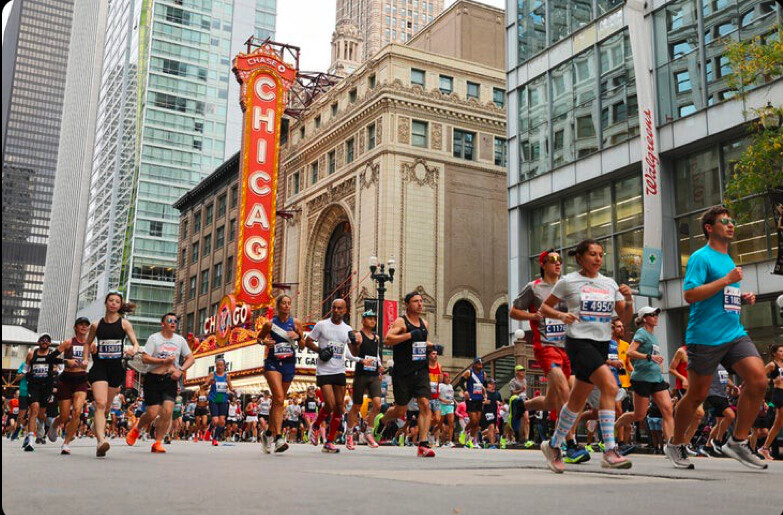
We all get excited about chasing running and fitness objectives in the new year—running your first or next marathon, aiming for a new half-marathon PR, taking on the challenge of a rugged trail race, or simply just getting into the best shape of our lives—but too often we wait until New Year’s Day—or even sometime in the early springtime—to get started.Yep, I’ve been guilty of that, too, a few times! But this year, I started chasing my next-year running goals on November 1. My goals are diverse and personal—getting optimally fit for a 50K trail race in June, running a fast mile on the track in August, and running the Chicago Marathon for the fourth time in October, not to mention spending a summer of doing long adventure runs in the mountains. Starting early and adding structure now will make a big difference in how I’m able to achieve those goals. Yes, if you live in a climate where winter makes running more challenging like I do, it will take some additional effort and sacrifice to get started. But no matter where you live, the juice is worth the squeeze that it will take to get started sooner than later.
After a rough injury-filled year of running in 2024, I decided to put myself through a month-long training camp by focusing on honing core strength and low-key, consistent running during November. Now, with the guidance of a coach, I’ll get into a base-building phase in December with a slightly higher volume of mileage and
2. Don’t Make ResolutionsLook at the new year like a blank canvas or a book of blank pages that you get to fill with whatever you want to accomplish in 2025. Just don’t fall into the trap of making New Year’s resolutions, which typically fail by the third week in January. Instead, build a structured plan based on evolving periodization or have a coach develop a program specifically for you. My only advice is to not set the bar too low. No matter if your goal is to get fit and run your first or next 10K, marathon, or ultra-distance race, make your goals specific so you can adapt along the way. If you’re consistent with your training, there’s a good chance you’ll be able to surpass your initial goals as you develop a solid level of fitness. Believe in yourself, do the work, trust the process, and results will follow.3. Make Plans
To accomplish anything, you need to have a plan. That might start by signing up for a race or two, but that’s the easy part. Getting there and running well takes time and maybe some help. If your goal is to run your fastest marathon sometime next year, how are you going to do it? What training plan are you going to follow? Does it make sense to hire a coach? And does an online or an in-person coach better suit your needs? Who will you run with for your long runs or your hard workouts? Training alone and doing it without guidance can work for some people, but most runners benefit from all the help they can get.4. Be Consistent But Flexible
Mixing training with life is a difficult juggling act and always unpredictable. Even if you’ve meticulously planned your week and have anticipated some of the things that come up, unexpected challenges like work, family, friends, or weather can still disrupt your running routine and throw off your training flow. Being consistent requires a three-part approach in which you’re diligent, flexible, and reasonable. If a work meeting goes long and eliminates your lunchtime run, be prepared to log those miles in the evening. (Or better yet, if you’re able to run before work, you will not regret the early wake-up.)
If inclement weather makes it impossible to do your planned track workout, reconfigure your schedule and do it later in the week or modify your workout to do it on the roads or the treadmill, but don’t just give in and take a day off. Be relentless about your pursuit as much as is reasonably possible. Don’t knock yourself out—if you get sick, rest may be what you need. But prioritize running so you keep heading in the right direction. Here’s where a coach can help ensure you are getting the work in5. Get Stronger
If you want to chase new goals and up-level your running in 2025, you need to make sure your body is strong enough to hold up through the rigors of the miles you’re logging. Working on general and running-specific strength will help you run more efficiently for longer durations and also help reduce the chance of overuse injuries. No matter how fit we are, we gradually lose muscle mass and strength in our late 30s to early 40s. That doesn’t necessarily mean you’ll be getting leaner, but it probably means you’re getting weaker. I made it a point to do 30 minutes of strength work every other day in November. Plus, I added simple strength exercises on the other days and lap swimming two days per week when I could.6. Make Sure You’re Having Fun
No matter if you’re a new runner or a sub-elite speedster, one of your top priorities should be making your running fun. That doesn’t mean you shouldn’t be diligent about training, make necessary sacrifices, and be serious about the goals you’re chasing. It just means that you should enjoy the journey. Because afterall, what’s the point of any of this if it’s not fun? Keeping running fun could look like linking up with friends for early morning runs or hard workouts, joining a local running store or pub run group, planning a post-long run brunch with friends on a weekend morning, listening to your favorite podcasts while clocking easy miles, or going out of your way to discover off-the-beaten-path trails. Not only do those actions add intention to your running, but they also add camaraderie and accountability, too.
For me, the simple notion that I’m doing something for my short-term health (namely moving my body and clearing my mind) and long-term well-being (ideally offsetting long-term health issues from being sedentary) are inherently inspiring and motivating. And the more you get into it, you’ll find that7. Keep Going
Every year of dedication to consistent fitness is like a deposit into your future well-being that not only builds increased aerobic capacity and efficiency but also generates lifelong enthusiasm and long-term health. I was oblivious to that concept in my late 20s and early 30s when my attention span was mostly concerned with the here and now. But I’ve come to realize that my running journey has never been only about training for races on my calendar or what I’m doing in a particular season of a particular year—it’s tied to extending my physical, mental, and emotional longevity.
So, just because there’s a new year on the horizon and you’re all excited to reach specific goals in 2025, remember that you’re on a journey that doesn’t end at the finish line of a goal race or after a certain amount of time. Approach the new year as an investment in your wellness that will (hopefully) extend through the next several decades of your life.
(12/14/2024) ⚡AMPTest your mobility with this fun Internet challenge
The viral tissue box fitness challenge is sweeping social media. Can you do it?
Runners are usually praised for their mobility, but when was the last time you truly put your range of motion to the test? Enter the tissue box challenge–a viral trend sweeping social media. The premise is simple, yet deceptively difficult: stand on one leg, bend over and grab a tissue with your mouth—all without letting your extremities touch the ground.
Running demands a significant range of motion, particularly in the hips, knees and ankles, but if you’re not doing frequent mobility training in addition to your mileage, this challenge could humble you. If you can successfully complete the challenge, congratulations! Clearly, your mobility training is paying off, and your range of motion is top-notch. Keep up the great work—whatever you’re doing is working.

For those of us who didn’t stick the landing (myself included), don’t fuss. There are plenty of low-maintenance ways to improve your mobility. Adding one or two of these exercises to your weekly routine can help prevent injuries and build strength, even if you’re already a strong runner.
Yoga and Pilates
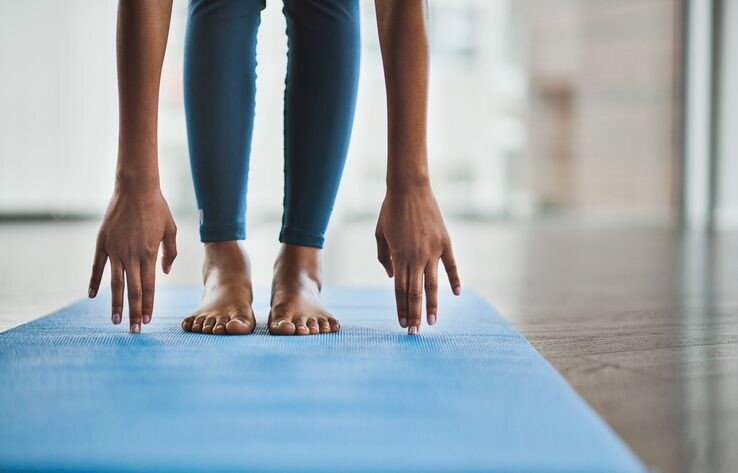
Both practices work on improving flexibility, balance and strength (three things needed for this challenge). You might be saying to yourself, “I don’t have time for that.” Try adding in one 20-minute session a week, and within a month, you’ll be able to see your progress.
Foam rolling
Foam rolling is like an old man yelling at a cloud: no one likes doing it, but regular use after runs and workouts helps relieve tight, sore muscles and improve blood circulation. To improve your mobility for this Internet challenge, focus on rolling your calves, hamstrings, quads and hip flexors.
Mobility drills
Adding mobility drills, such as 90/90 hip switches, ankle dorsiflexion stretches, or balance-focused exercises like single-leg deadlifts or Bulgarian split squats can target those problem areas and improve joint function while strengthening the muscles around your joints.
Whether you mastered the tissue box challenge or not, working on your mobility is always a win. Not only will it make you a better runner, but it’ll also improve your ability to move and do any activity. So, grab a tissue box and give it a shot—then use a few of these tips to keep improving!
(12/13/2024) ⚡AMP
by Marley Dickinson
Doha Marathon by Ooredoo wins World Athletics Gold Label for second time
The Doha Marathon by Ooredoo has been awarded the prestigious World Athletics Gold Label designation, marking its second consecutive year of receiving this honour and reaffirming its position as one of the elite global road races.
The highly anticipated 13th edition, scheduled for January 17, 2025 is poised to be the largest ever, with over 15,000 participants expected.
The Gold Label designation reflects the marathon’s commitment to excellence, meeting the rigorous standards set by the World Athletics Label Road Races programme.These include world-class event organization, featuring advanced timing systems, anti-doping compliance, and comprehensive race amenities such as hydration stations, medical support, and recovery facilities.
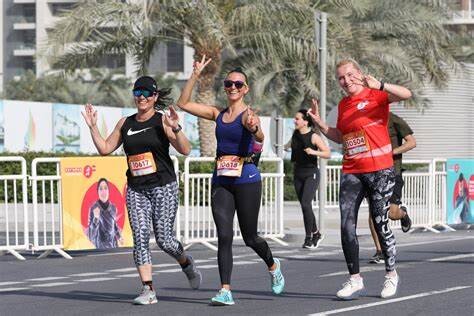
In addition to adherence to safety protocols, and the participation of elite international athletes.With this recognition, the Doha Marathon by Ooredoo stands as a world-class road race offering runners numerous benefits, such as access to certified courses, and opportunities to earn global ranking points.The event also provides qualification opportunities for major international competitions, including the World Championships and the Olympics, while attracting significant global media coverage, enhancing visibility and prestige for participants.
Sabah Rabiah al-Kuwari, Vice-Chairman of the Doha Marathon by Ooredoo Committee at Ooredoo Qatar, commented: “Earning the Gold Label designation for the second year in a row is a significant milestone for the Doha Marathon by Ooredoo and a testament to our commitment to excellence.

This Marathon has grown into a world-class event, uniting international elite athletes and local talent in a shared celebration of health, fitness, and community spirit. It not only enhances the prestige of the event but also further elevates Doha’s standing on the global sporting stage.”The race will feature an iconic route along Doha’s scenic Corniche, starting and finishing at Hotel Park, and will host world-renowned athletes such as Shura Kitata, Solomon Mutai, Roza Dereje, and Joan kipyatich.The event includes four race categories — 5km, 10km, 21km, and 42km — ensuring opportunities for runners of all ages and abilities.
Competitors with disabilities can join races of up to 21km, with free registration available.The popular ‘Al Adaam’ category will also return for its third year next month, offering special cash prizes to encourage local athletes.
Since its inception in 2013, the Doha Marathon by Ooredoo has grown exponentially, reflecting Qatar’s thriving health and fitness culture and its status as a premier destination for major sporting events.
The event has become a local and regional landmark, attracting runners from around the world and contributing significantly to Qatar’s global sporting reputation.
(12/13/2024) ⚡AMPby Gulf Times
Ooredoo Doha Marathon
The Ooredoo Doha Marathon was created to bring the community together, inspire healthier lifestyles, and contribute to impactful charitable causes in Qatar. This annual event is a celebration of fitness, unity, and giving back, attracting participants of all ages and abilities. All proceeds from entry fees are donated to a variety of local charities, ensuring that every step taken supports...
more...Benson Kipruto eyes comeback at Tata 25K after life-changing Paris Olympic glory
Life has changed for the better for Olympic bronze medal-winning Kenyan marathoner Benson Kipruto.
The 33-year-old, who earned a Paris Olympic medal in his debut competition for his country, took a break to soak in the massive euphoria back home.
During this time, he began constructing his dream house -- "now 90% complete" -- and exactly four months later, he is set for his much-anticipated comeback at the Tata Steel World 25K in Kolkata on Sunday to test how his body has adapted.
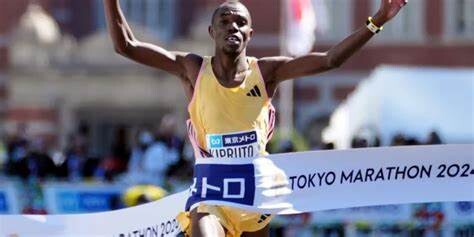
"Life has changed since Paris. I'm now getting a lot of invitations to run in marathons," Kipruto told reporters during an interaction ahead of the race day.
"I'm building a house in a small village near my training place -- it's 90% complete now. This is all thanks to my running achievements," he proudly stated.
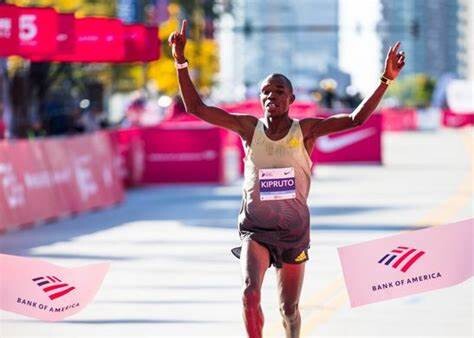
Kipruto was raised by his mother after his father died. He could not always attend school and worked in a farm before trying his luck in running inspired by the success of his elder brother Dickson Chumba.
He went on to win the Boston Marathon in 2021, followed by victories at the Chicago Marathon in 2022 and the Tokyo Marathon in 2024 where he clocked his personal best of 2:02:16. He also claimed second place at the Chicago Marathon in 2023.
Paris Olympics was his first event for Kenya and he won the bronze with a timing of 2:07.00. "After Paris, there was a massive celebration. It was my first time representing my country, and winning a bronze medal was a huge achievement for me. "I had never represented my country in any international event before -- nowhere, never. It was my first time representing Kenya on such a stage, and it felt incredible."
After Paris, Benson took a well-deserved break to recover, skipping other races to focus on his physical and mental well-being. Now, with his sights set on returning to competition, he eyes to dethrone his compatriot Daniel Ebenyo who is also the event record holder. "After Paris, I decided to take a break. I didn't participate in any races for a while. Initially, I was supposed to run in Chicago, but I said no because Paris was tough, and I needed time to recover. "I've now started preparing for my next marathon. That's why I came here to participate and see how my body has adapted after the break," he added.
Asked about his consistency and advice to the youngsters, he said: "Consistency in our sport comes with many things, but the most important is discipline. "Discipline is key. Second is training and being patient. Patience pays off, and that comes from the level of training you commit to," said Kipruto, a fan of two-time Olympic champion Eliud Kipchoge.
"I usually run 25–30 kilometers a day. This routine helps me adapt to marathon running and maintain my performance," he concluded.
(12/13/2024) ⚡AMPby The Week
Kolkata 25k
In Kolkata, a city rich in history, culture and custom, the third Sunday in December is a date that is eagerly anticipated. The Tata Steel Kolkata 25K (TSK 25K) has become synonymous with running in eastern India since it began in 2014. India’s first AIMS-certified race in the unique 25 km distance, the TSK 25K went global in its fourth...
more...London marathon champion eyes season-ending glory in Thailand
The 2024 London Marathon champion Alexander Munyao is hoping to cap off his season with an emphatic victory as he takes on the Bangsaen Half Marathon in Thai- land this Sunday.
After a mixed year on the global stage, Munyao is determined to secure victory and build momentum for a demanding 2025 season.
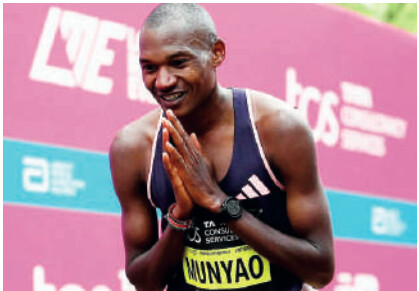
“I am targeting a win in Thailand to close my season on a high note. This will motivate me for the busy 2025 calendar,” Munyao said.
For the 28-year-old, success in Thailand would provide a much-needed confidence boost, especially after finishing a disappointing 21st at the Paris Olympics with a time of 2:10:31.
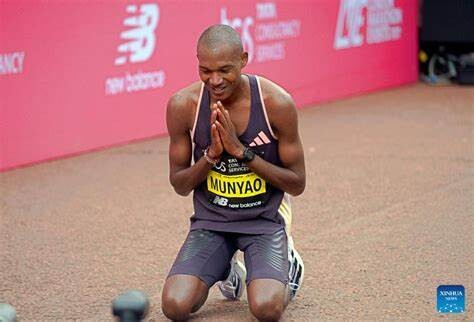
However, Munyao remains wary of the tropical heat that awaits in Thailand, acknowledging it as a critical factor in his race strategy.
“The heat will be a big challenge on race day, with temperatures ranging from 23 to 30 degrees. I am not focused on clocking a fast time, as my goal is purely to win,” he emphasized.
Munyao admits his preparations for the race have been less than ideal, citing limited training time after competing in Japan’s 12 NIT- TAIDAI Challenge Games, where he clocked a 27:42.04 for a runner-up finish in the 10,000m in October.
“My training has been average since I competed in Japan. But I believe the work I have put in will suffice. I will do some light training before Sunday’s race,” he said.
Despite his confidence, he is mindful of the formidable competition.
“I expect tough opposition—it won’t be an easy race. But I’m confident I can pull off a win,” he said.
Munyao carries an impressive half-marathon record into the race, including victories at the 2020 Santa Pola Half Marathon ( 59:09 ) and the 2023 Kagawa Half Marathon ( 59:17 ).
He holds runners-up finishes at the 2020 Ras Al Khaimah ( 59:16 ) and 2021 Adizero Road to Records ( 59:20 ) Half Marathons.
In the women’s race, a titanic battle looms as 2023 Tokyo Marathon champion Rosemary Wanjiru faces off against Ethiopia’s Tigst Assefa, the 2024 Olympic marathon silver medalist.
The two are no strangers to each other’s tactics having clashed at the 2022 Berlin Marathon, where Assefa stormed to victory in a course record of 2:15:37, leaving Wanjiru in second with 2:18:00.
Wanjiru’s road credentials are stellar, highlighted by her 2023 Tokyo Marathon triumph in 2:16:28 and a runner-up finish in 2024, clocking 2:16:14 behind Ethiopia’s Sutume Kebede ( 2:15:55 ).
Meanwhile, Assefa holds back-to-back victories in the Berlin Marathon 2022 ( 2:15:37 ) and 2023 ( 2:11:53 ), as well as runners-up finish at the 2024 London Marathon ( 2:16:23 ).
Joining the fray, is the 2023 Tokyo Legacy Half Marathon champion Gladys Chepkurui, add- ing depth to a star-studded field.
(12/13/2024) ⚡AMPby Teddy Mulei
Bangsaen 21
We woud like to invite all kind of runners from all over the world to join us in the firts an only half marathon "World Athletics Elite Label" Award in Thailand. Bangsaen 21 Half Marathon, ASIA´S best Half Marathon. A single race of Half Marathon distance, experience the most beautiful and challege course along the unique Bangsaen Beach....
more...Newcomers and rising stars headline sixth Adnoc Abu Dhabi Marathon
A number of fresh faces will look to make a mark at the sixth Adnoc Abu Dhabi Marathon with a prize fund of $300,000 up for grabs on Saturday.
Once again, African runners dominate the field but many have not competed against each other, making it a unique race.
Kenyan runner Raymond Choge and Ethiopian Chala Ketema have arrived in the UAE after recording personal best times and are looking forward to doing even better in Abu Dhabi.
Choge ran the Milano Marathon in two hours, seven minutes and 36 seconds to finish second in that race in April. Ketema clocked 2:06:11 to win the Valencia Marathon in 2023.
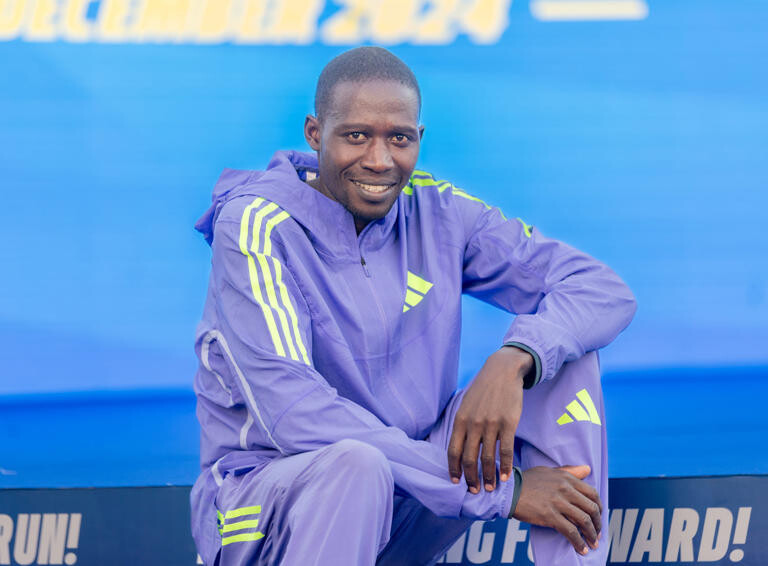
“I have been running marathons for the last six years and it’s not something new to me,” Choge told The National when the elite runners were unveiled at the Adnoc Marathon Village at the Corniche on Thursday.
“The runners in Abu Dhabi are all newcomers and competing in their first marathon in the city. However, we are not new to racing. For me, I’m more confident of a win because I know myself and I believe in myself.
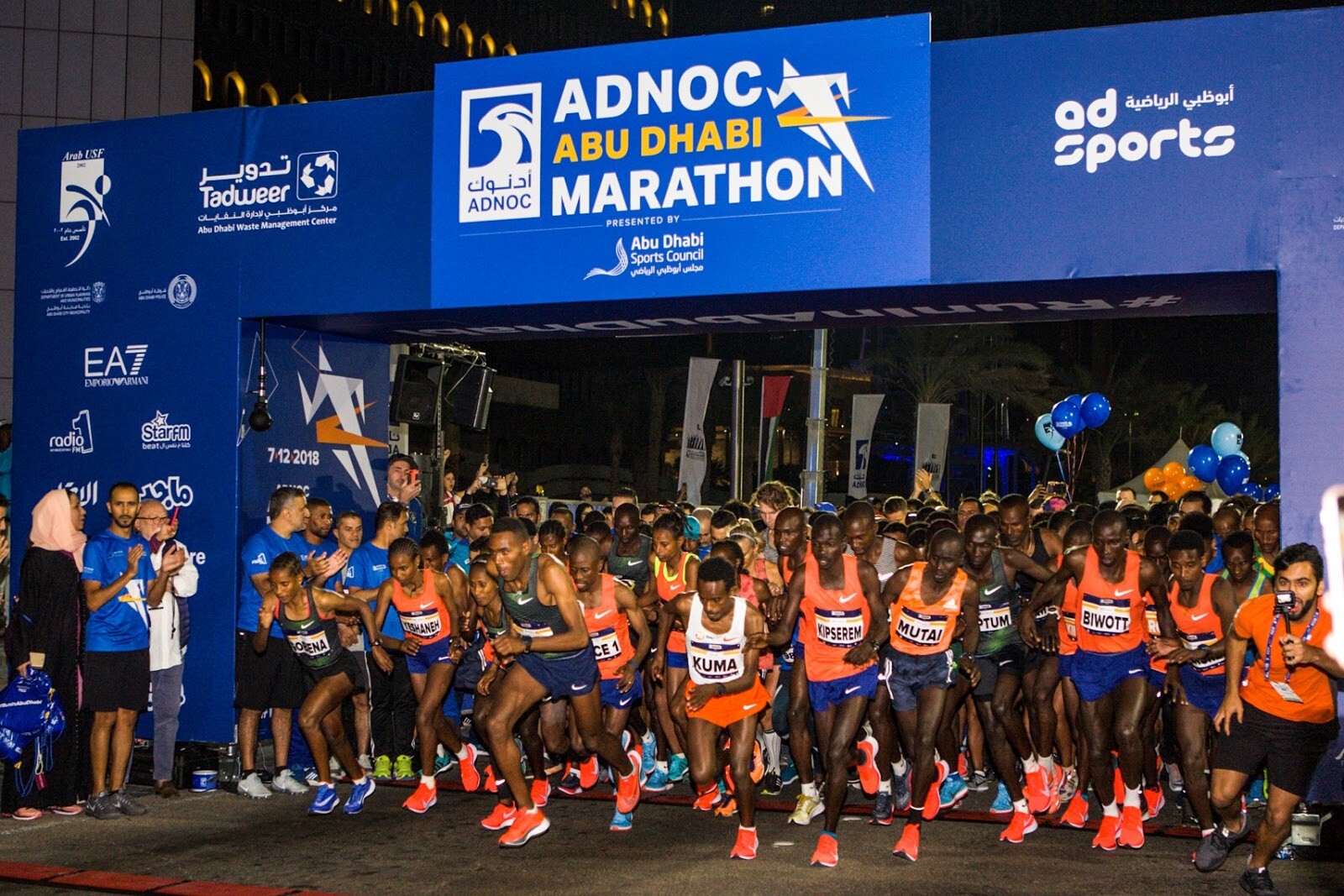
“I've been training well, everything has been going well for me back in Kenya and I'm ready for the next one.”
Choge, 36, runs most of his marathons in Europe and the Kenyan has fallen in love with Abu Dhabi’s beauty and the December weather.
“I have seen the Abu Dhabi Marathons on video but I never expected the city to be so amazing,” he added.
“I would expect the wide flat roads and the cool early morning weather conditions to be conducive for a fast race. I would like to think a personal best for myself.”
Choge is another classic story of a Kenyan long-distance runner overcoming poverty and hardship to reach the top.
“I’m here today as an elite runner, but it took me years and years of hard work and sacrifices to achieve my goals,” he said of his journey as a marathon runner.
“In Kenya, getting into running is very competitive. I was around 15 when I first competed in the 1,500m races back home. It has been running for me all the way through.
“I’m not rich but earn a decent living now as compared to what I had to go through in my teenage days. Now I’m here and competing in one of the elite marathons.”
Ketema, 27, has the same desire and is upbeat of a good run, while also targeting a personal best.
“The weather is pretty similar to back home in Ethiopia and the roads are flat and fast, and the aim is to run a fast race and perhaps go for a personal best,” he said.
Heading the women’s field is Eritrea’s Dolshi Tesfu, who is a two-time Olympian – 2020 Tokyo and Paris this summer.
Tesfu believes she has prepared well to challenge for the crown in Abu Dhabi as the highest profile runner in the women’s race.
“I think I’m going into this race in good shape and with confidence,” she said. “Obviously it’s never going to be easy with some first-time runners in the marathon. At the end, it will be the best on the day. I hope it’s me.”
Catherine Reline Amanang’ole makes her marathon debut after serving as a pacemaker in the London Marathon in 2023.
The Kenyan is the half marathon champion and is expected to pose a strong challenge to Tesfu.
“I have trained well and stepping up in distance,” sh
(12/12/2024) ⚡AMPby Amith Passela
ADNOC Abu Dhabi Marathon
The Abu Dhabi Marathon is shaping up to being first class marathon for both elite runners and average runners as well. Take in the finest aspects of Abu Dhabi's heritage, modern landmarks and the waters of the Arabian Gulf, at this world-class athletics event, set against the backdrop of the Capital's stunning architecture.The race offered runners of all abilities the...
more...Usain Bolt reveals bizarre reason he dropped running 400m
Bolt loved all the short distance races but 400m was never his long-term priority even though he preferred it early in his trophy-laden career.
Jamaican sprint legend Usain Bolt has revealed what made him stop taking part in 400m despite loving the specialty in his formative years.
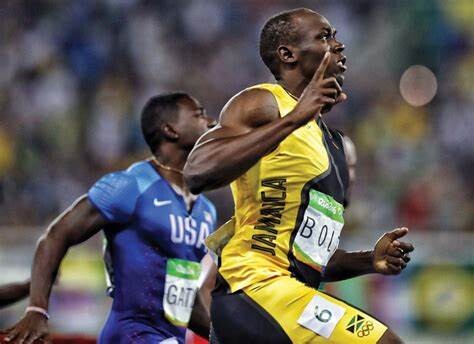
Bolt, the three-time Olympic 100m champion, said his coach Glen Mills was one of many people who felt the younger Bolt was better suited to the longer sprint distance than the marquee 100m event, meaning the 6ft 5ins sprinter almost ended up as a quarter-miler, much to his disgust.
The three-time Olympic 200m champion reiterated that even though he liked 400m, doing away with it and focusing on 100m paid dearly for him going by his record.
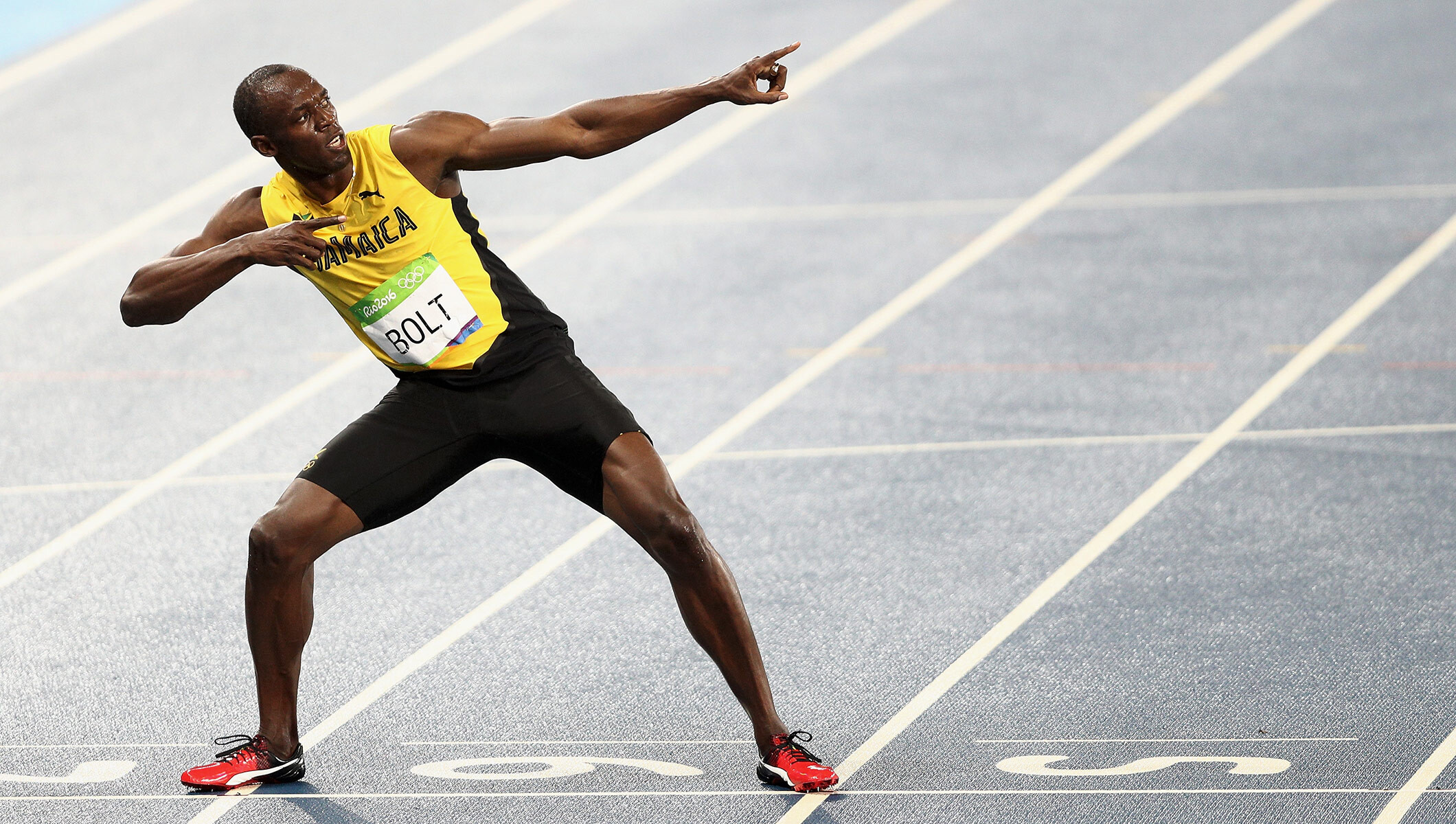
"Running the 400m wasn’t fun at all. It was always pain. But I was good at it, so I used to do it. However much as I did it, though, I never liked it. So I stopped and went back to the 100m. You could say I’m happy it worked out," Bolt told TalkSport.
"The over-distance runs are the hardest thing we do in training, because when you feel that lactic acid you can’t walk, you can’t sit down, you don’t know what to do – it takes a while to get it out of your system,” he added.
The 11-time world champion said time wasn't everything and his focus was always the technique. "All we try to focus on is technique because, the better you get at these things, the better the times will get. When the champs come, then you can try to run fast.”
The 38-year-old is the most successful male athlete of the World Championships. Bolt is the first athlete to win four World Championship titles in the 200m and is one of the most successful in the 100m with three titles, being the first person to run sub-9.7s and sub-9.6s races.
(12/12/2024) ⚡AMPby Evans Ousuru
Oscar Coggins returns to competition with LA28 in mind
The Hong Kong triathlete, who participated in the Tokyo 2020 Olympic Games, has overcome a stage of physical and mental challenges that temporarily took him away from competition last year. Now, with renewed passion, he plans a future full of great goals in which Los Angeles shines with intensity.
In statements to the South China Morning Post, Oscar Coggins reflected on his evolution following a self-imposed pause in his career. "I didn't feel bitterness or sadness watching the Paris Games on television. I accepted that my performance level wasn't there," he explained this week. Although he returned to competition this summer after eight months of inactivity, the triathlete did not take part in the Paris event, as it coincided with the early stages of his comeback.
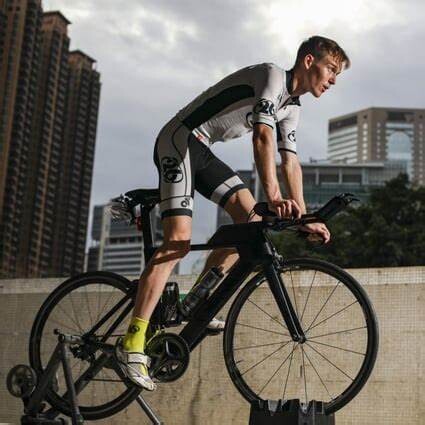
Coggins' return began in May, but it was in September, during his participation in the World Triathlon Championship Series (WTS) in Weihai, that he demonstrated he had completed his recovery process. This achievement marked the start of his comeback to the highest competitive level. "I would have done anything to compete in a WTS again, a year later, against all the best," he admitted, recalling his withdrawal during the 2023 Asian Games.
The athlete also shared how the pause helped him understand the impact of external factors on his performance. As he commented to the South China Morning Post in April, he acknowledged that stress had gone unnoticed for a long time. "If my training had been too intense, the cracks would have shown within weeks, but what I hadn't accounted for was the stress coming from external sources that I was enduring," he explained.
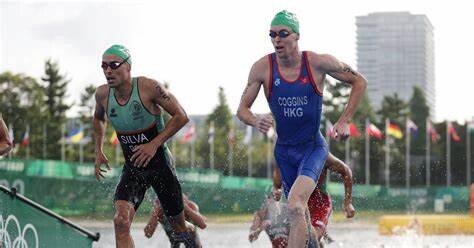
Coggins recounted that reaching this turning point was not easy. During the Asian Games, he abandoned the competition during the swimming stage, realising that his body "just wasn’t there." This episode led him to question his relationship with triathlon. "I thought: 'I hate this sport right now.' But I knew it wasn’t triathlon I hated; it was the negative emotions associated with my recent experiences," he remarked.
The change came alongside seeking professional help, as he turned to a clinical psychologist to manage the expectations he placed on himself and to rediscover his passion for the sport. "Making peace with my failures and mistakes is an ongoing process, but I’m getting better every day," he affirmed.
With a renewed perspective, Coggins is optimistic about both his immediate and long-term goals. Among his aims are participating in next year's National Games and pursuing medals at the 2026 Asian Games. However, his primary focus is on the Los Angeles 2028 Olympics, where he aspires to secure a top-10 finish.
"I'm still in this sport, enjoying it and excited about the competitions, which shows, to some extent, that the process is working," he stated. "I have many years ahead of me and am definitely aiming for Los Angeles 2028."
Coggins' story highlights not only the pressure faced by high-performance athletes but also the importance of addressing mental health. "I recognised there was a problem, and I couldn’t ignore it; I was adding an extra burden that I couldn't bear," he shared.
(12/12/2024) ⚡AMPby Javier Carro
LA 2028 Summer Olympics Games
Discover how the Los Angeles Candidature Committee describes their vision for the Games and the legacy they plan to leave behind: For centuries, people have been following the sun to California – to a coastal paradise of beautiful weather, inspiring landscapes and an ocean of possibilities. Since it was first settled, LA – the City of Angels – has built...
more...Eliud Kipchoge advises athletes on the easiest way to avoid injuries
Eliud Kipchoge has given the easiest tip on how athletes can avoid getting injuries.
Former world marathon record holder Eliud Kipchoge has shared the easiest tip for athletes to follow to avoid getting injuries.
Eliud Kipchoge, in an interview with China Daily, urged athletes to never miss a day in training since that helps strengthen their muscles and mind. He pointed out that skipping training tends to make one weak and an athlete would struggle when it comes to major championships.
Discipline is one of the virtues that Eliud Kipchoge is known for and clearly, it has worked out well for him as he has never in his career, withdrawn from an event due to an injury. However, he has faced a few challenges these recent months, being forced to finish sixth at the 2023 Boston Marathon and 10th at the Tokyo Marathon this year.

The five-time Berlin Marathon champion also failed to finish the race at the Paris Olympic Games, recording his first-ever ‘DNF’ in a race since he started his career.
“It is simple…be consistent in training and try as much as possible not to miss training. even if you miss your 20km run, just try and run for 5km to keep your muscles and mind in the momentum,” Eliud Kipchoge said.
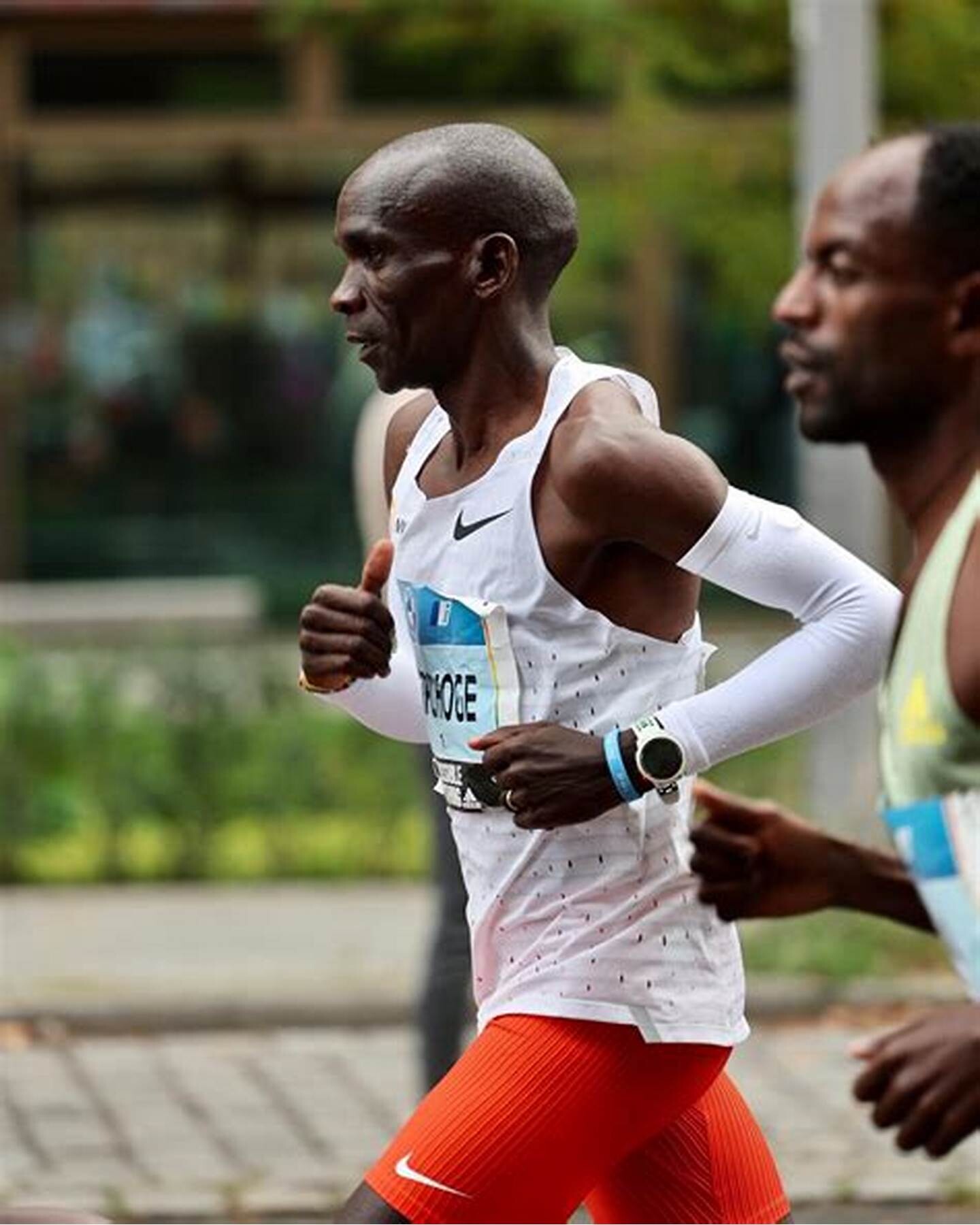
“It’s good to keep going every day and make sure that you train your mind and muscles to run every day. That’s the easiest way to keep away the injuries. The more you run the more you become fit and keep your mind strong…you also get faster.”
Kipchoge added that he views the setbacks in his career as challenges and every day, he works around the clock intending to bounce back stronger. He advised athletes not to let the setbacks affect them but to use them as stepping stones for the next levels of their careers.
“If I fail to achieve what I have been planning for, I treat it as a challenge because you know sports is different, today you are up, tomorrow you are down but we always work hard and plan to be up,” Eliud Kipchoge.
“If anything happens, that’s just a challenge and you have to go back to the drawing board and come again the next day and train for another call and life will move on comfortably.”
(12/12/2024) ⚡AMPby Abigael Wafula
Four fast, fierce strength sessions for runners
The holidays can feel like a whirlwind of festive chaos, with endless social events, last-minute shopping and zero time for your usual training routine. But staying strong doesn’t have to mean spending hours at the gym. These four quick bodyweight strength workouts are tailor-made for runners looking to stay fit without missing out on the holiday cheer.
Each workout is under 20 minutes and can be done at home or on the go—no equipment required. Add these after your regular run, or slide them into your schedule any time, anywhere—just make sure to warm up your muscles beforehand with at least five minutes of quick walking or easy jogging.
1.- 15 minutes to core power
A strong core improves posture and running efficiency.

Plank with shoulder taps: 3 sets of 12 taps per side.Start in a high plank, feet shoulder-width apart. Tap your left shoulder with your right hand, then alternate.
Dead bug: 3 sets of 10 reps.Lie on your back, arms and legs lifted. Lower opposite arm and leg, then switch.

Side plank dips: 2 sets of 8 dips per side.From a side plank, lower your hip slightly, then lift back up.
2.- Balance and mobility boost
Improving your stability can boost running economy while keeping injuries away.
Single-leg deadlifts: 3 sets of 8 per leg.Stand on one leg, hinge forward, keeping your back straight, then return.
Step-through lunges: 2 sets of 10 per leg.Step forward into a lunge, then immediately step backward into a reverse lunge.
Toe-touches to sky reach: 2 sets of 12 reps.Touch your toes, then stretch up to the sky in one smooth motion.
3.- Full-body blitz
These exercises enhance overall strength and build better running mechanics.
Burpees: 2 sets of 8 reps.Start standing, drop to a push-up, then jump back to standing.
Push-ups: 3 sets of 10 reps.Keep your core tight and lower your chest until it’s just above the floor.
Mountain climbers: 3 sets of 20 seconds.From a plank, drive your knees alternately toward your chest.
4.- Quick lower body burn
Boost power for uphill runs and sprints.
Squat jumps: 3 sets of 10 reps.Perform a deep squat, then explode upward, landing softly.
Lunges with a twist: 3 sets of 8 per leg.Step forward into a lunge, twist toward your front leg, return to standing.
Glute bridges: 2 sets of 12 reps.Lie on your back, feet flat, and lift your hips until your body forms a straight line.
(12/12/2024) ⚡AMPby Keeley Milne
Pro runner’s next-level workout on the road to L.A. Olympic medal
The newest member of team New Balance Boston, Parker Valby, has settled into her Boston life with her fellow Olympian training partners and coach Mark Coogan. After setting NCAA records in the outdoor 5,000m and 10,000m, the former Florida Gator began her professional running career as a New Balance athlete. A video posted by FloTrack on Wednesday dove into a soft-surface November workout during the base-building season in the lead-up to the indoor track season–which Valby demolished.
“Most people don’t know Parker as a person,” Coogan said. “They just see her as a runner. She’s a wonderful young lady and she’s fitting in great.” The 22-year-old announced her surprise signing with New Balance in October, unexpectedly straying from Nike after becoming their first female track and field athlete to sign a Name, Image, Likeness (NIL) deal. Industry sources report that Valby’s contract is upwards of USD 700,000 and will be in play until well past the 2028 L.A. Olympic Games.
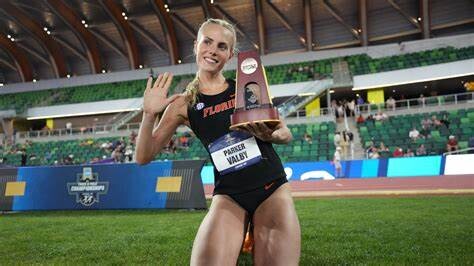
“It was definitely a learning experience,” Valby said about her time at the Paris Olympics. “It was my first time racing outside the NCAA. I’m very grateful for the experience and the lessons I took from it–it wasn’t my ideal performance that I wanted, but I’m happy that I did it in hindsight, so I can be ready for L.A.”
“Parker said she wants to get a medal at the Olympics in L.A.,” Coogan added. “She’s gonna make us better, and hopefully we can make her better and she can do big things in the future.”

The workout path was roughly 1,000m, though Coogan admitted he wasn’t sure of the exact distance. The coach was aiming for the team to have a solid workout where the athletes could stick together. The target effort for the cross-country-style workout was to begin at threshold pace (comfortably hard). Other pro athletes at the practice include Paris Olympian Emily Mackay, 2020 Olympian Heather MacLean, and Coogan’s daughter, Katrina Coogan.
The workout: 3 x (2K, 2 minutes, 1K)
Set 1: 2 loops: 6:38, 1 loop: 3:06
Set 2: 2 loops: 6:20, 1 loop: 3:02
Set 3: 2 loops: 6:01, 1 loop: 2:50
The video shows Valby sharing the lead with her teammates before pulling away from the group during the final set. An extra 1K loop was added on, which Valby completed in 2:53.
Although Valby is younger and less experienced than her teammates, Coogan says she’s a bit stronger than the other women because she comes from a 10,000m background. The other athletes’ main events are 1,500m and 5,000m.
“We work together, we meet in the middle,” Valby said. “Train with others to make yourself better.”
According to MacLean, the team has tried to create a culture of respect and support. “[Parker] brings a fresh new perspective to everything,” she said. “I learned something from her, I hope she learned something from us.”
“Almost like a college cross-country team, we’ve made a team into a family, and I think that’s one of the reasons we’re so successful,” Coogan said. His Instagram revealed that the team hit the indoor track for the first time last week. If all the athletes stay healthy, the whole New Balance Boston team will open their season at the New Balance Grand Prix on Feb. 2.
(12/11/2024) ⚡AMP
by Cameron Ormond
LA 2028 Summer Olympics Games
Discover how the Los Angeles Candidature Committee describes their vision for the Games and the legacy they plan to leave behind: For centuries, people have been following the sun to California – to a coastal paradise of beautiful weather, inspiring landscapes and an ocean of possibilities. Since it was first settled, LA – the City of Angels – has built...
more...Emerging Kenyan star Serem inspired by family’s steeplechase passion
Edmund Serem’s steeplechase triumph at the World U20 Championships in Lima was very much the result of a family effort.
Not only does he have older brother Amos – the 2021 world U20 champion – as a role model, he also has his father to thank for getting him into athletics, and particularly the steeplechase.
“It has always been our dad's dream to see us (Amos and Edmund) achieve what he wanted to achieve for himself as a youth, but didn't due to lack of support,” said Serem.
During their youth, their father took them to several athletics competitions around Kenya, and went on to provide his sons with everything they needed to establish their running careers.

“He would buy training shoes and running apparel and provide transport money for us to attend all the weekend meetings in the region,” recalled Serem, adding that their father chose the steeplechase distance for them.
“He would show us videos of Ezekiel Kemboi, Brimin Kipruto, Conseslus Kipruto and other steeplechasers competing at major championships. He erected barriers for us to practice jumping over and was so careful in choosing the right surfaces for us to do so as he didn't want us to get injured.”
Serem started running at the age of eight. Despite Amos being older than him, Edmund would join his brother on training runs, though would often take a shorter route. “My brother would then have to run faster and try to finish his route in the time it took me to complete the shorter one.”
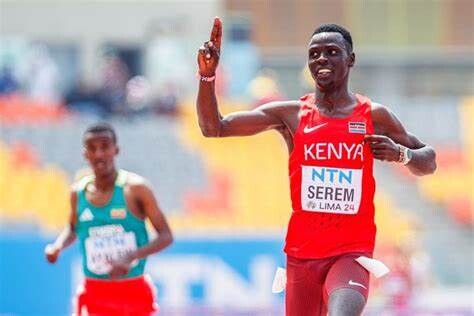
When Amos started high school, the brothers trained under different coaches and environments. Edmund would later join St Patrick's Iten High School and trained under the famous Irish coach, Brother Colm O'Connell.
Edmund missed out on some competitive opportunities during his early high school years due to the Covid pandemic. Amos, meanwhile, went on to train under Patrick Sang in Kaptagat, but fate would bring the two brothers back together again.
They both now train in Kaptagat under coach Sang's programme. Despite being in two separate camps, wearing different brands and under two separate management groups, their training camps are just 600 metres apart and they see one another every morning for their training.
Sibling rivalry
Serem speaks fondly of his brother. While he has no desire to outshine his brother, he always enjoys competing alongside him in races. That feeling appears to be mutual, too.
"Every time my brother and I are in the same race, he usually performs very well,” says Serem. “I don't know if it is because he doesn't want me to beat him or because he feels stronger when I am around him, but I still look forward to racing against him.”
Both brothers have earned world U20 steeplechase titles in recent years. Three years after Amos’s triumph on home soil in Nairobi, Edmund followed in those footsteps by taking the steeplechase gold medal at this year’s World U20 Championships in Lima.
In a race in which 12 of the 16 finalists set PBs, Serem led a Kenyan 1-2 from teammate Mathew Kosgei to win in 8:15.28. Not only is it a world-U20-leading time, it’s also the third fastest in history by an U18 athlete.
He eventually won by more than two seconds, but he had struggled with stomach ache in the heats three days prior.
“After I rehydrated and recovered from the heats, my body felt good for the final,” he says. “I had high hopes of winning the race, and I told myself on the start line that if anyone else wanted to win it, they would have to fight hard for it.”
The performance capped a remarkable season for the 16-year-old. Back in March he finished sixth at the African Games, then he narrowly missed making the team for the Paris Games, finishing fourth at Kenya’s Olympic Trials. Just eight days later, he earned silver at the senior African Championships before ending his season on an even bigger high with his triumph in Lima.
Managing expectations
Having achieved so much at such a young age, and with the steeplechase being one of Kenya’s strongest disciplines, Serem knows that all eyes will be on him and his brother in the coming years. He takes it all in his stride, though.
"Most of my friends and relatives now believe more in me and see our dream to restore the steeplechase glory to Kenya becoming a reality,” he says. “Many are telling me that my brother and I are the potential runners to dominate the steeplechase in the future.”
Apart from two editions of the Games that the country boycotted, Kenya won every Olympic title in the men’s 3000m steeplechase from 1968 to 2016. That streak came to an end in 2021 when Soufiane El Bakkali won gold in Tokyo. The Moroccan has won three more global titles since then, while the world record was broken last year by Ethiopia’s Lamecha Girma.
But Kenya is keen to reassert its dominance on the event.
Serem was one of several up-and-coming talents who were recently invited to meet with Kenya's Cabinet Secretary for Sports and Athletics Kenya senior officials to plan a way forward in ensuring Kenya remains a powerhouse in athletics.
“We talked about strategic plans to nurture and work with the young and emerging stars to maintain Kenya's glory in athletics into the future, especially in the steeplechase,” he said. “In recent years the men's steeplechase has been dominated mostly by Morroco's Soufiane El Bakkali, but we plan to end that.”
Although he’ll be an U20 athlete for two more years, and will be young enough to defend his world U20 title in 2026, Serem already has his eye on competing at the World Athletics Championships Tokyo 25.
“We’re taking things one step at a time,” he says. “The first step will be to make the team at the national trials, and then we will make the plans for the World Championships after that.”
Serem and his training group spent the past month working primarily on gym work before gradually moving to some longer and easier runs to build endurance. He may also participate in some local cross-country races as part of his training.
Heading into next year and beyond, perhaps the biggest motivating factor for both Edmund and Amos will be to accomplish the kind of successes that their father was unable to achieve due to the lack of support back then.
"Our father had a great passion for athletics but didn't get enough support at the time. He has provided Amos and me with everything we’ve needed, telling us, 'I don't want you to lack anything as I did during my time'.
“So I don't care which one of us wins the race,” added Serem of the prospect of racing against his brother in the future. “Because the success will eventually end up at home.”
(12/11/2024) ⚡AMPby Justin Lagat for World Athletics
Grant Fisher to Race Cole Hocker at 2025 Millrose Games in Battle of America’s Best Distance Runners
America’s two best distance runners are set to square off at America’s most prestigious indoor track meet.
On February 8, Grant Fisher will race Cole Hocker over 3,000 meters at the 2025 Millrose Games at the Armory. Fisher is the reigning US champion in the 5,000 and 10,000 meters and a double Olympic medalist. Hocker is the US and Olympic champion in the 1500 meters. Let the hype commence.
Over the last three years, the men’s 3,000 at Millrose has produced some of the best racing of the indoor season. In 2022, Geordie Beamish used a killer kick to upset Hocker and Cooper Teare in the home straight. In 2023, miler Josh Kerr surprisingly stepped up and won in a big pb of 7:33.47, demonstrating the endurance chops that would presage his World Championship 1500 victory six months later. Last year, the event was lengthened to two miles, and Kerr streaked to a world indoor record of 8:00.67 after Fisher tried and failed to break him during the second mile.
The top four finishers at 2024 Millrose would combine to earn seven global medals in 2024. Kerr claimed World Indoor gold in the 3,000 and Olympic silver in the 1500. Fisher, the runner-up in an American record of 8:03.62, took Olympic bronze in the 5,000 and 10,000. Hocker, 3rd in 8:05.70, claimed World Indoor silver and Olympic gold in the 1500. And fourth-placer Beamish (8:05.73) would defeat Hocker to win the World Indoor 1500 title three weeks later in Glasgow.
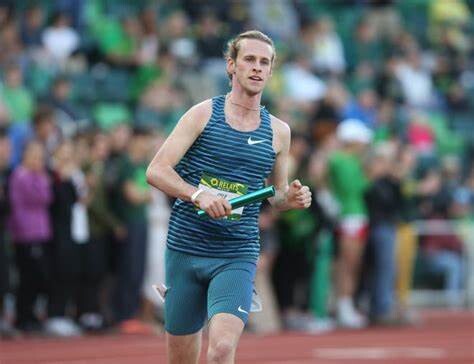
“You look back at that race, that was a pretty loaded field,” Fisher said on this week’s LetsRun.com Track Talk podcast where he announced he would be running Millrose. “Maybe not everyone said that at the time. They might’ve said Josh was the class of the field. But now post-Olympics, you see some people did really, really well throughout that season, and it all kind of started at Milrose at that two-mile. So it’ll be a fun spot to get things rolling again.”
More athletes will be announced as part of the field in the coming weeks, but Fisher versus Hocker should be enough to get any American distance running fan excited. This sort of matchup does not happen often. They were both Foot Locker Cross Country champions as high schoolers. They were both NCAA champions as collegians. They are both national champions as professionals. More than that, Hocker is the fastest American ever in the 1500 meters; Fisher holds the same title in the 3,000, 5,000, and 10,000. They are two of America’s brightest distance talents, now or ever, and they are firmly in their primes.
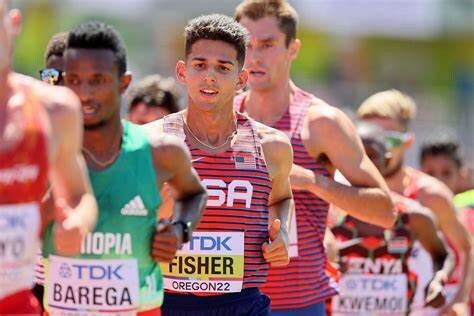
Fisher, 27, and Hocker, 23, did race three times this year, with Fisher prevailing in all three matchups: the 2-mile at Millrose, the 5,000 at the LA Grand Prix on May 17, and the Olympic Trials 5,000 final on June 30. But they’ve never raced each other as Olympic medalists. And that hits different.
Since 1968, four American men have medalled in the Olympic 1500 — Leo Manzano, Matthew Centrowitz, Hocker, and Yared Nuguse. During that same span, only two Americans have medalled in the Olympic 5,000 — Paul Chelimo and Fisher. Only once has one of the 1500 medalists raced one of the 5000 medalists. That came in May 2018, when Chelimo defeated Centrowitz in a 1500 at the Payton Jordan Invitational.
That’s it. Just one matchup between an American 1500 medalist and an American 5,000 medalist in more than half a century. On February 8 at Millrose, we’ll get to see the second, and it will come at the crossover distance of 3,000 meters. In their three battles in 2024, Fisher’s strength prevailed over Hocker’s kick, though Fisher acknowledged he had home-event advantage.
“I didn’t know I was 3-0 against Cole, but to be fair, I’ve never met him at his distance,” Fisher said. “So that gives me a little bit of an advantage. That would be like saying I’m undefeated against him at 10k or something — I don’t think that’s a fair comparison. So yeah, maybe I’ll drop down, race him in a 1500, have it be more of a balanced record to show. But Cole ran incredibly well in the 2-mile last year at Milrose.”
In 2025, however, Hocker will be looking to erase that advantage; he has spoken of wanting to be the best in the world at not just the 1500 meters, but the 5,000 as well. An early showdown against the Olympic bronze medalist is a great way to test the progess he is making.
So who will win on February 8? Hocker’s speed? Fisher’s strength? Or perhaps someone else entirely? We’ll find out in less than two months.
“It will be a really fun opportunity,” Fisher said. “Last year it was fast. I’m sure it’ll be fast this year. So it’s gonna be fun.”
(12/11/2024) ⚡AMPby Jonathan Gault
NYRR Millrose Games
The Pinnacle of Indoor Track & Field The NYRR Millrose Games, first held in 1908, remains the premier indoor track and field competition in the United States. The 2025 edition will once again bring the world’s top professional, collegiate, and high school athletes to New York City for a day of thrilling competition. Hosted at the New Balance Track &...
more...KATA Celebrates 40th Monthly Time Trial with Impressive Performances
The Kenya Athletics Training Academy (KATA) hosted its 40th monthly time trial on December 11, 2024 in Thika Kenya, marking the end-of-year event with exceptional performances from the academy’s athletes. A total of 38 runners participated, including 21 men in the highly competitive 10-kilometer race.
Leading the pack was KATA’s own Zachary Kirika, who crossed the finish line in an outstanding personal best time of 29:17, claiming victory. He was closely followed by his training partner Raphael Karita, who clocked in at 29:36, just shy of his personal best of 29:07.
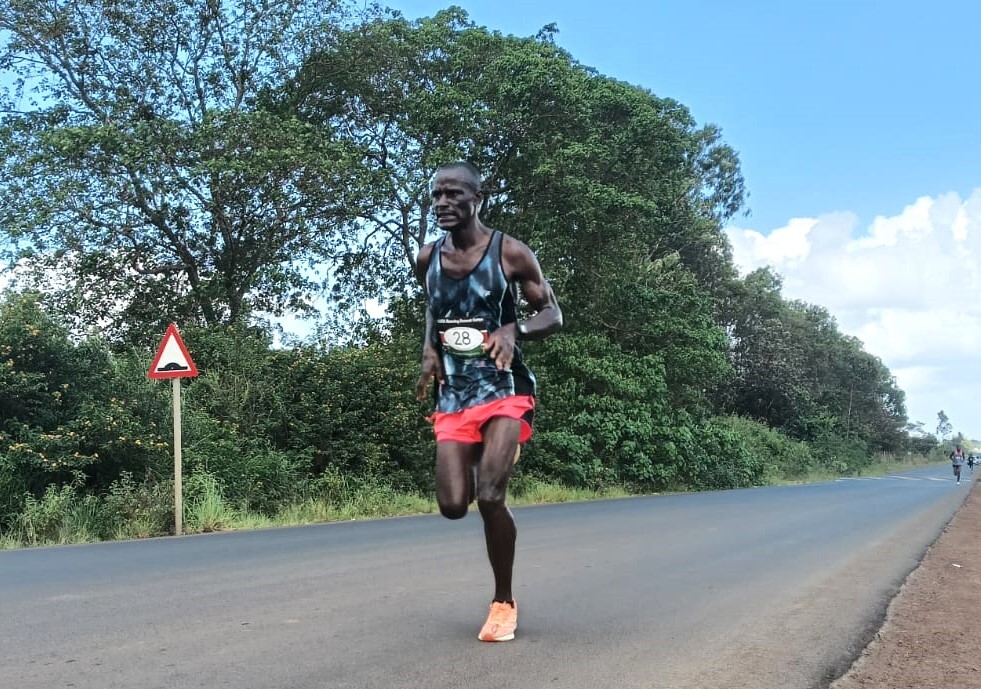
The third-place finisher, Levis Kuria, delivered an inspiring performance, achieving a personal best time of 29:57, shaving over 30 seconds off his previous record. Stephen Ngigi rounded out the top four with another personal best, finishing in 30:23.
“Our team has shown remarkable improvement,” said KATA coach John. “The athletes are consistently delivering incredible times, even in training. This success is a result of strong teamwork, commitment, and the support of our reading team.”
The athletes themselves were thrilled with the day’s results, celebrating their hard work and progress throughout the year. The KATA monthly time trials, held without an entry fee, offer a platform for athletes to showcase their talent and gain exposure to international race opportunities.
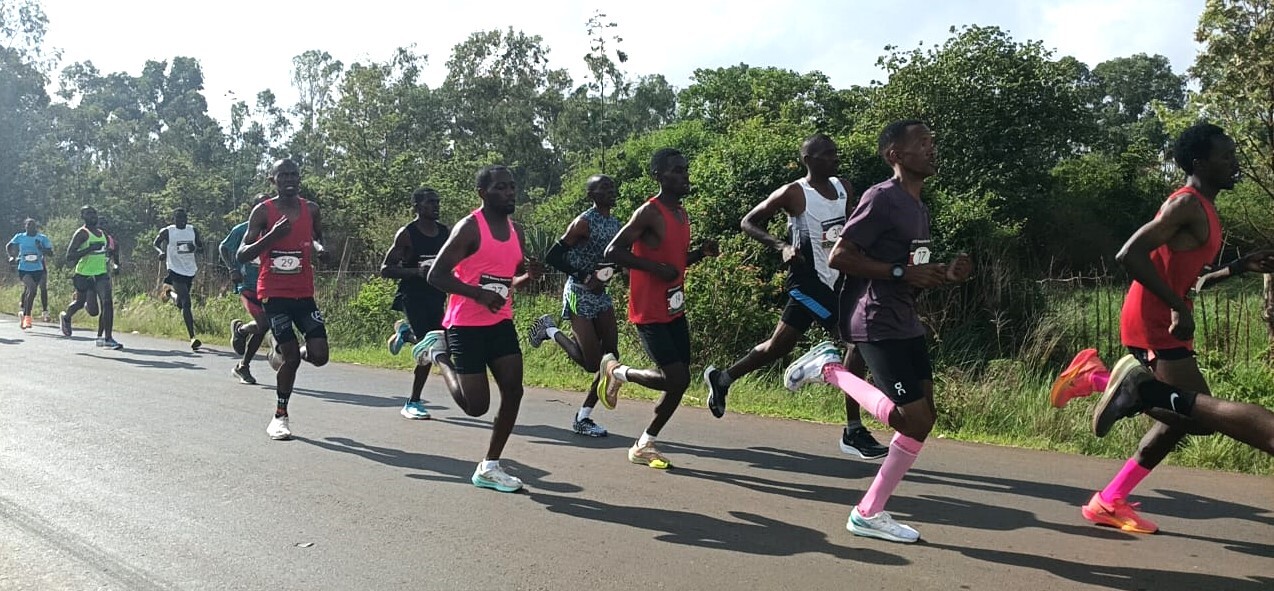
The next time trial is set for January 15, 2025, continuing KATA’s mission to foster excellence in athletics. With 5,000 KES in prize money awarded each month and stories and results posted on My Best Runs, the time trials have become a valuable stepping stone for runners aiming to compete globally.
Stay tuned to My Best Runs for full results and updates as KATA athletes continue their journey to the top!
5km MEN
1 Fred wambua 20 34 17:23
2 Jeremiah obura 20 36 17:47
3 Jackson wambua 15 63 17:59
4 John mutuku 14 32 18:28
5 Julius njoroge 12 1 19:40
6 Samuel kangangi 20 53 19:52
7 Haris mwangi 20 38 20:04
5km WOMEN
1 Susan njuu 38 49 19:12
2 Regina zadiki 17 5 22:54
3 Leachel mutheu 16 66 23:44
10km MEN
1 Zachary kirika 22 29 29:17
2 Raphael karita 24 19 29:36
3 Levis kuria 23 4 29:57
4 Stephen ngigi 20 8 30:23
5 Peter wanyoike 28 30 31:21
6 Michael chege 18 10 31:32
7 Boniface mungai 29 7 31:40
8 Alfred wanjiru 25 37 32:21
9 Paul musau 44 27 32:24
10 Charles ndirangu 24 3 32:41
11 Joseph wanjiru 36 55 33:04
12 Benerd giceha 35 28 33:31
13 kariuki wangari 24 14 33:40
14 Amos chirchir 24 26 33:51
15 crinton otieno 21 35 34:27
16 Ali Rashid 22 42 34:41
17 Ishmile mburu 22 13 34:43
18 peter mukundi 25 21 36.07
19 peter kilonzo 17 22 36:12
20 Charles ndirangu 64 2 37:04
21 William mbugua 21 25 38:10
10km WOMEN
1 carem waithira 37 18 35:20
2 Lilian nyamai 24 11 36:43
3 Karen chepkemoi 23 31 37:18
4 Virginia wanjiru 22 50 37.47
5 Veronica Betty 24 43 41:27
6 Lucy muritu 39 20 44:29
7 Vivian njeri 52 52 49.1
(12/11/2024) ⚡AMP
KATA Time Trial Series
Welcome to the KATA Monthly Time Trial Held at the Kenyan Athletics Training Academy in Thika, Kenya, the KATA Monthly Time Trial is a unique and inclusive event designed to support runners of all levels in achieving their goals and showcasing their fitness. This event offers both 10K and 5K distances on an accurate, certified course, providing participants with...
more...

